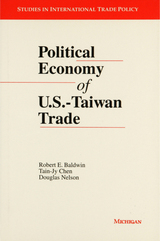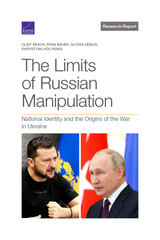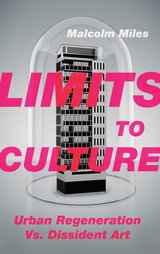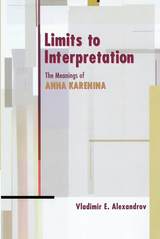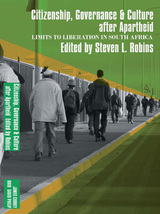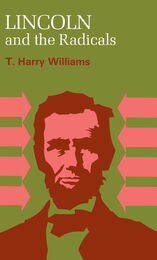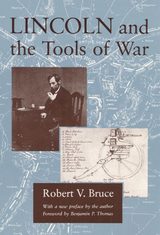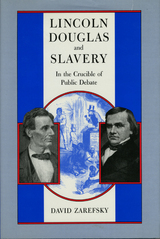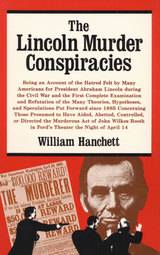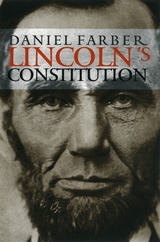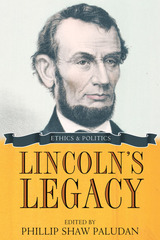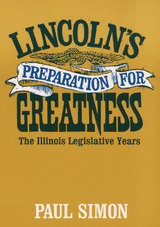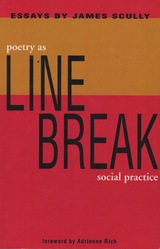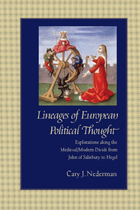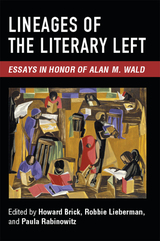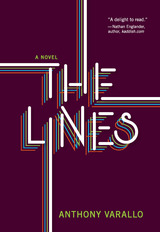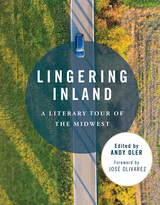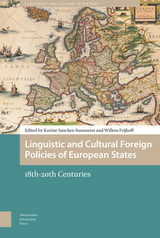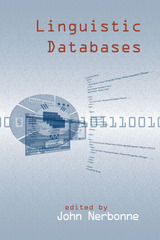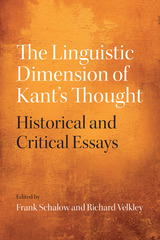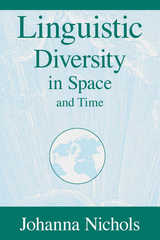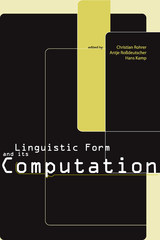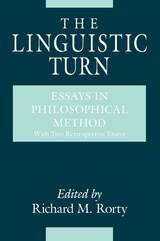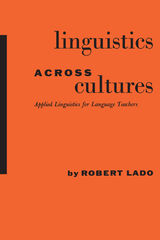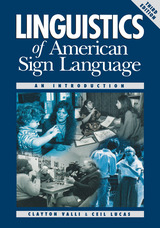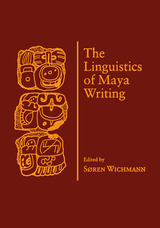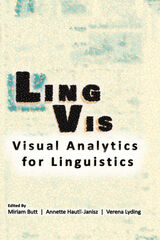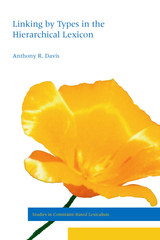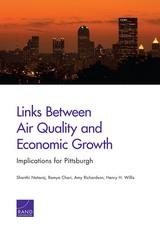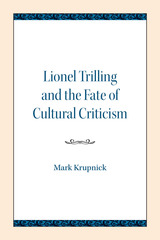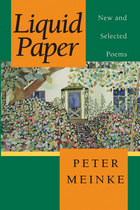 The Limits of Okinawa: Japanese Capitalism, Living Labor, and Theorizations of Community
Wendy Matsumura
Duke University Press, 2015 Since its incorporation into the Japanese nation-state in 1879, Okinawa has been seen by both Okinawans and Japanese as an exotic “South,” both spatially and temporally distinct from modern Japan. In The Limits of Okinawa, Wendy Matsumura traces the emergence of this sense of Okinawan difference, showing how local and mainland capitalists, intellectuals, and politicians attempted to resolve clashes with labor by appealing to the idea of a unified Okinawan community. Their numerous confrontations with small producers and cultivators who refused to be exploited for the sake of this ideal produced and reproduced “Okinawa” as an organic, transhistorical entity. Informed by recent Marxist attempts to expand the understanding of the capitalist mode of production to include the production of subjectivity, Matsumura provides a new understanding of Okinawa's place in Japanese and world history, and it establishes a new locus for considering the relationships between empire, capital, nation, and identity.
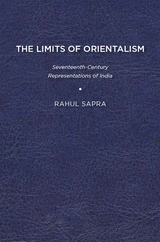 The Limits of Orientalism: Seventeenth-Century Representations of India
Rahul Sapra
University of Delaware Press, 2011 The Limits of Orientalism: Seventeenth-Century Representations of India challenges the recent postcolonial readings of European, predominantly English, representations of India in the seventeenth century. Following Edward Said’s discourse of “Orientalism,” most postcolonial analyses of the seventeenth-century representations of India argue that the natives are represented as barbaric or exotic “others,” imagining these representations as products of colonial ideology. Such approaches tend to offer a homogeneous idea of the “native” and usually equate it with the term “Indian.” Sapra, however, argues that instead of representing all natives as barbaric “others,” the English drew parallels, especially between themselves and the Mughal aristocracy, associating with them as partners in trade and potential allies in war. While the Muslims are from the outset largely portrayed as highly civilized and cultured, early European writers tended to be more conflicted with Hindus, their first highly negative views undergoing a transformation that brings into question any straightforward Orientalist reading of the texts and anticipates the complexity of later representations of the indigenous peoples of the sub-continent. Sapra’s theoretical and methodological approach is influenced by such writers as Aijaz Ahmad and Denis Porter, who have highlighted powerful alternatives to Said’s discourse of “Orientalism.” Sapra historicizes European representations of the indigenous to draw attention to the contrasting approaches of the Portuguese, the Dutch and the English in relation to seventeenth-century India, effectively undermining comfortable notions of a homogenous “West.” Unlike the Portuguese, for whom the idea of a dynasty and the conversion of heathens went hand in hand with the idea of trade, for the Dutch and the English the primary consideration was commercial. In keeping with the commercial approach of the English East India Company, most English travelers, instead of representing the Muslims as barbaric “others,” highlight the compatibility between the two cultures and consistently praise the Mughal empire for its religious tolerance. In the representations of the Hindus, Sapra demonstrates that most writers, even while denigrating the Hindu religion, appreciate the civilized society of the Hindus. Moreover, in the representations of sati or widow-burning, a distinction needs to be made between the patriarchal and the Orientalist points of views, which are at variance with each other. The tension between the patriarchal and the Orientalist positions challenges Gayatri Chakravorty Spivak’s analysis of sati in “Can the Subaltern Speak?” which has become the standard model for most postcolonial appraisals of European representations of sati. The book highlights the lacuna in postcolonial readings by providing access to selections of commonly unavailable early-modern writings by Thomas Roe, Edward Terry, Henry Lord, Thomas Coryate, Alexander Hamilton and other the records of the East India Company, which makes the book vital for students of theory, European and South-Asian history, and Renaissance literatures.
Published by University of Delaware Press. Distributed worldwide by Rutgers University Press.
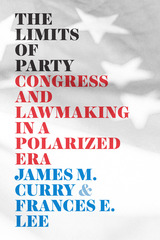 The Limits of Party: Congress and Lawmaking in a Polarized Era
James M. Curry and Frances E. Lee
University of Chicago Press, 2020 To many observers, Congress has become a deeply partisan institution where ideologically-distinct political parties do little more than engage in legislative trench warfare. A zero-sum, winner-take-all approach to congressional politics has replaced the bipartisan comity of past eras. If the parties cannot get everything they want in national policymaking, then they prefer gridlock and stalemate to compromise. Or, at least, that is the conventional wisdom.
In The Limits of Party, James M. Curry and Frances E. Lee challenge this conventional wisdom. By constructing legislative histories of congressional majority parties’ attempts to enact their policy agendas in every congress since the 1980s and by drawing on interviews with Washington insiders, the authors analyze the successes and failures of congressional parties to enact their legislative agendas.
Their conclusions will surprise many congressional observers: Even in our time of intense party polarization, bipartisanship remains the key to legislative success on Capitol Hill. Congressional majority parties today are neither more nor less successful at enacting their partisan agendas. They are not more likely to ram though partisan laws or become mired in stalemate. Rather, the parties continue to build bipartisan coalitions for their legislative priorities and typically compromise on their original visions for legislation in order to achieve legislative success.
 The Limits of Policy Change: Incrementalism, Worldview, and the Rule of Law
Michael T. Hayes
Georgetown University Press Michael Hayes offers a vigorous defense of incrementalism: the theory that the policymaking process typically should involve bargaining, delay, compromise, and, therefore, incremental change. Incrementalism, he argues, is one result of a checks-and-balances system in which politicians may disagree over what we want to achieve as a nation or what policies would best achieve shared goals. Many political scientists have called for reforms that would facilitate majority rule and more radical policy change by strengthening the presidency at the expense of Congress. But Hayes develops policy typologies and analyzes case studies to show that the policy process works best when it conforms to the tenets of incrementalism. He contends that because humans are fallible, politics should work through social processes to achieve limited ends and to ameliorate—rather than completely solve—social problems. Analyzing the evolution of air pollution policy, the failure of President Clinton’s health care reform in 1994, and the successful effort at welfare reform in 1995-96, Hayes calls for changes that would make incrementalism work better by encouraging a more balanced struggle among social interests and by requiring political outcomes to conform to the rule of law. Written for students and specialists in politics, public policy, and public administration, The Limits of Policy Change examines in detail a central issue in democratic theory.
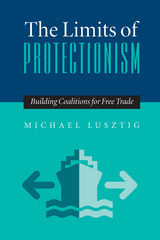 The Limits Of Protectionism: Building Coalitions for Free Trade
Michael Lusztig
University of Pittsburgh Press, 2004
Conventional wisdom holds that free trade is economically beneficial to nations. But this does not prevent industries and interest groups from lobbying their governments for protection, which creates a fear of electoral backlash among politicians hoping to promote free trade. The Limits of Protectionism demonstrates how governments can attain those economic benefits while avoiding the political costs.
Michael Lusztig’s theoretical model focuses on a process by which protectionists can be pushed to restructure and compete in a global economy. In this process, a small cutback in domestic protection leads to lost market shares at home; producers must then turn to overseas exports, and, as the size of foreign profits grow, former protectionists become active advocates for more and greater free trade opportunities.
In a wide-ranging array of case studies—from nineteenth-century Britain to Depression-era United States to contemporary New Zealand, Australia, Brazil, Canada, Chile, and Mexico—Lusztig reveals that, if skillfully handled, governments can eliminate the obstacles to free trade and enjoy continued economic growth without fear of protectionist groups seeking revenge at the ballot box.
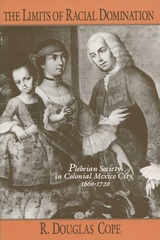 The Limits of Racial Domination: Plebeian Society in Colonial Mexico City, 1660–1720
R. Douglas Cope
University of Wisconsin Press, 1994 In this distinguished contribution to Latin American colonial history, Douglas Cope draws upon a wide variety of sources—including Inquisition and court cases, notarial records and parish registers—to challenge the traditional view of castas (members of the caste system created by Spanish overlords) as rootless, alienated, and dominated by a desire to improve their racial status. On the contrary, the castas, Cope shows, were neither passive nor ruled by feelings of racial inferiority; indeed, they often modified or even rejected elite racial ideology. Castas also sought ways to manipulate their social "superiors" through astute use of the legal system. Cope shows that social control by the Spaniards rested less on institutions than on patron-client networks linking individual patricians and plebeians, which enabled the elite class to co-opt the more successful castas.
The book concludes with the most thorough account yet published of the Mexico City riot of 1692. This account illuminates both the shortcomings and strengths of the patron-client system. Spurred by a corn shortage and subsequent famine, a plebeian mob laid waste much of the central city. Cope demonstrates that the political situation was not substantially altered, however; the patronage system continued to control employment and plebeians were largely left to bargain and adapt, as before.
A revealing look at the economic lives of the urban poor in the colonial era, The Limits of Racial Domination examines a period in which critical social changes were occurring. The book should interest historians and ethnohistorians alike.
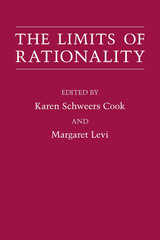 The Limits of Rationality
Edited by Karen Schweers Cook and Margaret Levi
University of Chicago Press, 1990 Prevailing economic theory presumes that agents act rationally when they make decisions, striving to maximize the efficient use of their resources. Psychology has repeatedly challenged the rational choice paradigm with persuasive evidence that people do not always make the optimal choice. Yet the paradigm has proven so successful a predictor that its use continues to flourish, fueled by debate across the social sciences over why it works so well.
Intended to introduce novices to rational choice theory, this accessible, interdisciplinary book collects writings by leading researchers. The Limits of Rationality illuminates the rational choice paradigm of social and political behavior itself, identifies its limitations, clarifies the nature of current controversies, and offers suggestions for improving current models.
In the first section of the book, contributors consider the theoretical foundations of rational choice. Models of rational choice play an important role in providing a standard of human action and the bases for constitutional design, but do they also succeed as explanatory models of behavior? Do empirical failures of these explanatory models constitute a telling condemnation of rational choice theory or do they open new avenues of investigation and theorizing?
Emphasizing analyses of norms and institutions, the second and third sections of the book investigate areas in which rational choice theory might be extended in order to provide better models. The contributors evaluate the adequacy of analyses based on neoclassical economics, the potential contributions of game theory and cognitive science, and the consequences for the basic framework when unequal bargaining power and hierarchy are introduced.
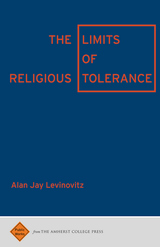 The Limits of Religious Tolerance
Alan Jay Levinovitz
Amherst College Press, 2016 Religion’s place in American public life has never been fixed. As new communities have arrived, as old traditions have fractured and reformed, as cultural norms have been shaped by shifting economic structures and the advance of science, and as new faith traditions have expanded the range of religious confessions within America’s religious landscape, the claims posited by religious faiths—and the respect such claims may demand—have been subjects of near-constant change. In The Limits of Religious Tolerance, Alan Jay Levinovitz pushes against the widely held (and often unexamined) notion that unbounded tolerance must and should be accorded to claims forwarded on the basis of religious belief in a society increasingly characterized by religious pluralism. Pressing at the distinction between tolerance and respect, Levinovitz seeks to offer a set of guideposts by which a democratic society could identify and observe a set of limits beyond which religiously grounded claims may legitimately be denied the expectation of unqualified non-interference.
 The Limits of Revolution: Worker Citizens in a Bolivian Mining City
Elena McGrath
University of Texas Press, 2026 The role of Bolivian mining families in revolution and politics. In 1952, Bolivia’s Revolutionary Nationalist Movement (MNR) swept into power, promising collective prosperity through class-based nationalism. The heroic symbol of the movement was the worker citizen—the formerly indigenous miner who would fuel economic development in a nationalized mining economy. The Limits of Revolution explores this history from the worker barrios of the copper mining city of Corocoro. As the state walked back its promises of worker political power at the national level, mining men and women in Corocoro struggled—through protests, court battles, and barfights—to maintain the benefits of worker citizenship locally. After the MNR fell to a military dictatorship in 1964, however, families retreated to defending the nationalized mining company against an increasingly hostile state. In this battle to keep the revolution alive, the expansive potential of worker citizenship diseappeared and old racial exclusions resurfaced. Largely forgotten today, Bolivia’s experience of revolution exposes the contradictions of postcolonial nationalism and sheds light on Latin America’s transition from Cold War–era class politics to twenty-first-century Pink Tide politics.
The Limits of Russian Manipulation: National Identity and the Origins of the War in Ukraine
Clint Reach
RAND Corporation, 2023 Russia’s manipulation of Ukraine, which culminated in the 2022 invasion, demonstrated that Russia was willing to resort to all means necessary to secure a regional sphere of influence that included Ukraine. But events could have taken a different direction. Using the concept of national identity as a starting point, RAND researchers developed a framework to illuminate the underlying causes of the Russia-Ukraine war.
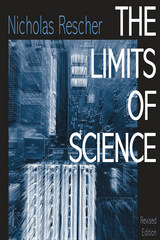 The Limits Of Science: Revised Edition
Nicholas Rescher
University of Pittsburgh Press, 1999 Perfected science is but an idealization that provides a useful contrast to highlight the limited character of what we do and can attain. This lies at the core of various debates in the philosophy of science and Rescher’s discussion focuses on the question: how far could science go in principle—what are the theoretical limits on science? He concentrates on what science can discover, not what it should discover. He explores in detail the existence of limits or limitations on scientific inquiry, especially those that, in principle, preclude the full realization of the aims of science, as opposed to those that relate to economic obstacles to scientific progress. Rescher also places his argument within the politics of the day, where "strident calls of ideological extremes surround us," ranging from the exaggeration that "science can do anything"—to the antiscientism that views science as a costly diversion we would be well advised to abandon. Rescher offers a middle path between these two extremes and provides an appreciation of the actual powers and limitations of science, not only to philosophers of science but also to a larger, less specialized audience.
 The Limits of Scientific Reasoning
David FaustForeword by Paul E. Meehl
University of Minnesota Press, 1984 The Limits of Scientific Reasoning was first published in 1984. Minnesota Archive Editions uses digital technology to make long-unavailable books once again accessible, and are published unaltered from the original University of Minnesota Press editions. The study of human judgment and its limitations is essential to an understanding of the processes involved in the acquisition of scientific knowledge. With that end in mind, David Faust has made the first comprehensive attempt to apply recent research on human judgment to the practice of science. Drawing upon the findings of cognitive psychology, Faust maintains that human judgment is far more limited than we have tended to believe and that all individuals - scientists included—have a surprisingly restricted capacity to interpret complex information. Faust's thesis implies that scientists do not perform reasoning tasks, such as theory evaluation, as well as we assume they do, and that there are many judgments the scientist is expected to perform but cannot because of restrictions in cognitive capacity. "This is a very well-written, timely, and important book. It documents and clarifies, in a very scholarly fashion, what sociologists and psychologists of science have been flirting with for several decades—namely, inherent limitations of scientific judgment," –Michael Mahoney, Pennsylvania State University David Faust is director of psychology at Rhode Island Hospital and a faculty member of the Brown University Medical School. He is co-author of Teaching Moral Reasoning: Theory and Practice.
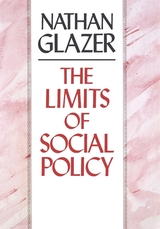 The Limits of Social Policy
Nathan Glazer
Harvard University Press, 1988 Many social policies of the 1960s and 1970s, designed to overcome poverty and provide a decent minimum standard of living for all Americans, ran into trouble in the 1980s—with politicians, with social scientists, and with the American people. Nathan Glazer has been a leading analyst and critic of those measures. Here he looks back at what went wrong, arguing that our social policies, although targeted effectively on some problems, ignored others that are equally important and contributed to the weakening of the structures—family, ethnic and neighborhood ties, commitment to work—that form the foundations of a healthy society. What keeps society going, after all, is that most people feel they should work, however well they might do without working, and that they should take care of their families, however attractive it might appear on occasion to desert them.
Glazer proposes new kinds of social policies that would strengthen social structures and traditional restraints. Thus, to reinforce the incentive to work, he would attach to low-income jobs the same kind of fringe benefits—health insurance, social security, vacations with pay—that now make higher-paying jobs attractive and that paradoxically are already available in some form to those on welfare. More generally, he would reorient social policy to fit more comfortably with deep and abiding tendencies in American political culture: toward volunteerism, privatization, and decentralization.
After a long period of quiescence, social policy and welfare reform are once again becoming salient issues on the national political agenda. Nathan Glazer’s deep knowledge and considered judgment, distilled in this book, will be a source of advice, ideas, and inspiration for citizens and policymakers alike.
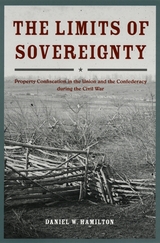 The Limits of Sovereignty: Property Confiscation in the Union and the Confederacy during the Civil War
Daniel W. Hamilton
University of Chicago Press, 2006 Americans take for granted that government does not have the right to permanently seize private property without just compensation. Yet for much of American history, such a view constituted the weaker side of an ongoing argument about government sovereignty and individual rights. What brought about this drastic shift in legal and political thought? Daniel W. Hamilton locates that change in the crucible of the Civil War. In the early days of the war, Congress passed the First and Second Confiscation Acts, authorizing the Union to seize private property in the rebellious states of the Confederacy, and the Confederate Congress responded with the broader Sequestration Act. The competing acts fueled a fierce, sustained debate among legislators and lawyers about the principles underlying alternative ideas of private property and state power, a debate which by 1870 was increasingly dominated by today’s view of more limited government power. Through its exploration of this little-studied consequence of the debates over confiscation during the Civil War, The Limits of Sovereignty will be essential to an understanding of the place of private property in American law and legal history.
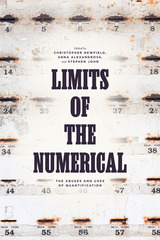 Limits of the Numerical: The Abuses and Uses of Quantification
Edited by Christopher Newfield, Anna Alexandrova, and Stephen John
University of Chicago Press, 2022 This collection examines the uses of quantification in climate science, higher education, and health.
Numbers are both controlling and fragile. They drive public policy, figuring into everything from college rankings to vaccine efficacy rates. At the same time, they are frequent objects of obfuscation, manipulation, or outright denial. This timely collection by a diverse group of humanists and social scientists challenges undue reverence or skepticism toward quantification and offers new ideas about how to harmonize quantitative with qualitative forms of knowledge.
Limits of the Numerical focuses on quantification in several contexts: climate change; university teaching and research; and health, medicine, and well-being more broadly. This volume shows the many ways that qualitative and quantitative approaches can productively interact—how the limits of the numerical can be overcome through equitable partnerships with historical, institutional, and philosophical analysis. The authors show that we can use numbers to hold the powerful to account, but only when those numbers are themselves democratically accountable.
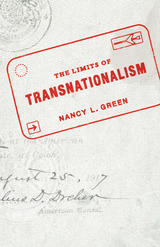 The Limits of Transnationalism
Nancy L. Green
University of Chicago Press, 2019 Transnationalism means many things to many people, from crossing physical borders to crossing intellectual ones. The Limits of Transnationalism reassesses the overly optimistic narratives often associated with this malleable term, revealing both the metaphorical and very real obstacles for transnational mobility. Nancy L. Green begins her wide-ranging examination with the story of Frank Gueydan, an early twentieth-century American convicted of manufacturing fake wine in France who complained bitterly that he was neither able to get a fair trial there nor to enlist the help of US officials. Gueydan’s predicament opens the door for a series of inquiries into the past twenty-five years of transnational scholarship, raising questions about the weaknesses of global networks and the slippery nature of citizenship ties for those who try to live transnational lives. The Limits of Transnationalism serves as a cogent reminder of this topic’s complexity, calling for greater attention to be paid to the many bumps in the road.
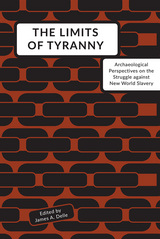 The Limits of Tyranny: Archaeological Perspectives on the Struggle against New World Slavery
James A. Delle
University of Tennessee Press, 2015 The long history of slavery in the Americas has left a wealth of archaeological evidence from excavations of southern and Caribbean plantations. These excavations have largely informed our ideas of African slavery, but, more recently, scholars have also focused on northern slave sites and the various degrees of slavery pertaining not only to Africans but to Native Americans and even European immigrants as well. The Limits of Tyranny brings together nine essays that illuminate the struggles of slaves against the structure of inequality found throughout the Americas in the eighteenth and nineteenth centuries.
These essays use the concept of struggle to explore the archaeological dimensions of various sites in the Caribbean and the American South and Northeast. The actions of the enslaved, both collectively and as individuals, altered or eliminated the social forces that oppressed them. The contributors discuss the physical struggle through slave uprisings and organized rebellions and the moral struggle through historic laws and ethical behavior common in the eighteenth and nineteenth centuries. They also define the limits of oppression and use the material evidence associated with each site to determine the lengths to which slaves would go to fight their enslavement.
The Limits of Tyranny advances the study of the African diaspora and reconsiders the African American experience in terms of dominance and resistance. This volume will appeal to any archaeologist looking to move beyond the common discourse on slavery and assess more closely the African struggle against tyranny.
 The Limits of Utilitarianism
Harlan B. Miller and William H. Williams, Editors
University of Minnesota Press, 1982 The Limits of Utilitarianism was first published in 1982. Minnesota Archive Editions uses digital technology to make long-unavailable books once again accessible, and are published unaltered from the original University of Minnesota Press editions. Many philosophers have argued that utilitarianism is an unacceptable moral theory and that promoting the general welfare is at best only one of the legitimate goals of public policy. Utilitarian principles seem to place no limits on the extent to which society may legitimately interfere with a person's liberties - provided that such actions can be shown to promote the long-term welfare of its members. These issues have played a central role in discussions of utilitarianism since the time of Bentham and Mill. Despite criticisms, utilitarianism remains the most influential and widely accepted moral theory of recent times. In this volume contemporary philosophers address four aspects of utilitarianism: the principle of utility; utilitarianism vis-à-vis contractarianism; welfare; and voluntary cooperation and helping others. The editors provide an introduction and a comprehensive bibliography that covers all books and articles published in utilitarianism since 1930.
Limits to Culture: Urban Regeneration vs. Dissident Art
Malcolm Miles
Pluto Press, 2015 Limits to Culture outlines the cultural turn in urban policy from the 1980s to the 2000s, in which new art museums and cultural or heritage quarters lent a creative mask to urban redevelopment. Malcolm Miles challenges the notions of a creative class and a creative city, aligning them to gentrification, while exploring the history of cultural urban policy and its relationship to the real culture of dissent. As Miles shows, in the 1960s, creativity was identified with revolt, yet beginning in the 1980s it was subsumed by consumerism, as evidenced in the 1990s culture of cool. But in the wake of the 2008 crash, the money has run out and the illusory creative city has given way to urban clearances, ripe for a new kind of artistic regeneration.
Limits to Interpretation: The Meanings of Anna Karenina
Vladimir E. Alexandrov
University of Wisconsin Press, 2017 Vladimir E. Alexandrov advocates a broad revision of the academic study of literature, proposing an adaptive, text-specific approach designed to minimize the circularity of interpretation inherent in the act of reading. He illustrates this method with the example of Tolstoy's classic novel via a detailed "map" of the different possible readings that the novel can support. The novel Anna Karenina emerges as deeply conflicted, polyvalent, and quite unlike what one finds in other critical studies.
Limits to Liberation after Apartheid: Citizenship, Governance, & Culture
Steven L. Robins
Ohio University Press, 2005 Postapartheid South Africa struggles with race tensions, social inequalities, and unemployment that are contributing to widespread crises. In addressing the transition to democracy, Limits to Liberation After Apartheid examines issues of culture and identity, drawing attention to the creative agency of citizens of the “new” South Africa. The writers question the classical western model of citizenship and procedural democracy in the face of the inability of many African states to provide basic needs. Their bold, interdisciplinary inquiry contributes to South African and international scholarship on urban planning, governance, and citizenship.
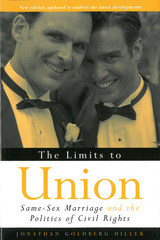 The Limits to Union: Same-Sex Marriage and the Politics of Civil Rights
Jonathan Goldberg-Hiller
University of Michigan Press, 2004 Revised and updated to include the most current information on same-sex marriage, The Limits to Union documents a legal struggle at its moment of greatest historical importance.
"The Limits to Union is a superb book about the complexities of recent political struggles over same-sex marriage. Goldberg-Hiller offers a sophisticated account of egalitarian rights advocacy and the reaction it has generated from established majorities animated by a 'new common sense' of exclusionary sovereign authority. The author's analysis is multidimensional and nuanced, but the core argument is bold, important, and well-supported. I recommend it very highly to everyone interested in understanding the character, possibilities, and constraints of civil rights amid our contemporary culture wars."
-Michael McCann, author of Rights at Work: Pay Equity Reform and the Politics of Legal Mobilization
"In this excellent book, Goldberg-Hiller uses Hawaii's experience to examine the interaction between courts and the political system. . . . Relying on briefs, legislative statements, and interviews with activists from both sides of the question, he views this familiar debate . . . through the unfamiliar prism of gay marriage, which allows him to gauge the viability and the pliability of the American civil rights ideal, and how gay and lesbian issues fit (or don't fit) within that ideal."
-Willian Heinzen, New York Law Journal
"Goldberg-Hiller presents the history of the same-sex marriage question since it first sparked debate in Hawaii. He follows the shifting debate through court cases, state propositions, and state and federal legislatures, considering questions about the constitutionality of the Defense of Marriage Act and the concept of equal protection under the law for gays and lesbians. This detailed treatment of the legal issues surrounding same-sex marriages is highly recommended."
-R. L. Abbott, University of Evansville
"[A] valuable contribution to the field, situating the gay marriage debate in broader contexts of theory, law and practice. [S]ame-sex marriage is an important issue...that finds itself caught in the friction points of much larger debates over the nature of rights, the limits of sovereignty and the proper role of courts and law in a democratic society. The Limits to Union should therefore be of interest even to those who do not think of themselves as interested in gay and lesbian rights issues."
-Evan Gerstmann, Loyola Marymount University, Law and Politics Book Review
 The Limits to Union: Same-Sex Marriage and the Politics of Civil Rights
Jonathan Goldberg-Hiller
University of Michigan Press, 2002 Revised and updated to include the most current information on same-sex marriage, The Limits to Union documents a legal struggle at its moment of greatest historical importance.
"The Limits to Union is a superb book about the complexities of recent political struggles over same-sex marriage. Goldberg-Hiller offers a sophisticated account of egalitarian rights advocacy and the reaction it has generated from established majorities animated by a 'new common sense' of exclusionary sovereign authority. The author's analysis is multidimensional and nuanced, but the core argument is bold, important, and well-supported. I recommend it very highly to everyone interested in understanding the character, possibilities, and constraints of civil rights amid our contemporary culture wars."
-Michael McCann, author of Rights at Work: Pay Equity Reform and the Politics of Legal Mobilization
"In this excellent book, Goldberg-Hiller uses Hawaii's experience to examine the interaction between courts and the political system. . . . Relying on briefs, legislative statements, and interviews with activists from both sides of the question, he views this familiar debate . . . through the unfamiliar prism of gay marriage, which allows him to gauge the viability and the pliability of the American civil rights ideal, and how gay and lesbian issues fit (or don't fit) within that ideal."
-Willian Heinzen, New York Law Journal
"Goldberg-Hiller presents the history of the same-sex marriage question since it first sparked debate in Hawaii. He follows the shifting debate through court cases, state propositions, and state and federal legislatures, considering questions about the constitutionality of the Defense of Marriage Act and the concept of equal protection under the law for gays and lesbians. This detailed treatment of the legal issues surrounding same-sex marriages is highly recommended."
-R. L. Abbott, University of Evansville
"[A] valuable contribution to the field, situating the gay marriage debate in broader contexts of theory, law and practice. [S]ame-sex marriage is an important issue...that finds itself caught in the friction points of much larger debates over the nature of rights, the limits of sovereignty and the proper role of courts and law in a democratic society. The Limits to Union should therefore be of interest even to those who do not think of themselves as interested in gay and lesbian rights issues."
-Evan Gerstmann, Loyola Marymount University, Law and Politics Book Review
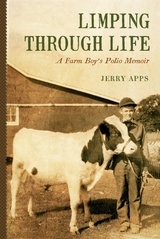 Limping through Life: A Farm Boy’s Polio Memoir
Jerry Apps
Wisconsin Historical Society Press, 2013 Limping through Life
A Farm Boy’s Polio Memoir
Jerry Apps
“Families throughout the United States lived in fear of polio throughout the late 1940s and early 1950s, and now the disease had come to our farm. I can still remember that short winter day and the chilly night when I first showed symptoms. My life would never be the same.”
—from the Introduction
Polio was epidemic in the United States starting in 1916. By the 1930s, quarantines and school closings were becoming common, as isolation was one of the only ways to fight the disease. The Sauk vaccine was not available until 1955; in that year, Wisconsin’s Fox River valley had more polio cases per capita than anywhere in the United States. In his most personal book, Jerry Apps, who contracted polio at age twelve, reveals how the disease affected him physically and emotionally, profoundly influencing his education, military service, and family life and setting him on the path to becoming a professional writer.
A hardworking farm kid who loved playing softball, young Jerry Apps would have to make many adjustments and meet many challenges after that winter night he was stricken with a debilitating, sometimes fatal illness. In Limping through Life he explores the ways his world changed after polio and pays tribute to those family members, teachers, and friends who helped him along the way.
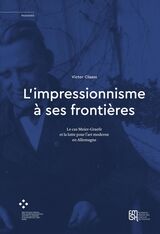 L’impressionnisme à ses frontières: Le cas Meier-Graefe et la lutte pour l’art moderne en Allemagne
Victor Claass
Diaphanes, 2023 Par ses écrits pionniers sur l’histoire du développement de l’art moderne, le critique d’art allemand Julius Meier-Graefe (1867-1935) joua un rôle décisif pour la canonisation de l’impressionnisme dans l’Europe de 1900. En défendant avec subversion et énergie la peinture de Manet, Renoir ou Cézanne outre-Rhin, il se mit à dos les élites conservatrices de l’Empire, qui observaient avec méfiance la propagation des valeurs de la modernité artistique. Tout au long de sa trajectoire franco-allemande, ponctuée de virulentes polémiques et cisaillée par le surgissement de la Première Guerre mondiale, Meier-Graefe lutta contre l’emprise d’un nationalisme obtus sur les récits artistiques. Son projet de régénération de la culture allemande fut ainsi indissociable de ses efforts pour la fédération d’une Europe pacifiée des images. Si le progressisme francophile tout comme le vitalisme de son approche de la peinture ont parfois été soulignés, l’étude de son implication dans les débats politico-culturels de son temps révèle une personnalité plus nuancée. Ce livre analyse ainsi les surprenants à-coups et paradoxes ayant émaillé la carrière transnationale de Meier-Graefe, où alternèrent phases d’enthousiasme débridé et d’intense désillusion. Le personnage s’y dévoile comme un penseur du déclin et le chantre d’une modernité idéalisée, dont l’impressionnisme représentait à la fois la quintessence et le chant du cygne.
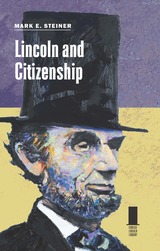 Lincoln and Citizenship
Mark E. Steiner
Southern Illinois University Press, 2021 Exploring Lincoln’s Evolving Views of Citizenship
At its most basic level, citizenship is about who belongs to a political community, and for Abraham Lincoln in nineteenth-century America, the answer was in flux. The concept of “fellow citizens,” for Lincoln, encompassed different groups at different times. In this first book focused on the topic, Mark E. Steiner analyzes and contextualizes Lincoln’s evolving views about citizenship over the course of his political career.
As an Illinois state legislator, Lincoln subscribed to the by-then-outmoded belief that suffrage must be limited to those who met certain obligations to the state. He rejected the adherence to universal white male suffrage that had existed in Illinois since statehood. In 1836 Lincoln called for voting rights to be limited to white people who had served in the militia or paid taxes. Surprisingly, Lincoln did not exclude women, though later he did not advocate giving women the right to vote and did not take women seriously as citizens. The women at his rallies, he believed, served as decoration.
For years Lincoln presumed that only white men belonged in the political and civic community, and he saw immigration through this lens. Because Lincoln believed that white male European immigrants had a right to be part of the body politic, he opposed measures to lengthen the time they would have to wait to become a citizen or to be able to vote. Unlike many in the antebellum north, Lincoln rejected xenophobia and nativism. He opposed black citizenship, however, as he made clear in his debates with Stephen Douglas. Lincoln supported Illinois’s draconian Black Laws, which prohibited free black men from voting and serving on juries or in the militia. Further, Lincoln supported sending free black Americans to Africa—the ultimate repudiation and an antithesis of citizenship.
Yet, as president, Lincoln came to embrace a broader vision of citizenship for African Americans. Steiner establishes how Lincoln’s meetings at the White House with Frederick Douglass and other black leaders influenced his beliefs about colonization, which he ultimately disavowed, and citizenship for African Americans, which he began to consider. Further, the battlefield success of black Union soldiers revealed to Lincoln that black men were worthy of citizenship. Lincoln publicly called for limited suffrage among black men, including military veterans, in his speech about Reconstruction on April 11, 1865. Ahead of most others of his era, Lincoln showed just before his assassination that he supported rights of citizenship for at least some African Americans.
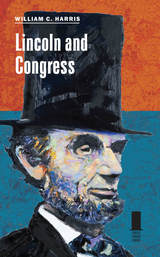 Lincoln and Congress
William C. Harris
Southern Illinois University Press, 2017 Winner, ISHS Annual Award for a Scholarly Publication, 2018
In Lincoln and Congress, William C. Harris reveals that the relationship between the president and Congress, though sometimes contentious, was cooperative rather than adversarial. During his time as president, Abraham Lincoln embodied his personal conviction that the nation’s executive should not interfere with the work of the legislature, and though often critical of him privately, in public congressional leaders compromised with and assisted the president to unite the North and minimize opposition to the war.
Despite the turbulence of the era and the consequent tensions within the government, the executive and legislative branches showed restraint in their dealings with each other. In fact, except in his official messages to Congress, Lincoln rarely lobbied for congressional action, and he vetoed only one important measure during his tenure as president. Many congressmen from Lincoln’s own party, although publicly supportive, doubted his leadership and sought a larger role for Congress in setting war policies. Though they controlled Congress, Republican legislators frequently differed among themselves in shaping legislation and in their reactions to events as well as in their relationships both with each other and with the president. Harris draws intriguing sketches of nineteenth-century congressional leaders and shows that, contrary to what historians have traditionally concluded, radical Republicans such as Representative Thaddeus Stevens and Senator Charles Sumner did not dominate their party or Congress. Harris includes the minority party’s role, showing that Northern Democrats and conservative Unionists of the border states generally opposed Republican policies but worked with them on support for the troops and on nonwar issues like the Pacific Railroad Bill.
Lincoln and Congress sheds new light on the influence of members of Congress and their relationship with Lincoln on divisive issues such as military affairs, finance, slavery, constitutional rights, reconstruction, and Northern political developments. Enjoyable both for casual Civil War readers and professional historians, this book provides an engaging narrative that helps readers redefine and understand the political partnership that helped the Union survive.
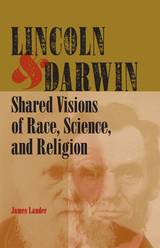 Lincoln and Darwin: Shared Visions of Race, Science, and Religion
James Lander
Southern Illinois University Press, 2010 Born on the same day in 1809, Abraham Lincoln and Charles Darwin were true contemporaries. Though shaped by vastly different environments, they had remarkably similar values, purposes, and approaches. In this exciting new study, James Lander places these two iconic men side by side and reveals the parallel views they shared of man and God. While Lincoln is renowned for his oratorical prowess and for the Emancipation Proclamation, as well as many other accomplishments, his scientific and technological interests are not widely recognized; for example, many Americans do not know that Lincoln is the only U.S. president to obtain a patent. Darwin, on the other hand, is celebrated for his scientific achievements but not for his passionate commitment to the abolition of slavery, which in part drove his research in evolution. Both men took great pains to avoid causing unnecessary offense despite having abandoned traditional Christianity. Each had one main adversary who endorsed scientific racism: Lincoln had Stephen A. Douglas, and Darwin had Louis Agassiz. With graceful and sophisticated writing, Lander expands on these commonalities and uncovers more shared connections to people, politics, and events. He traces how these two intellectual giants came to hold remarkably similar perspectives on the evils of racism, the value of science, and the uncertainties of conventional religion. Separated by an ocean but joined in their ideas, Lincoln and Darwin acted as trailblazers, leading their societies toward greater freedom of thought and a greater acceptance of human equality. This fascinating biographical examination brings the mid-nineteenth-century discourse about race, science, and humanitarian sensibility to the forefront using the mutual interests and pursuits of these two historic figures.
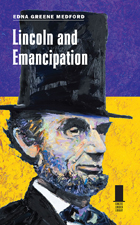 Lincoln and Emancipation
Edna Greene Medford
Southern Illinois University Press, 2015 In this succinct study, Edna Greene Medford examines the ideas and events that shaped President Lincoln’s responses to slavery, following the arc of his ideological development from the beginning of the Civil War, when he aimed to pursue a course of noninterference, to his championing of slavery’s destruction before the conflict ended. Throughout, Medford juxtaposes the president’s motivations for advocating freedom with the aspirations of African Americans themselves, restoring African Americans to the center of the story about the struggle for their own liberation. Lincoln and African Americans, Medford argues, approached emancipation differently, with the president moving slowly and cautiously in order to save the Union while the enslaved and their supporters pressed more urgently for an end to slavery. Despite the differences, an undeclared partnership existed between the president and slaves that led to both preservation of the Union and freedom for those in bondage. Medford chronicles Lincoln’s transition from advocating gradual abolition to campaigning for immediate emancipation for the majority of the enslaved, a change effected by the military and by the efforts of African Americans. The author argues that many players—including the abolitionists and Radical Republicans, War Democrats, and black men and women—participated in the drama through agitation, military support of the Union, and destruction of the institution from within. Medford also addresses differences in the interpretation of freedom: Lincoln and most Americans defined it as the destruction of slavery, but African Americans understood the term to involve equality and full inclusion into American society. An epilogue considers Lincoln’s death, African American efforts to honor him, and the president’s legacy at home and abroad. Both enslaved and free black people, Medford demonstrates, were fervent participants in the emancipation effort, showing an eagerness to get on with the business of freedom long before the president or the North did. By including African American voices in the emancipation narrative, this insightful volume offers a fresh and welcome perspective on Lincoln’s America.
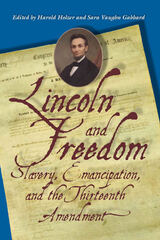 Lincoln and Freedom: Slavery, Emancipation, and the Thirteenth Amendment
Edited by Harold Holzer and Sara Vaughn Gabbard
Southern Illinois University Press, 2007 Lincoln’s reelection in 1864 was a pivotal moment in the history of the United States. The Emancipation Proclamation had officially gone into effect on January 1, 1863, and the proposed Thirteenth Amendment had become a campaign issue. Lincoln and Freedom: Slavery, Emancipation, and the Thirteenth Amendment captures these historic times, profiling the individuals, events, and enactments that led to slavery’s abolition. Fifteen leading Lincoln scholars contribute to this collection, covering slavery from its roots in 1619 Jamestown, through the adoption of the Constitution, to Abraham Lincoln’s presidency. This comprehensive volume, edited by Harold Holzer and Sara Vaughn Gabbard, presents Abraham Lincoln’s response to the issue of slavery as politician, president, writer, orator, and commander-in-chief. Topics include the history of slavery in North America, the Supreme Court’s Dred Scott decision, the evolution of Lincoln’s view of presidential powers, the influence of religion on Lincoln, and the effects of the Emancipation Proclamation. This collection effectively explores slavery as a Constitutional issue, both from the viewpoint of the original intent of the nation’s founders as they failed to deal with slavery, and as a study of the Constitutional authority of the commander-in-chief as Lincoln interpreted it. Addressed are the timing of Lincoln’s decision for emancipation and its effect on the public, the military, and the slaves themselves. Other topics covered include the role of the U.S. Colored Troops, the election campaign of 1864, and the legislative debate over the Thirteenth Amendment. The volume concludes with a heavily illustrated essay on the role that iconography played in forming and informing public opinion about emancipation and the amendments that officially granted freedom and civil rights to African Americans. Lincoln and Freedom provides a comprehensive political history of slavery in America and offers a rare look at how Lincoln’s views, statements, and actions played a vital role in the story of emancipation.
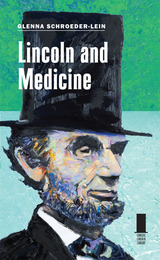 Lincoln and Medicine
Glenna R. Schroeder-Lein
Southern Illinois University Press, 2012 The life of America’s sixteenth president has continued to fascinate the public since his tragic death. Now, Glenna R. Schroeder-Lein unveils an engaging volume on the medical history of the Lincoln family. Lincoln and Medicine,the first work on the subject in nearly eighty years, investigates the most enduring controversies about Lincoln’s mental health, physical history, and assassination; the conditions that afflicted his wife and children, both before and after his death; and Lincoln’s relationship with the medical field during the Civil War, both as commander-in-chief and on a personal level. Since his assassination in 1865, Lincoln has been diagnosed with no less than seventeen conditions by doctors, historians, and researchers, including congestive heart failure, epilepsy, Marfan syndrome, and mercury poisoning. Schroeder-Lein offers objective scrutiny of the numerous speculations and medical mysteries that continue to be associated with the president’s physical and mental health, from the recent interest in testing Lincoln’s DNA and theories that he was homosexual, to analysis of the deep depressions, accidents, and illnesses that plagued his early years. Set within the broader context of the prevailing medical knowledge and remedies of the era, Lincoln and Medicine takes into account new perspectives on the medical history of Abraham Lincoln and his family, offering an absorbing and informative view into a much-mythologized, yet underinvestigated, dimension of one of the nation’s most famous leaders.
Best of the Best by the Univeristy Press Books for Public and Secondary School Libraries, 2013
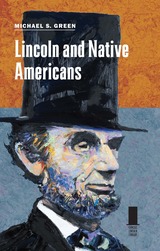 Lincoln and Native Americans
Michael S. Green
Southern Illinois University Press, 2021 First exploration of Lincoln’s relationship with the Native population in more than four decades
President Abraham Lincoln ordered the largest mass execution of Indigenous people in American history, following the 1862 uprising of hungry Dakota in Minnesota and suspiciously speedy trials. He also issued the largest commutation of executions in American history for the same act. But there is much more to the story of Lincoln’s interactions and involvement, personal and political, with Native Americans, as Michael S. Green shows. His evenhanded assessment explains how Lincoln thought about Native Americans, interacted with them, and was affected by them.
Although ignorant of Native customs, Lincoln revealed none of the hatred or single-minded opposition to Native culture that animated other leaders and some of his own political and military officials. Lincoln did far too little to ease the problems afflicting Indigenous people at the time, but he also expressed more sympathy for their situation than most other politicians of the day. Still, he was not what those who wanted legitimate improvements in the lives of Native Americans would have liked him to be. At best, Lincoln’s record is mixed. He served in the Black Hawk War against tribes who were combating white encroachment. Later he supported policies that exacerbated the situation. Finally, he led the United States in a war that culminated in expanding white settlement. Although as president, Lincoln paid less attention to Native Americans than he did to African Americans and the Civil War, the Indigenous population received considerably more attention from him than previous historians have revealed. In addition to focusing on Lincoln’s personal and familial experiences, such as the death of his paternal grandfather at the hands of Indians, Green enhances our understanding of federal policies toward Native Americans before and during the Civil War and how Lincoln’s decisions affected what came after the war. His patronage appointments shaped Indian affairs, and his plans for the West would also have vast consequences. Green weighs Lincoln’s impact on the lives of Native Americans and imagines what might have happened if Lincoln had lived past the war’s end. More than any many other historians, Green delves into Lincoln’s racial views about people of color who were not African American.
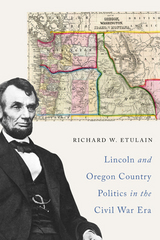 Lincoln and Oregon Country Politics in the Civil War Era
Richard W. Etulain
Oregon State University Press, 2013 “Once again, historian Richard Etulain has provided a scholarly, lively, and definitive look at Lincoln and the Pacific Northwest. Lincoln himself thought the ‘Far Corner’ of Oregon simply too far to become his own home, but his close ties to many friends who did migrate there remained important in both elections and war. Etulain re-creates the pioneer spirit and political fractiousness of Oregon with a keen eye for both the sweep of history and the small anecdotes that make the best history books irresistible.”
—Harold Holzer, Chairman, Lincoln Bicentennial Foundation
This cross-continental history demonstrates Abraham Lincoln’s strong connections with the Oregon Country on various political issues—Indian relations, military policies, civil and legal rights, and North-South ideological conflicts—before and during the Civil War years. Richard Etulain refutes the argument that Pacific Northwest residents were mere “spectators of disunion,” revealing instead that men and women of the Oregon Country were personally and emotionally involved in the controversial ideas and events that inflamed the United States during the fractious era. Etulain’s well-researched and clearly told story demonstrates how links between Washington, D.C., and the Oregon Country helped shape both Lincoln’s policies and Oregon politics.
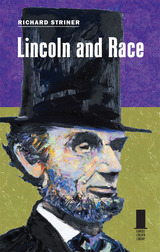 Lincoln and Race
Richard Striner
Southern Illinois University Press, 2012 Named on the 2013 list of University Press Books for Public and Secondary Schools
Abraham Lincoln is known as the Great Emancipator, yet his personal views on race have long been debated. Since his death, his legend has been shadowed by the mystery of his true stance toward non-whites. While Lincoln took many actions to fight slavery throughout his political career, his famously crafted speeches can be interpreted in different ways: at times his words suggest personal bigotry, but at other times he sounds like an enemy of racists. In Lincoln and Race, Richard Striner takes on one of the most sensitive subjects of Abraham Lincoln’s legacy, exploring in depth Lincoln’s mixed record and writings on the issue of race. Striner gives fair hearing to two prevailing theories about Lincoln’s seemingly contradictory words and actions: Did Lincoln fight a long-term struggle to overcome his personal racism? Or were his racist comments a calculated act of political deception? Beginning with an exploration of the historical context of Lincoln’s attitudes toward race in the years before his presidency, Striner details the ambiguity surrounding the politician’s participation in the Free Soil Movement and his fight to keep slavery from expanding into the West. He explores Lincoln’s espousal of colonization—the controversial idea that freed slaves should be resettled in a foreign land—as a voluntary measure for black people who found the prospect attractive. The author analyzes some of Lincoln’s most racially charged speeches and details Lincoln’s presidential words and policies on race and the hotbed issue of voting rights for African Americans during the last years of the president’s life. A brief but comprehensive look into one of the most contentious quandaries about Abraham Lincoln, Lincoln and Race invites readers to delve into the mind, heart, and motives of one of America’s most fascinating and complex leaders.
University Press Books for Public and Secondary Schools 2013 edition
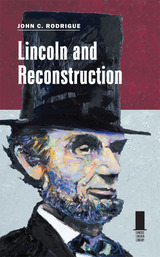 Lincoln and Reconstruction
John C. Rodrigue
Southern Illinois University Press, 2013 Although Abraham Lincoln dominates the literature on the American Civil War, he remains less commonly associated with reconstruction. Previous scholarly works touch on Lincoln and reconstruction, but they tend either to speculate on what Lincoln might have done after the war had he not been assassinated or to approach his reconstruction plans merely as a means of winning the war. In this thought-provoking study, John C. Rodrigue offers a succinct but significant survey of Lincoln’s wartime reconstruction initiatives while providing a fresh interpretation of the president’s plans for postwar America. Revealing that Lincoln concerned himself with reconstruction from the earliest days of his presidency, Rodrigue details how Lincoln’s initiatives unfolded, especially in the southern states where they were attempted. He explores Lincoln’s approach to various issues relevant to reconstruction, including slavery, race, citizenship, and democracy; his dealings with Congressional Republicans, especially the Radicals; his support for and eventual abandonment of colonization; his dealings with the border states; his handling of the calls for negotiations with the Confederacy as a way of reconstructing the Union; and his move toward emancipation and its implications for his approach to reconstruction. As the Civil War progressed, Rodrigue shows, Lincoln’s definition of reconstruction transformed from the mere restoration of the seceded states to a more fundamental social, economic, and political reordering of southern society and of the Union itself. Based on Lincoln’s own words and writings as well as an extensive array of secondary literature, Rodrigue traces the evolution of Lincoln’s thinking on reconstruction, providing new insight into a downplayed aspect of his presidency.
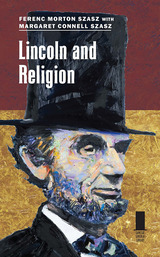 Lincoln and Religion
Ferenc Morton Szasz with Margaret Connell Szasz
Southern Illinois University Press, 2014 Abraham Lincoln’s faith has commanded more broad-based attention than that of any other American president. Although he never joined a denomination, Baptists, Presbyterians, Quakers, Episcopalians, Disciples of Christ, Spiritualists, Jews, and even atheists claim the sixteenth president as one of their own. In this concise volume, Ferenc Morton Szasz and Margaret Connell Szasz offer both an accessible survey of the development of Lincoln’s religious views and an informative launch pad for further academic inquiry. A singular key to Lincoln’s personality, especially during the presidential years, rests with his evolving faith perspective. After surveying Lincoln’s early childhood as a Hard-Shell Baptist in Kentucky and Indiana, the authors chronicle his move from skepticism to participation in Episcopal circles during his years in Springfield, and, finally, after the death of son Eddie, to Presbyterianism. They explore Lincoln’s relationship with the nation’s faiths as president, the impact of his son Willie’s death, his adaptation of Puritan covenant theory to a nation at war, the role of prayer during his presidency, and changes in his faith as reflected in the Emancipation Proclamation and his state papers and addresses. Finally, they evaluate Lincoln’s legacy as the central figure of America’s civil religion, an image sharpened by his prominent position in American currency. A closing essay by Richard W. Etulain traces the historiographical currents in the literature on Lincoln and religion, and the volume concludes with a compilation of Lincoln’s own words about religion. In assessing the enigma of Lincoln’s Christianity, the authors argue that despite his lack of church membership, Lincoln lived his life through a Christian ethical framework. His years as president, dominated by the Civil War and personal loss, led Lincoln to move into a world beholden to Providence. 2015 ISHS Superior Achievement Award
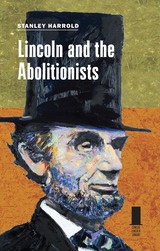 Lincoln and the Abolitionists
Stanley Harrold
Southern Illinois University Press, 2018 Winner, ISHS Best of Illinois History Award, 2019
Abraham Lincoln has often been called the “Great Emancipator.” But he was not among those Americans who, decades before the Civil War, favored immediate emancipation of all slaves inside the United States. Those who did were the abolitionists—the men and women who sought freedom and equal rights for all African Americans. Stanley Harrold traces how, despite Lincoln’s political distance from abolitionists, they influenced his evolving political orientation before and during the Civil War.
While explaining how the abolitionist movement evolved, Harrold also clarifies Lincoln’s connections with and his separation from this often fiery group. For most of his life Lincoln regarded abolitionists as dangerous fanatics. Like many northerners during his time, Lincoln sought compromise with the white South regarding slavery, opposed abolitionist radicalism, and doubted that free black people could have a positive role in America. Yet, during the 1840s and 1850s, conservative northern Democrats as well as slaveholders branded Lincoln an abolitionist because of his sympathy toward black people and opposition to the expansion of slavery.
Lincoln’s election to the presidency and the onslaught of the Civil War led to a transformation of his relationship with abolitionists. Lincoln’s original priority as president had been to preserve the Union, not to destroy slavery. Nevertheless many factors—including contacts with abolitionists—led Lincoln to favor ending slavery. After Lincoln issued the Emancipation Proclamation in 1863 and raised black troops, many, though not all, abolitionists came to view him more favorably.
Providing insight into the stressful, evolving relationship between Lincoln and the abolitionists, and also into the complexities of northern politics, society, and culture during the Civil War era, this concise volume illuminates a central concern in Lincoln’s life and presidency.
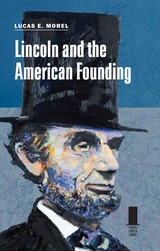 Lincoln and the American Founding
Lucas E. Morel
Southern Illinois University Press, 2020 In this persuasive work of intellectual history, Lucas E. Morel argues that the most important influence on Abraham Lincoln’s political thought and practice was what he learned from the leading figures of and documents from the birth of the United States. In this systematic account of those principles, Morel compellingly demonstrates that to know Lincoln well is to understand thoroughly the founding of America.
With each chapter describing a particular influence, Morel leads readers from the Founding Father, George Washington; to the founding documents, the Declaration of Independence and Constitution; to the founding compromise over slavery; and finally to a consideration of how the original intentions of the Founding Fathers should be respected in light of experience, progress, and improvements over time. Within these key discussions, Morel shows that without the ideals of the American Revolution, Lincoln’s most famous speeches would be unrecognizable, and the character of the nation would have lost its foundation on the universal principles of human equality, individual liberty, and government by the consent of the governed.
Lincoln thought that the principles of human equality and individual rights could provide common ground for a diverse people to live as one nation and that some old things, such as the political ideals of the American founding, were worth preserving. He urged Americans to be vigilant in maintaining the institutions of self-government and to exercise and safeguard the benefits of freedom for future generations. Morel posits that adopting the way of thinking and speaking Lincoln advocated, based on the country’s founding, could help mend our current polarized discourse and direct the American people to employ their common government on behalf of a truly common good.
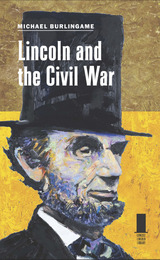 Lincoln and the Civil War
Michael Burlingame
Southern Illinois University Press, 2011 In Lincoln and the Civil War, Michael Burlingame explores the experiences and qualities that made Abraham Lincoln one of America’s most revered leaders. This volume provides an illuminating overview of the entirety of the Civil War and Lincoln’s administration, focusing on the ways in which Lincoln’s unique combination of psychological maturity, steely determination, and political wisdom made him the North’s secret weapon that ultimately led to supremacy over the Confederacy.
When war erupted in 1861, the North—despite its superior economic resources and manpower—was considered the underdog of the conflict. The need to invade the South brought no advantage to the inefficient, poorly led Union Army. In contrast, Southerners’ knowledge of their home terrain, access to railroads, familiarity with firearms, and outdoor lifestyles, along with the presumed support of foreign nations, made victory over the North seem a likely outcome. In the face of such daunting obstacles, only one person could unite disparate Northerners and rally them to victory in the darkest moments of the war: Abraham Lincoln.
While Lincoln is often remembered today as one of America’s wisest presidents, he was not always considered so sage. Burlingame demonstrates how, long before the rigors of his presidency and the Civil War began to affect him, Lincoln wrestled with the demons of midlife to ultimately emerge as arguably the most self-aware, humble, and confident leader in American history. This metamorphosis from sarcastic young politician to profound statesman uniquely prepared him for the selfless dedication the war years would demand. Whereas his counterpart, Jefferson Davis, became mired in personal power plays, perceived slights, and dramas, Lincoln rose above personal concerns to always place the preservation of the Union first. Lincoln’s ability, along with his eloquence, political savvy, and grasp of military strategy made him a formidable leader whose honesty and wisdom inspired undying loyalty.
In addition to offering fresh perspectives on Lincoln’s complex personality and on the other luminaries of his administration, Lincoln and the Civil War takes readers on a brief but thorough tour of the war itself, from the motivations and events leading to Southern secession and the first shots at Fort Sumter to plans for Reconstruction and Lincoln’s tragic assassination. Throughout the journey, Burlingame demonstrates how Lincoln’s steady hand at the helm navigated the Union through the most perilous events of the war and held together the pieces of an unraveling nation.
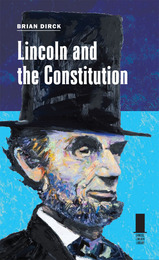 Lincoln and the Constitution
Brian R. Dirck
Southern Illinois University Press, 2012 In this highly readable study of Abraham Lincoln’s thoughts and actions concerning the U.S. Constitution, Brian R. Dirck combines extensive primary research and thoughtful, accessible consideration of Lincoln’s views to reveal new insights into Lincoln’s impact on the U.S. Constitution. In the statesman’s roles as a leading antebellum politician, an ardent critic of slavery, and the president of the United States during the Civil War, Lincoln fashioned a strong antislavery constitutional ideology and articulated a constitutional vision of the Civil War that reinforced his determination to restore the Union. Grounding Lincoln’s constitutionalism in his reading habits and early legal career, Dirck masterfully balances biographical details, Lincoln’s value system, the opinions of his supporters and critics, and key events and ideas to show how his thinking about the U.S. Constitution changed over time. From Lincoln’s deep reverence for the work of the Founding Fathers to his innovative interpretation of presidential war powers, Dirck reveals Lincoln’s understanding of the Constitution to be progressive, emphasizing federal power as a tool to develop the economy, and pragmatic, in that he was often forced to make decisions on the fly during a remarkably volatile period in American history. Lincoln used his conception of presidential war powers to advance the twin causes of Union and emancipation, and Dirck explores the constitutional problems stirred by curbs Lincoln placed on civil liberties, internal security, and freedom of expression during wartime. More than a straightforward overview of Lincoln’s constitutional views, Lincoln and the Constitution provides a starting point for further inquiry into interpretations and defenses as well as the political, intellectual, and cultural traditions of the founding document of the United States. In the end, Dirck shows, Lincoln viewed the political and legal traditions of the Constitution with optimism, emphasizing
throughout his life the possibilities he believed the document held—always keeping faith in it and swearing to protect it, even as he was awash in a sea of blood and controversy.
Univeristy Press Books for Public and Secondary Schools 2013 edition
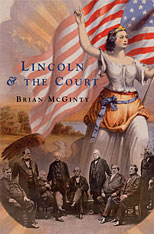 Lincoln and the Court
Brian McGinty
Harvard University Press, 2008 In a meticulously researched and engagingly written narrative, Brian McGinty rescues the story of Abraham Lincoln and the Supreme Court from long and undeserved neglect, recounting the compelling history of the Civil War president's relations with the nation's highest tribunal and the role it played in resolving the agonizing issues raised by the conflict.
Lincoln was, more than any other president in the nation's history, a "lawyerly" president, the veteran of thousands of courtroom battles, where victories were won, not by raw strength or superior numbers, but by appeals to reason, citations of precedent, and invocations of justice. He brought his nearly twenty-five years of experience as a practicing lawyer to bear on his presidential duties to nominate Supreme Court justices, preside over a major reorganization of the federal court system, and respond to Supreme Court decisions--some of which gravely threatened the Union cause.
The Civil War was, on one level, a struggle between competing visions of constitutional law, represented on the one side by Lincoln's insistence that the United States was a permanent Union of one people united by a "supreme law," and on the other by Jefferson Davis's argument that the United States was a compact of sovereign states whose legal ties could be dissolved at any time and for any reason, subject only to the judgment of the dissolving states that the cause for dissolution was sufficient. Alternately opposed and supported by the justices of the Supreme Court, Lincoln steered the war-torn nation on a sometimes uncertain, but ultimately triumphant, path to victory, saving the Union, freeing the slaves, and preserving the Constitution for future generations.
Lincoln and the Economics of the American Dream
Gabor S. Boritt
University of Illinois Press, 1994 This unique exploration of Lincoln's economic beliefs shows how they helped shape his view of slavery, his conduct of the war, and most fundamentally his understanding of what the United States was and could become.
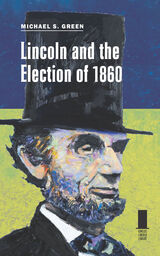 Lincoln and the Election of 1860
Michael S. Green
Southern Illinois University Press, 2011 Abraham Lincoln looms large in American memory. He is admired for his many accomplishments, including his skills as an orator and writer, his Emancipation Proclamation, and his unswerving leadership during the strife-ridden years of the Civil War. Now, Michael S. Green unveils another side to the sixteenth president of the United States: that of the astute political operator. Lincoln and the Election of 1860 examines how, through a combination of political intrigue and deep commitment to the principle of freedom, Lincoln journeyed from Republican underdog to an improbable victor who changed the course of American history. Although Lincoln rose to national prominence in 1858 during his debates with Stephen Douglas, he was unable to publicly stump for the presidency in a time when personal campaigning for the office was traditionally rejected. This limitation did nothing to check Lincoln’s ambitions, however, as he consistently endeavored to place himself in the public eye while stealthily pulling political strings behind the scenes. Green demonstrates how Lincoln drew upon his considerable communication abilities and political acumen to adroitly manage allies and enemies alike, ultimately uniting the Republican Party and catapulting himself from his status as one of the most unlikely of candidates to his party’s nominee at the national convention. As the general election campaign progressed, Lincoln continued to draw upon his experience from three decades in Illinois politics to unite and invigorate the Republican Party. Democrats fell to divisions between North and South, setting the stage for a Republican victory in November—and for the most turbulent times in U.S. history. Moving well beyond a study of the man to provide astute insight into the era’s fiery political scene and its key players, Green offers perceptive analysis of the evolution of American politics and Lincoln’s political career, the processes of the national and state conventions, how political parties selected their candidates, national developments of the time and their effects on Lincoln and his candidacy, and Lincoln’s own sharp—and often surprising—assessments of his opponents and colleagues. Green frequently employs Lincoln’s own words to afford an intimate view into the political savvy of the future president. The pivotal election of 1860 previewed the intelligence, patience, and shrewdness that would enable Lincoln to lead the United States through its greatest upheaval. This exciting new book brings to vivid life the cunning and strength of one of America’s most intriguing presidents during his journey to the White House.
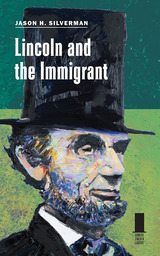 Lincoln and the Immigrant
Jason H. Silverman
Southern Illinois University Press, 2015 Between 1840 and 1860, America received more than four and a half million people from foreign countries as permanent residents, including a huge influx of newcomers from northern and western Europe, hundreds of thousands of Mexicans who became U.S. citizens with the annexation of Texas and the Mexican Cession, and a smaller number of Chinese immigrants. While some Americans sought to make immigration more difficult and to curtail the rights afforded to immigrants, Abraham Lincoln advocated for the rights of all classes of citizens. In this succinct study, Jason H. Silverman investigates Lincoln’s evolving personal, professional, and political relationship with the wide variety of immigrant groups he encountered throughout his life, revealing that Lincoln related to the immigrant in a manner few of his contemporaries would or could emulate.
From an early age, Silverman shows, Lincoln developed an awareness of and a tolerance for different peoples and their cultures, and he displayed an affinity for immigrants throughout his legal and political career. Silverman reveals how immigrants affected not only Lincoln’s day-to-day life but also his presidential policies and details Lincoln’s opposition to the Know Nothing Party and the antiforeign attitudes in his own Republican Party, his reliance on German support for his 1860 presidential victory, his appointment of political generals of varying ethnicities, and his reliance on an immigrant for the literal rules of war.
Examining Lincoln's views on the place of the immigrant in America’s society and economy, Silverman’s pioneering work offers a rare new perspective on the renowned sixteenth president.
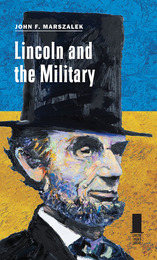 Lincoln and the Military
John F. Marszalek
Southern Illinois University Press, 2014 When Abraham Lincoln was elected president of the United States in 1860, he came into office with practically no experience in military strategy and tactics. Consequently, at the start of the Civil War, he depended on leading military men to teach him how to manage warfare. As the war continued and Lincoln matured as a military leader, however, he no longer relied on the advice of others and became the major military mind of the war. In this brief overview of Lincoln’s military actions and relationships during the war, John F. Marszalek traces the sixteenth president’s evolution from a nonmilitary politician into the commander in chief who won the Civil War, demonstrating why Lincoln remains America’s greatest military president. As tensions erupted into conflict in 1861, Lincoln turned to his generals, including Winfield Scott, George B. McClellan, and Henry W. Halleck, for guidance in running the war. These men were products of the traditional philosophy of war, which taught that armies alone wage war and the way to win was to maneuver masses of forces against fractions of the enemy at the key point in the strategic area. As Marszalek shows, Lincoln listened at first, and made mistakes along the way, but he increasingly came to realize that these military men should no longer direct him. He developed a different philosophy of war, one that advocated attacks on all parts of the enemy line and war between not just armies but also societies. Warfare had changed, and now the generals had to learn from their commander in chief. It was only when Ulysses S. Grant became commanding general, Marszalek explains, that Lincoln had a leader who agreed with his approach to war. Implementation of this new philosophy, he shows, won the war for the Union forces. Tying the necessity of emancipation to preservation of the Union, Marszalek considers the many presidential matters Lincoln had to face in order to manage the war effectively and demonstrates how Lincoln’s determination, humility, sense of humor, analytical ability, and knack for quickly learning important information proved instrumental in his military success. Based primarily on Lincoln’s own words, this succinct volume offers an easily-accessible window into a critical period in the life of Abraham Lincoln and the history of the nation.
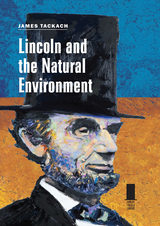 Lincoln and the Natural Environment
James Tackach
Southern Illinois University Press, 2019 Winner, ISHS Best of Illinois History Award, 2019
In this groundbreaking environmental biography of Abraham Lincoln, James Tackach maps Lincoln’s lifelong relationship with the natural world from his birth and boyhood on Midwestern farms through his political career and presidency dealing with the effects of the Industrial Revolution and the Civil War.
Lincoln was born in a generation that grew up on farms but began to move to cities as industrialization transformed the American economy. Turning away from the outdoor, manual labor of his youth, he chose careers in law and politics but always found solace outside first on the prairies of Illinois and, later, at the woodsy presidential retreat. As Tackach shows, Lincoln relied on examples and metaphors from the natural world in his speeches and writings.
As a member of the Whig Party Lincoln endorsed the Industrial Revolution, which transformed the nation’s economy and its physical, social, and cultural landscapes, and advocated for the creation of railroads, canals, roads, and bridges to facilitate growth and the distribution of products. But he and his party failed to take steps to protect the natural environment. Surveying the destruction of the environment in the mid-nineteenth century, Tackach outlines how some American writers, the first voices for protection and conservation, began to call attention to the results of deforestation and the overhunting of animals during Lincoln’s lifetime.
As commander in chief during the Civil War, Lincoln approved a strategy that included significant infrastructure and environmental damage. In the South, where most of the battles occurred, Union troops burned cities and towns and destroyed plantations, farms, and natural landscapes. Tackach argues that, midway through his presidency, Lincoln seemed to sense that postwar Reconstruction would have to be spiritual, political, economic, and environmental in order to heal the nation’s wounds. He signed the Morrill Act, creating the land-grant colleges, and the environmentally progressive Yosemite Grant Act, which preserved thousands of acres of forest in California.
The first scholar to thoroughly investigate Lincoln’s lifelong relationship with the natural environment, Tackach paints Lincoln’s personal and professional life against the backdrop of nineteenth-century American environmental history, issues, and writers, providing insights into contemporary environmental issues.
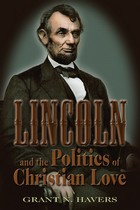 Lincoln and the Politics of Christian Love
Grant N. Havers
University of Missouri Press, 2009 America has seen faith-based initiatives and “the audacity of hope” in twenty-first-century politics, but few participants in our political scene have invoked the other Christian virtue of charity as a guiding principle. Abraham Lincoln extolled the merit of “loving thy neighbor as thyself,” especially as a critique of the hypocrisy of slavery, but a discussion of Christian love is noticeably absent from today’s debates about religion and democracy. In this provocative book, Grant Havers argues that charity is a central tenet of what Lincoln once called America’s “political religion.” He explores the implications of making Christian love the highest moral standard for American democracy, showing how Lincoln’s legacy demands that a true democracy be charitable toward all—and that only a people who lived according to such ideals could succeed in building democracy as Lincoln understood it. Havers argues that it is simplistic to conflate Lincoln’s invocation of “with charity for all” with his abiding support for the ideal of human equality. The ethic of charity in his view also brought a uniquely Christian realism to the universalism of democracy. He also describes how, since World War I, intellectuals and political leaders have denied that there exists a necessary relation between democracy and Christian love, proposing that democracy is sufficiently ethical without reliance on a specific religious tradition. Today’s neoconservatives and liberals instead posit a universal yearning for democracy that requires no foundation in the ethic of charity. Havers shows that this democratic universalism, espoused by those who believe a “chosen people” should uphold the natural rights of humanity, is alien to the sober thought of both the founders and Lincoln.
This carefully argued work defends Lincoln’s understanding of charity as essential to democracy while emphasizing the difficulty of fusing this ethic with the desire to spread democracy to people who do not share America’s Christian heritage. In considering the prospect of America’s leaders rediscovering a moral foreign policy based on charity rather than the costly idolization of democracy, Lincoln and the Politics of Christian Love makes a timely contribution to the wider debate over both the meaning of religion in American politics and the mission of America in the world—and opens a new window on Lincoln’s lasting legacy.
Lincoln and the Radicals
T. Harry Williams
University of Wisconsin Press, 1960 Sometimes, in American politics, a conflict becomes so heated and divisive—as the conflict over slavery did—that the ground is set for civil war. Abraham Lincoln, a pragmatist who wanted to rebuild national unity, ran up against the radicals in his own party who insisted on a rigid solution, regardless of the cost to the country.
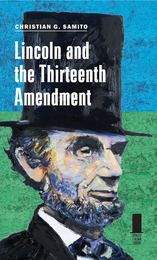 Lincoln and the Thirteenth Amendment
Christian G. Samito
Southern Illinois University Press, 2015 Long before the Civil War, Abraham Lincoln recognized the challenge American slavery posed to the ideals of the Declaration of Independence. A constitutional amendment would be the ideal solution to ending slavery, yet the idea of such an amendment conflicted with several of Lincoln’s long-held positions. In this study, Christian G. Samito examines how Lincoln’s opposition to amending the United States Constitution shaped his political views before he became president, and how constitutional arguments overcame Lincoln’s objections, turning him into a supporter of the Thirteenth Amendment by 1864. For most of his political career, Samito shows, Lincoln opposed changing the Constitution, even to overturn Supreme Court rulings with which he disagreed. Well into his presidency, he argued that emancipation should take place only on the state level because the federal government had no jurisdiction to control slavery in the states. Between January 1863 and mid-1864, however, Lincoln came to support a constitutional amendment to abolish slavery because it worked within the constitutional structure and preserved key components of American constitutionalism in the face of Radical Republican schemes. Samito relates how Lincoln made the amendment an issue in his 1864 reelection campaign, chronicles lobbying efforts and the final vote in the House on the amendment resolution, and interrogates various charges of corruption and back-room deals. He also considers the Thirteenth Amendment in the context of the Hampton Roads conference, Lincoln’s own thoughts on the meaning of the amendment, and the impact of Lincoln’s assassination on the reading of the amendment. Samito provides the authoritative historical treatment of a story so compelling it was recently dramatized in the movie Lincoln. Closing with a lively discussion that applies the Thirteenth Amendment to current events, this concise yet comprehensive volume demonstrates how the constitutional change Lincoln helped bring about continues to be relevant today.
Lincoln and the Tools of War
Robert V. Bruce
University of Illinois Press, 1989 Fascinated by mechanical gadgetry and technology, Lincoln introduced breechloaders and machine guns into warfare and promoted the use of incendiary weapons, ironclad warships, breechloading cannons, and aerial reconnaissance. Robert Bruce chronicles the President's struggle against bureaucratic red tape and his dealings with the colorful parade of inventors, ordinance experts, bureaucrats, military officers, and lobbyists who heralded a new era in warfare.
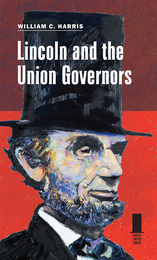 Lincoln and the Union Governors
William C. Harris
Southern Illinois University Press, 2013 Over the course of the Civil War, fifty-nine men served as governors of the twenty-five Union states. Although these state executives were occasionally obstructionist and often disagreed amongst themselves, their overall cooperation and counsel bolstered the policies put forth by Abraham Lincoln and proved essential to the Union’s ultimate victory. In this revealing volume, award-winning historian William C. Harris explores the complex relationship between Lincoln and the governors of the Union states, illuminating the contributions of these often-overlooked state leaders to the preservation of the nation. Lincoln recognized that in securing the governors’ cooperation in the war he had to tread carefully and, as much as possible, respect their constitutional authority under the federal system of government. Contributing to the success of the partnership, Harris shows, was the fact that almost all of the governors were members of Lincoln’s Republican or Union Party, and most had earlier associated with his Whig party. Despite their support for the war, however, the governors reflected different regional interests, and Lincoln understood and attempted to accommodate these differences in order to maintain a unified war effort. Harris examines the activities of the governors, who often worked ahead of Lincoln in rallying citizens for the war, organizing state regiments for the Union army, and providing aid and encouragement to the troops in the field. The governors kept Lincoln informed about political conditions in their states and lobbied Lincoln and the War Department to take more vigorous measures to suppress the rebellion. Harris explores the governors’ concerns about many issues, including the divisions within their states over the war and Lincoln’s most controversial policies, especially emancipation and military conscription. He also provides the first modern account of the 1862 conference of governors in Altoona, Pennsylvania, which provided important backing for Lincoln’s war leadership. By emphasizing the difficult tasks that both the governors and President Lincoln faced in dealing with the major issues of the Civil War, Harris provides fresh insight into the role this dynamic partnership played in preserving the nation’s democratic and constitutional institutions and ending the greatest blight on the republic—chattel slavery.
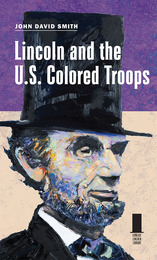 Lincoln and the U.S. Colored Troops
John David Smith
Southern Illinois University Press, 2013 When Abraham Lincoln issued his final Emancipation Proclamation on January 1, 1863, he not only freed the slaves in the Confederate states but also invited freed slaves and free persons of color to join the U.S. Army as part of the U.S. Colored Troops (USCT), the first systematic, large-scale effort by the U.S. government to arm African Americans to aid in the nation’s defense. By the end of the war in 1865, nearly 180,000 black soldiers had fought for the Union. Lincoln’s role in the arming of African Americans remains a central but unfortunately obscure part of one of the most compelling periods in American history. In Lincoln and the U.S. Colored Troops John David Smith offers a concise, enlightening exploration of the development of Lincoln’s military emancipation project, its implementation, and the recruitment and deployment of black troops. Though scholars have written much on emancipation and the USCT, Smith’s work frames the evolution of Lincoln’s ideas on emancipation and arming blacks within congressional actions, explaining how, when, and why the president seemed to be so halting in his progression to military emancipation. After tracing Lincoln’s evolution from opposing to supporting emancipation as a necessary war measure and to championing the recruitment of black troops for the Union Army, Smith details the creation, mobilization, and diverse military service of the USCT. He assesses the hardships under which the men of the USCT served, including the multiple forms of discrimination from so-called friends and foes alike, and examines the broad meaning of Lincoln’s military emancipation project and its place in African American historical memory.
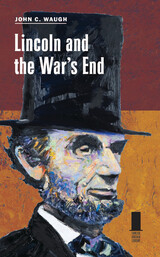 Lincoln and the War's End
John C. Waugh
Southern Illinois University Press, 2014 On the night of his reelection on November 8, 1864, President Abraham Lincoln called on the nation to “re-unite in a common effort, to save our common country.” By April 9 of the following year, the Union had achieved this goal with the surrender of the Army of Northern Virginia to General Ulysses S. Grant at Appomattox Court House. In this lively volume, John C. Waugh chronicles in detail Lincoln’s role in the final five months of the war, revealing how Lincoln and Grant worked together to bring the war to an end. Beginning with Lincoln’s reelection, Waugh highlights the key military and political events of those tumultuous months. He recounts the dramatic final military campaigns and battles of the war, including William T. Sherman’s march through Georgia to the sea; the Confederate army’s attempt to take Nashville and its loss at the battle of Franklin; and the Union victory at Fort Fisher that closed off the Confederacy’s last open port. Other events also receive attention, including Sherman’s march through the Carolinas and the burning of Columbia; Grant’s defeat of the Army of Northern Virginia at the Battle of Five Forks, and Lincoln’s presence at the seat of war during that campaign; the Confederate retreat from Petersburg and Richmond; and Lee’s surrender at Appomattox. Weaving the stories together chronologically, Waugh also presents the key political events of the time, particularly Lincoln’s final annual message to Congress, passage of the Thirteenth Amendment, the Second Inaugural, Lincoln’s visit to Richmond the day after it fell, and Lincoln’s final days and speeches in Washington after the Confederate surrender. An epilogue recounts the farewell march of all the Union armies through Washington, D.C., in May 1865. Throughout, Waugh enlivens his narrative with illuminating quotes from a wide variety of Civil War participants and personalities, including New Yorker George Templeton Strong, southerner Mary Boykin Chesnut, Lincoln’s secretary John Hay, writer Noah Brooks, and many others.
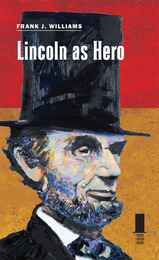 Lincoln as Hero
Frank J. Williams
Southern Illinois University Press, 2012 Most Americans have considered, and still consider, Abraham Lincoln to be a heroic figure. From his humble beginnings to his leadership of a divided nation during the Civil War to his early efforts in abolishing slavery, Lincoln’s legacy is one of deep personal and political courage. In this unique and concise retelling of many of the key moments and achievements of Lincoln’s life and work, Frank J. Williams explores in detail what it means to be a hero and how Lincoln embodied the qualities Americans look for in their heroes. Lincoln as Hero shows how—whether it was as president, lawyer, or schoolboy—Lincoln extolled the foundational virtues of American society. Williams describes the character and leadership traits that define American heroism, including ideas and beliefs, willpower, pertinacity, the ability to communicate, and magnanimity. Using both celebrated episodes and lesser-known anecdotes from Lincoln’s life and achievements, Williams presents a wide-ranging analysis of these traits as they were demonstrated in Lincoln’s rise, starting with his self-education as a young man and moving on to his training and experience as a lawyer, his entry onto the political stage, and his burgeoning grasp of military tactics and leadership. Williams also examines in detail how Lincoln embodied heroism in standing against secession and fighting to preserve America’s great democratic experiment. With a focused sense of justice and a great respect for the mandates of both the Declaration of Independence and the Constitution, Lincoln came to embrace freedom for the enslaved, and his Emancipation Proclamation led the way for the Thirteenth Amendment, which abolished slavery. Lincoln’s legacy as a hero and secular saint was secured when his lifeended by assassination as the Civil War was drawing to a close Touching on Lincoln’s humor and his quest for independence, justice, and equality, Williams outlines the path Lincoln took to becoming a great leader and an American hero, showing readers why his heroism is still relevant. True heroes, Williams argues, are successful not just by the standards of their own time but also through achievements that transcend their own eras and resonate throughout history—with their words and actions living on in our minds, if we are imaginative, and in our actions, if we are wise.
Univeristy Press Books for Public and Secondary Schools 2013 edition
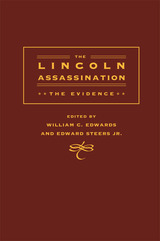 The Lincoln Assassination: The Evidence
Edited by William C. Edwards and Edward Steers
University of Illinois Press, 2008 On April 22, 1865, Brevet Colonel H. L. Burnett was assigned to head the investigation into the murder of President Abraham Lincoln and the attempted murder of Secretary of State William H. Seward. Burnett orchestrated the collection of thousands of documents for the Military Commission’s trial of the conspirators. This deep archive of documentary evidence--consisting of letters, depositions, eyewitness accounts, investigative reports, and other documents--provides invaluable insight into the historical, cultural, and judicial context of the investigation. Only a fraction of the information presented in these documents ever made its way into the trial, and most of it has never been readily accessible. By presenting an annotated and indexed transcription of these documents, this volume offers significant new access to information on the events surrounding the assassination and a vast new store of social and political history of the Civil War era. “With tears in my eyes I think it your duty to hang every rebel caught. I feel as bad as if was my own mother or father & will be one to volunteer to try & shoot every Southern man. May God have mercy on the man’s soul that done such a deed.
With much Respect for our Country,
I remain
Weeping”
--Anonymous letter, New York, April 15, 1865 “I know Booth. He was in the habit of coming to my place to shoot. . . . He shot well, and practiced to shoot with accuracy in every possible position. . . . He was a quick shot; always silent, reticent.”
--Deposition of Benjamin Barker, Pistol Gallery proprietor
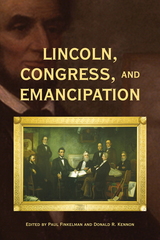 Lincoln, Congress, and Emancipation
Paul Finkelman
Ohio University Press, 2016 “When Lincoln took office, in March 1861, the national government had no power to touch slavery in the states where it existed. Lincoln understood this, and said as much in his first inaugural address, noting: ‘I have no purpose, directly or indirectly, to interfere with the institution of slavery in the States where it exists.’” How, then, asks Paul Finkelman in the introduction to Lincoln, Congress, and Emancipation, did Lincoln—who personally hated slavery—lead the nation through the Civil War to January 1865, when Congress passed the constitutional amendment that ended slavery outright? The essays in this book examine the route Lincoln took to achieve emancipation and how it is remembered both in the United States and abroad. The ten contributors—all on the cutting edge of contemporary scholarship on Lincoln and the Civil War—push our understanding of this watershed moment in US history in new directions. They present wide-ranging contributions to Lincoln studies, including a parsing of the sixteenth president’s career in Congress in the 1840s and a brilliant critique of the historical choices made by Steven Spielberg and writer Tony Kushner in the movie Lincoln, about the passage of the Thirteenth Amendment. As a whole, these classroom-ready readings provide fresh and essential perspectives on Lincoln’s deft navigation of constitutional and political circumstances to move emancipation forward. Contributors: L. Diane Barnes, Jenny Bourne, Michael Burlingame, Orville Vernon Burton, Seymour Drescher, Paul Finkelman, Amy S. Greenberg, James Oakes, Beverly Wilson Palmer, Matthew Pinsker
Lincoln, Douglas, and Slavery: In the Crucible of Public Debate
David Zarefsky
University of Chicago Press, 1990 Winner of the Speech Communication's Winans-Wichelns Award for Distinguished Scholarship in Rhetoric and Public Address. Zarefsky examines the dynamics of the seven 1858 Lincoln-Douglas debates, placing them in historical context and explaining the complicated issue of slavery in the territories, their focal point. He elucidates the candidates' arguments, analyzes their rhetorical strategies, and shows how public sentiment is transformed.
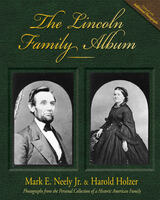 The Lincoln Family Album
Mark E. Neely Jr. and Harold Holzer
Southern Illinois University Press, 2006 Chronicling the private lives of the Lincolns through their personal photographic collection The Lincoln Family Album offers a rare and revealing glimpse into the private life of Abraham Lincoln and the first family. Showcasing original and previously unpublished photographs collected and preserved by Mary Todd Lincoln and four generations of descendants, the volume includes pictures displayed in a family album when the Lincolns lived in the White House. Chronicled are the lives of the Lincolns’ three sons, including the tragic death of Willie in 1862, the rapid change of Tad during the war, and Robert’s marriage, children, and political career. Soldiers and statesmen of the Civil War, period figures such as Tom Thumb and Henry Ward Beecher, and even the family dog also graced the album that became the nucleus of the Lincolns’ personal collection. This updated edition, which provides both additional pictures and new introductory materials by renowned Lincoln scholars Mark E. Neely Jr. and Harold Holzer, paints a portrait of the Lincolns’ rise to prominence and the exclusion of poorer relations after the family moved to the nation’s capital. With 150 illustrations and detailed captions, this authoritative and enlightening nineteenth-century history also includes capsule biographies of the Lincolns’ friends and relatives. In such images as the First Lady in mourning or the assassin John Wilkes Booth, the pictures cannot disguise the painful truth about a family that suffered as many tragedies as triumphs. Willie’s death at the age of eleven abruptly ended Mary and Abraham’s personal collecting, but Lincoln descendants continued the tradition. The last pages of The Lincoln Family Album conclude with the death of Robert Lincoln’s last grandchild, Robert Todd Lincoln Beckwith, in 1985, ending the direct line of Abraham and Mary Lincoln.
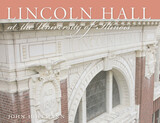 Lincoln Hall at the University of Illinois
John Hoffmann, Foreword by Richard H. Herman
University of Illinois Press, 2010 Lincoln Hall at the University of Illinois, named to commemorate the centennial of Abraham Lincoln's birth, has long been a familiar landmark on the Urbana-Champaign campus and the home for undergraduate and graduate work in the liberal arts and communication. Funded by the Illinois State Legislature in 1909, the building was dedicated in 1913 on Lincoln's birthday, February 12. In addition to its function as space for offices, classrooms, and departmental libraries, Lincoln Hall was commissioned, designed, and built to convey "the wisdom and patriotism of the democracy of learning." That spirit of freedom and equality in education was manifest in Lincoln Hall's artistic design, which features terra cotta panels depicting Lincoln's life, quotations from his writings, and portraits of prominent figures of his day. At the outset of the building's conception, Evarts B. Greene, professor of history and dean of the College of Literature and Arts, provided detailed information about Lincoln that defined the building's artistic program. Wishing to retain the dignified simplicity of the overall design, he conferred with W. Carbys Zimmerman, the State Architect, about the nature and placement of the panels and other ornamental details that have become key features of the building's design. Commemorating the bicentennial of Lincoln's birth, this magisterial volume chronicles the history of Lincoln Hall from its conception to its expansion and its present role on the campus. John Hoffmann identifies each of the building's historical panels and the portraits of Lincoln's contemporaries. Lavishly illustrated to show how much care was taken with the details of the design, this book provides a lasting historical record of the building's century-long place at the University of Illinois. Supported by the Office of the Chancellor of the University of Illinois at Urbana-Champaign
The Lincoln Highway: Main Street across America, A Tenth Aniversary Edition
Drake Hokanson
University of Iowa Press, 1999 Ten years after its original publication, Drake Hokanson's best-selling book continues to inspire readers to leave the interstate for a road less traveled, but one that still fuels the American preoccupation with the open road. In his new introduction to this tenth anniversary edition, Hokanson revisits the Lincoln Highway and finds it changed—much for the better—since the original publication of this book. Most notably, he calls attention to the reinvigorated Lincoln Highway Association and its efforts to preserve what is left of the old road. Hokanson finds more and more tourists traveling the road—not only Americans but foreigners as well—by car, bus, and motorcycle on journeys not to any particular destination, but simply to see America.
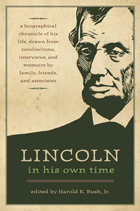 Lincoln in His Own Time: A Biographical Chronicle of His Life, Drawn from Recollections, Interviews, and Memoirs by Family, Friends, and Associates
Harold K. Bush
University of Iowa Press, 2011 More than any other American before or since, Abraham Lincoln had a way with words that has shaped our national idea of ourselves. Actively disliked and even vilified by many Americans for the vast majority of his career, this most studied, most storied, and most documented leader still stirs up controversy. Showing not only the development of a powerful mind but the ways in which our sixteenth president was perceived by equally brilliant American minds of a decidedly literary and political bent, Harold K. Bush’s Lincoln in His Own Time provides some of the most significant contemporary meditations on the Great Emancipator’s legacy and cultural significance. The forty-two entries in this spirited collection present the best reflections of Lincoln as thinker, reader, writer, and orator by those whose lives intertwined with his or those who had direct contact with eyewitnesses. Bush focuses on Lincoln’s literary interests, reading, and work as a writer as well as the evolving debate about his religious views that became central to his memory. Along with a star-struck Walt Whitman writing of Lincoln’s “inexpressibly sweet” face and manner, Elizabeth Keckly’s description of a bereaved Lincoln, “genius and greatness weeping over love’s idol lost,” and William Stoddard’s report of the “cheery, hopeful, morning light” on Lincoln’s face after a long night debating the fate of the nation, the volume includes selections from works by famous contemporary figures such as Hawthorne, Douglass, Stowe, Lowell, Twain, and Lincoln himself in addition to lesser-known selections that have been nearly lost to history. Each entry is introduced by a headnote that places the selection in historical and cultural context; explanatory endnotes provide information about people and places. A comprehensive introduction and a detailed chronology of Lincoln’s eventful life round out the volume. Bush’s thoughtful collection reveals Lincoln as a man of letters who crafted some of the most memorable lines in our national vocabulary, explores the striking mythologization of the martyred president that began immediately upon his death, and then combines these two themes to illuminate Lincoln’s place in public memory as the absolute embodiment of America’s mythic civil religion. Beyond providing the standard fare of reminiscences about the rhetorically brilliant backwoodsman from the “Old Northwest,” Lincoln in His Own Time also maps a complex genealogy of the cultural work and iconic status of Lincoln as quintessential scribe and prophet of the American people.
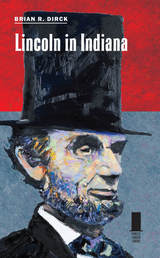 Lincoln in Indiana
Brian R. Dirck
Southern Illinois University Press, 2017 Abraham Lincoln, born in Kentucky in 1809, moved with his parents, Thomas and Nancy Lincoln, and his older sister, Sarah, to the Pigeon Creek area of southern Indiana in 1816. There Lincoln spent more than a quarter of his life. It was in Indiana that he developed a complicated and often troubled relationship with his father, exhibited his now-famous penchant for self-education, and formed a restless ambition to rise above his origins. Although some questions about these years are unanswerable due to a scarcity of reliable sources, Brian R. Dirck’s fascinating account of Lincoln’s boyhood sets what is known about the relationships, values, and environment that fundamentally shaped Lincoln’s character within the context of frontier and farm life in early nineteenth-century midwestern America.
Lincoln in Indiana tells the story of Lincoln’s life in Indiana, from his family’s arrival to their departure. Dirck explains the Lincoln family’s ancestry and how they and their relatives came to settle near Pigeon Creek. He shows how frontier families like the Lincolns created complex farms out of wooded areas, fashioned rough livelihoods, and developed tight-knit communities in the unforgiving Indiana wilderness. With evocative prose, he describes the youthful Lincoln’s relationship with members of his immediate and extended family. Dirck illuminates Thomas Lincoln by setting him into his era, revealing the concept of frontier manhood, and showing the increasingly strained relationship between father and son. He illustrates how pioneer women faced difficulties as he explores Nancy Lincoln’s work and her death from milk sickness; how Lincoln’s stepmother, Sarah Bush, fit into the family; and how Lincoln’s sister died in childbirth. Dirck examines Abraham’s education and reading habits, showing how a farming community could see him as lazy for preferring book learning over farmwork. While explaining how he was both similar to and different from his peers, Dirck includes stories of Lincoln’s occasional rash behavior toward those who offended him. As Lincoln grew up, his ambitions led him away from the family farm, and Dirck tells how Lincoln chafed at his father’s restrictions, why the Lincolns decided to leave Indiana in 1830, and how Lincoln eventually broke away from his family.
In a triumph of research, Dirck cuts through the myths about Lincoln’s early life, and along the way he explores the social, cultural, and economic issues of early nineteenth-century Indiana. The result is a realistic portrait of the youthful Lincoln set against the backdrop of American frontier culture.
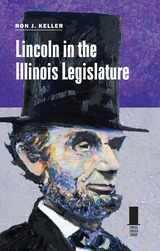 Lincoln in the Illinois Legislature
Ron J Keller
Southern Illinois University Press, 2019 In this indispensable account of Abraham Lincoln’s earliest political years, Ron J. Keller reassesses Lincoln’s arguably lackluster legislative record during four terms in the Illinois House of Representatives to reveal how the underpinnings of his temperament, leadership skills, and political acumen were bolstered on the statehouse floor.
Due partly to Lincoln’s own reserve and partly to an unimpressive legislative tally, Lincoln’s time in the state legislature has been largely neglected by historians more drawn to other early hallmarks of his life, including his law career, his personal life, and his single term as a U.S. congressman in the 1840s. Of about sixteen hundred bills, resolutions, and petitions passed from 1834 to 1842, Lincoln introduced only about thirty of them. The issue he most ardently championed and shepherded through the legislature—the internal improvements system—left the state in debt for more than a generation.
Despite that spotty record, Keller argues, it was during these early years that Lincoln displayed and honed the traits that would allow him to excel in politics and ultimately define his legacy: honesty, equality, empathy, and leadership. Keller reanimates Lincoln’s time in the Illinois legislature to reveal the formation of Lincoln’s strong character and political philosophy in those early years, which allowed him to rise to prominence as the Whig party’s floor leader regardless of setbacks and to build a framework for his future.
Lincoln in the Illinois Legislature details Lincoln’s early political platform and the grassroots campaigning that put him in office. Drawing on legislative records, newspaper accounts, speeches, letters, and other sources, Keller describes Lincoln’s positions on key bills, highlights his colleagues’ perceptions of him, and depicts the relationships that grew out of his statehouse interactions. Keller’s research delves into Lincoln’s popularity as a citizen of New Salem, his political alliances and victories, his antislavery stirrings, and his personal joys and struggles as he sharpened his political shrewdness.
Keller argues Lincoln’s definitive political philosophies—economic opportunity and the right to rise, democratic equality, and to a lesser extent his hatred of slavery—took root during his legislative tenure in Illinois. Situating Lincoln’s tenure and viewpoints within the context of national trends, Keller demonstrates that understanding Lincoln’s four terms as a state legislator is vital to understanding him as a whole.
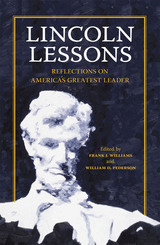 Lincoln Lessons: Reflections on America's Greatest Leader
Edited by Frank J. Williams and William D. Pederson
Southern Illinois University Press, 2009 In Lincoln Lessons, seventeen of today’s most respected academics, historians, lawyers, and politicians provide candid reflections on the importance of Abraham Lincoln in their intellectual lives. Their essays, gathered by editors Frank J. Williams and William D. Pederson, shed new light on this political icon’s remarkable ability to lead and inspire two hundred years after his birth. Collected here are glimpses into Lincoln’s unique ability to transform enemies into steadfast allies, his deeply ingrained sense of morality and intuitive understanding of humanity, his civil deification as the first assassinated American president, and his controversial suspension of habeas corpus during the Civil War. The contributors also discuss Lincoln’s influence on today’s emerging democracies, his lasting impact on African American history, and his often-overlooked international legend—his power to instigate change beyond the boundaries of his native nation. While some contributors provide a scholarly look at Lincoln and some take a more personal approach, all explore his formative influence in their lives. What emerges is the true history of his legacy in the form of first-person testaments from those whom he has touched deeply. Lincoln Lessons brings together some of the best voices of our time in a unique combination of memoir and history. This singular volume of original essays is a tribute to the enduring inspirational powers of an extraordinary man whose courage and leadership continue to change lives today. Contributors Jean H. Baker Mario M. Cuomo Joan L. Flinspach Sara Vaughn Gabbard Doris Kearns Goodwin Harold Holzer Harry V. Jaffa John F. Marszalek James M. McPherson Edna Greene Medford Sandra Day O’Connor Mackubin Thomas Owens William D. Pederson Edward Steers Jr. Craig L. Symonds Thomas Reed Turner Frank J. Williams
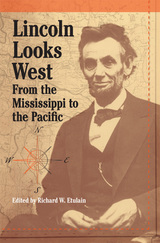 Lincoln Looks West: From the Mississippi to the Pacific
Edited by Richard W. Etulain
Southern Illinois University Press, 2010 This first-ever volume to comprehensively explore President Abraham Lincoln’s ties to the American West brings together a variety of scholars and experts who offer a fascinating look at the sixteenth president’s lasting legacy in the territory beyond the Mississippi River. Editor Richard W. Etulain’s extensive introductory essay treats these western connections from Lincoln’s early reactions to Texas, Oregon, and the Mexican War in the 1840s, through the 1850s, and during his presidency, providing a framework for the nine essays that follow. Each of these essays offers compelling insight into the many facets of Lincoln’s often complex interactions with the American West. Included in this collection are a provocative examination of Lincoln’s opposition to the Mexican War; a discussion of the president’s antislavery politics as applied to the new arena of the West; new perspectives on Lincoln’s views regarding the Thirteenth Amendment and his reluctance regarding the admission of Nevada to the Union; a fresh look at the impact of the Radical Republicans on Lincoln’s patronage and appointments in the West; and discussion of Lincoln’s favorable treatment of New Mexico and Arizona, primarily Southern and Democratic areas, in an effort to garner their loyalty to the Union. Also analyzed is “The Tribe of Abraham”—Lincoln’s less-than-competent appointments in Washington Territory made on the basis of political friendship—and the ways in which Lincoln’s political friends in the Western Territories influenced his western policies. Other essays look at Lincoln’s dealings with the Mormons of Utah, who supported the president in exchange for his tolerance, and American Indians, whose relations with the government suffered as the president’s attention was consumed by the crisis of the Civil War. In addition to these illuminating discussions, Etulain includes a detailed bibliographical essay, complete with examinations of previous interpretations and topics needing further research, as well as an extensive list of resources for more information on Lincoln's ties west of the Mississippi. Loaded with a wealth of information and fresh historical perspectives, Lincoln Looks West explores yet another intriguing dimension to this dynamic leader and to the history of the American West. Contributors: Richard W. Etulain Michael S. Green Robert W. Johannsen Deren Earl Kellogg Mark E. Neely Jr. David A. Nichols Earl S. Pomeroy Larry Schweikart Vincent G. Tegeder Paul M. Zall
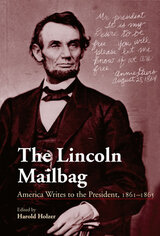 The Lincoln Mailbag: America Writes to the President, 1861-1865
Edited by Harold Holzer
Southern Illinois University Press, 2006 As president, Abraham Lincoln received between two hundred and five hundred letters a day—correspondence from public officials, political allies, and military leaders, as well as letters from ordinary Americans of all races who wanted to share their views with him. Here, and in his critically acclaimed volume Dear Mr. Lincoln, editor Harold Holzer has rescued these voices—sometimes eloquent, occasionally angry, at times poetic—from the obscurity of the archives of the Civil War. The Lincoln Mailbag includes letters written by African Americans, which Lincoln never saw, revealing to readers a more accurate representation of the nation’s mood than even the president knew. This first paperback edition of The Lincoln Mailbag includes a new index and fourteen illustrations, and Holzer’s introduction and annotations provide historical context for the events described and the people who wrote so passionately to their president in Lincoln's America.
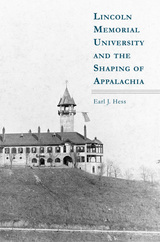 Lincoln Memorial University and the Shaping of Appalachia
Earl J. Hess
University of Tennessee Press, 2011
Located near Cumberland Gap in the rugged hills of East Tennessee, Lincoln Memorial University (LMU) was founded in 1897 to help disadvantaged Appalachian youth and reward the descendents of Union loyalists in the region. Its founder was former Union General Oliver Otis Howard, a personal friend of Abraham Lincoln, who made it his mission to sustain an institution of higher learning in the mountain South that would honor the memory of the Civil War president.
In Lincoln Memorial University and the Shaping of Appalachia, LMU Professor Earl J. Hess presents a highly readable and compelling history of the school. Yet the book is much more than a chronology of past events. The author uses the institution’s history to look at wider issues in Appalachian scholarship, including race and the modernization of educational methods in Appalachia. LMU offered a work-learn program to help students pay their way, imparting the value of self-help, and it was hit by a massive student strike that nearly wrecked the institution in 1930. LMU has played an important role in shaping what higher learning could be for young people in its region of southern Appalachia.
The volume examines the involvement of O. O. Howard and his unflagging efforts to establish and fund the school; the influence of early twentieth-century industrial capitalism—
Andrew Carnegie and John D. Rockefeller were benefactors—on Appalachia and LMU in particular; and the turn-of-the-century cult of Lincoln that made the university a major repository of Lincolniana.
Meticulously researched and richly illustrated, Lincoln Memorial University and the Shaping of Appalachia is a fresh look at the creation, contributions, and enduring legacies of LMU. Students, alumni, and friends of the university, as well as scholars of Appalachian culture and East Tennessee history, will find this book both enlightening and entertaining.
Earl J. Hess holds the Stewart W. McClelland Chair in History at Lincoln Memorial University. He is the author of more than a dozen books on Civil War military history, the latest of which is Into the Crater: The Mine Attack at Petersburg.
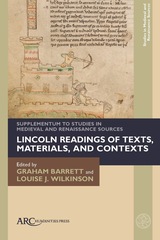 Lincoln Readings of Texts, Materials, and Contexts: Supplementum to Studies in Medieval and Renaissance Sources
Graham Barrett
Arc Humanities Press, 2024 Studies in Medieval and Renaissance Sources, the transformative successor to Studies in Medieval and Renaissance History (first published in 1964), provides a unique venue for scholars to offer fresh readings of evidence from the period 400–1600. This annual is dedicated to the fundamental scholarship of analysis and interpretation led by direct engagement with the sources—written, visual, material—in any form, from editions, translations, and commentaries to reports, notes, and reflections. By foregrounding the most basic approach of working outwards from the evidence, it aims to foster conversations across disciplines, regions, and periods, as well as to become a reference point for original approaches and new discoveries. This supplementary volume comprises essays on sources from the pre-modern world authored by members of the Medieval Studies Research Group, University of Lincoln, to mark the launch of the new (fourth) series.
 Lincoln the Citizen, February 12, 1809 to March 4, 1861: The Complete Version
Henry C. Whitney. Edited and with an introduction by Michael Burlingame
University of Illinois Press, 2025 Written by a longtime friend and ally, Lincoln the Citizen offers a rare character study and insightful biography of Lincoln before he became president. Michael Burlingame restores material cut by editors of the original 1907 publication to present Henry Clay Whitney’s work in full. Whitney’s work reveals the legal and political spheres where Lincoln moved while providing eyewitness accounts and intimate stories shared by Lincoln himself. Whitney’s unique vantage point informs analyses of everything from Lincoln’s melancholic temperament to his colorful early career to views on his marriage and family life. Burlingame places Whitney’s singular contributions within Lincoln studies but also weighs criticisms of the book and disputes over what information the author may or may not have invented. A restored edition of an invaluable memoir, Lincoln the Citizen presents a wealth of overlooked biographical detail by one of the people who knew Lincoln best.
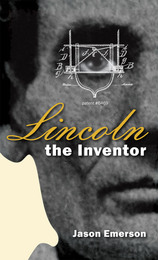 Lincoln the Inventor
Jason Emerson
Southern Illinois University Press, 2009 In Lincoln the Inventor, Jason Emerson offers the first treatment of Abraham Lincoln’s invention of a device to buoy vessels over shoals and its subsequent patent as more than mere historical footnote. In this book, Emerson shows how, when, where, and why Lincoln created his invention; how his penchant for inventions and inventiveness was part of his larger political belief in internal improvements and free labor principles; how his interest in the topic led him to try his hand at scholarly lecturing; and how Lincoln, as president, encouraged and even contributed to the creation of new weapons for the Union during the Civil War. During his extensive research, Emerson also uncovered previously unknown correspondence between Lincoln’s son, Robert, and his presidential secretary, John Nicolay, which revealed the existence of a previously unknown draft of Abraham Lincoln’s lecture “Discoveries and Inventions.” Emerson not only examines the creation, delivery, and legacy of this lecture, but also reveals for the first time how Robert Lincoln owned this unknown version, how he lost and later tried to find it, the indifference with which Robert and Nicolay both held the lecture, and their decision to give it as little attention as possible when publishing President Lincoln’s collected works. The story of Lincoln’s invention extends beyond a boat journey, the whittling of some wood, and a trip to the Patent Office; the invention had ramifications for Lincoln’s life from the day his flatboat got stuck in 1831 until the day he died in 1865. Besides giving a complete examination of this important—and little known—aspect of Lincoln’s life, Lincoln the Inventor delves into the ramifications of Lincoln’s intellectual curiosity and inventiveness, both as a civilian and as president, and considers how it allows a fresh insight into his overall character and contributed in no small way to his greatness. Lincoln the Inventor is a fresh contribution to the field of Lincoln studies about a topic long neglected. By understanding Lincoln the inventor, we better understand Lincoln the man.
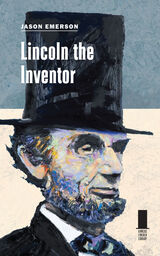 Lincoln the Inventor
Jason Emerson
Southern Illinois University Press, 2009 The book that inspired the popular Concise Lincoln Library series
In April 1831, on a flatboat grounded on the Rutledge milldam below the town of New Salem, Abraham Lincoln worked to pry the boat loose, directed the crew, and ran into the village to borrow an auger to bore a hole in the end hanging over the dam, causing the water to drain and the boat to float free. Seventeen years later, while traveling home from a round of political speeches, Lincoln witnessed another similar occurrence. For the rest of his journey, he considered how to construct a device to free stranded boats from shallow waters.
In this first thorough examination of Abraham Lincoln’s mechanical mind, Jason Emerson brings forth the complete story of Lincoln’s invention and patent as more than mere historical footnote. Emerson shows how, when, where, and why Lincoln developed his invention; how his penchant for inventions and innovation was part of his larger political belief in internal improvements and free labor principles; how his interest in the topic led him to try his hand at scholarly lecturing; and how Lincoln, as president, encouraged and even contributed to the creation of new weapons for the Union during the Civil War.
Lincoln the Inventor delves into the ramifications of Lincoln’s intellectual curiosity and inventiveness, both as a civilian and as president, and considers how they allow a fresh insight into his overall character and contributed in no small way to his greatness. By understanding Lincoln the inventor, we better understand Lincoln the man.
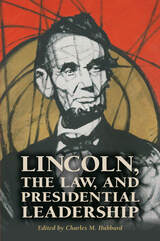 Lincoln, the Law, and Presidential Leadership
Edited by Charles M. Hubbard
Southern Illinois University Press, 2015 From his early years as a small-town lawyer through his rise to the presidency, Abraham Lincoln respected the rule of law. Secession and the Civil War, however, led him to expand presidential power in ways that, over time, transformed American society. In this incisive essay collection, recognized scholars from a variety of academic disciplines—including history, political science, legal studies, and journalism—explore Lincoln’s actions as president and identify within his decision-making process his commitment to law and the principles of the Constitution. In so doing, they demonstrate how wartime pressures and problems required that Lincoln confront the constitutional limitations imposed on the chief executive, and they expose the difficulty and ambiguity associated with the protection of civil rights during the Civil War.
The volume’s contributors not only address specific situations and issues that assisted in Lincoln’s development of a new understanding of law and its application but also show Lincoln’s remarkable presidential leadership. Among the topics covered are civil liberties during wartime; presidential pardons; the law and Lincoln’s decision-making process; Lincoln’s political ideology and its influence on his approach to citizenship; Lincoln’s defense of the Constitution, the Union, and popular government; constitutional restraints on Lincoln as he dealt with slavery and emancipation; the Lieber codes, which set forth how the military should deal with civilians and with prisoners of war; the loyalty (or treason) of government employees, including Lincoln’s domestic staff; and how Lincoln’s image has been used in presidential rhetoric. Although varied in their strategies and methodologies, these essays expand the understanding of Lincoln’s vision for a united nation grounded in the Constitution.
Lincoln, the Law, and Presidential Leadership shows how the sixteenth president’s handling of complicated legal issues during the Civil War, which often put him at odds with the Supreme Court and Congress, brought the nation through the war intact and led to a transformation of the executive branch and American society.
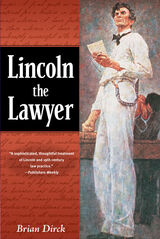 Lincoln the Lawyer
Brian Dirck
University of Illinois Press, 2006 What the law did to and for Abraham Lincoln, and its important impact on his future presidency Despite historians' focus on the man as president and politician, Abraham Lincoln lived most of his adult life as a practicing lawyer. It was as a lawyer that he fed his family, made his reputation, bonded with Illinois, and began his political career. Lawyering was also how Lincoln learned to become an expert mediator between angry antagonists, as he applied his knowledge of the law and of human nature to settle one dispute after another. Frontier lawyers worked hard to establish respect for the law and encourage people to resolve their differences without intimidation or violence. These were the very skills Lincoln used so deftly to hold a crumbling nation together during his presidency. The growth of Lincoln's practice attests to the trust he was able to inspire, and his travels from court to court taught him much about the people and land of Illinois. Lincoln the Lawyer explores the origins of Lincoln's desire to practice law, his legal education, his partnerships with John Stuart, Stephen Logan, and William Herndon, and the maturation of his far-flung practice in the 1840s and 1850s. Brian Dirck provides a context for law as it was practiced in mid-century Illinois and evaluates Lincoln's merits as an attorney by comparison with his peers. He examines Lincoln's clientele, his circuit practice, his views on legal ethics, and the supposition that he never defended a client he knew to be guilty. This approach allows readers not only to consider Lincoln as he lived his life--it also shows them how the law was used and developed in Lincoln's lifetime, how Lincoln charged his clients, how he was paid, and how he addressed judge and jury.
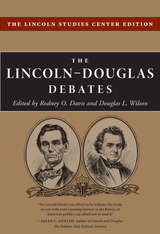 The Lincoln-Douglas Debates: The Lincoln Studies Center Edition
Edited by Rodney O. Davis and Douglas L. Wilson
University of Illinois Press, 2014 While the debates between Abraham Lincoln and Stephen A. Douglas are undoubtedly the most celebrated in American history, they may also be the most consequential as well. For the issues so fiercely debated in 1858 were about various interrelated aspects of one momentous, nation-threatening issue: slavery. The contest between Lincoln and Douglas became a testing ground for the viability of conflicting ideals in a nation deeply divided. One of the most colorful and engaging episodes in American history, this series of debates is of enduring interest as an illuminating instance of the ever-recurring dilemma of self-government: what happens when the guiding principle of democracy, "popular sovereignty," confronts a principled stand against a "moral, social, and political evil"? The tragic answer in this case came three years later: civil war. Important as they are, the Lincoln-Douglas debates have long since ceased to be self-explanatory. This edition is the first to provide a text founded on all known records, rather than following one or another of the partisan and sometimes widely-varying newspaper accounts. Meticulously edited and annotated, it provides numerous aids to help the modern reader understand the debates, including extensive introductory material, commentary, and a glossary. The fullest and most dependable edition of the Lincoln-Douglas debates ever prepared, this edition brings readers as close as possible to the original words of these two remarkable men.
Lincoln-Lore: Lincoln in the Popular Mind
Ray B. Browne
University of Wisconsin Press, 1996 Abraham Lincoln, both in his time and in ours, has always stood much taller than life. Well over a century after his assassination, Americans remain fascinated with the Civil War: what were the real issues over which it was fought, who were the actual people involved, and what the everyday life of those people was like. Lincoln, as the epitome of both the good and the bad of that war, continues to loom as the most important single object of our interest.
The people’s lore about Lincoln has through the years continued to grow and to assume ever greater importance both for what it tells about the man and the age in which he lived and for its amusement value.
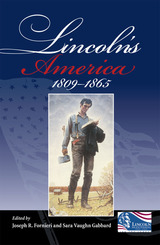 Lincoln's America: 1809 - 1865
Edited by Joseph R. Fornieri and Sara Vaughn Gabbard
Southern Illinois University Press, 2008 To fully understand and appreciate Abraham Lincoln’s legacy, it is important to examine the society that influenced the life, character, and leadership of the man who would become the Great Emancipator. Editors Joseph R. Fornieri and Sara Vaughn Gabbard have done just that in Lincoln’s America: 1809–1865, a collection of original essays by ten eminent historians that place Lincoln within his nineteenth-century cultural context.
Among the topics explored in Lincoln’s America are religion, education, middle-class family life, the antislavery movement, politics, and law. Of particular interest are the transition of American intellectual and philosophical thought from the Enlightenment to Romanticism and the influence of this evolution on Lincoln's own ideas.
By examining aspects of Lincoln’s life—his personal piety in comparison with the beliefs of his contemporaries, his success in self-schooling when frontier youths had limited opportunities for a formal education, his marriage and home life in Springfield, and his legal career—in light of broader cultural contexts such as the development of democracy, the growth of visual arts, the question of slaves as property, and French visitor Alexis de Tocqueville’s observations on America, the contributors delve into the mythical Lincoln of folklore and discover a developing political mind and a changing nation.
As Lincoln’s America shows, the sociopolitical culture of nineteenth-century America was instrumental in shaping Lincoln’s character and leadership. The essays in this volume paint a vivid picture of a young nation and its sixteenth president, arguably its greatest leader.
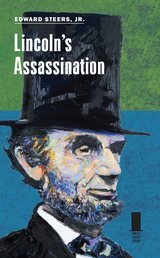 Lincoln's Assassination
Edward Steers, Jr.
Southern Illinois University Press, 2014 For 150 years, the assassination of Abraham Lincoln has fascinated the American people. Relatively few academic historians, however, have devoted study to it, viewing the murder as a side note tied to neither the Civil War nor Reconstruction. Over time, the traditional story of the assassination has become littered with myths, from the innocence of Mary Surratt and Samuel Mudd to John Wilkes Booth’s escape to Oklahoma or India, where he died by suicide several years later. In this succinct volume, Edward Steers, Jr. sets the record straight, expertly analyzing the historical evidence to explain Lincoln’s assassination. The decision to kill President Lincoln, Steers shows, was an afterthought. John Wilkes Booth’s original plan involved capturing Lincoln, delivering him to the Confederate leadership in Richmond, and using him as a bargaining chip to exchange for southern soldiers being held in Union prison camps. Only after Robert E. Lee surrendered the Army of Northern Virginia and Richmond fell to Union forces did Booth change his plan from capture to murder. As Steers explains, public perception about Lincoln’s death has been shaped by limited but popular histories that assert, alternately, that Secretary of War Edwin Stanton engineered the assassination or that John Wilkes Booth was a mad actor fueled by delusional revenge. In his detailed chronicle of the planning and execution of Booth’s plot, Steers demonstrates that neither Stanton nor anyone else in Lincoln’s sphere of political confidants participated in Lincoln’s death, and Booth remained a fully rational person whose original plan to capture Lincoln was both reasonable and capable of success. He also implicates both Mary Surratt and Samuel Mudd, as well as other conspirators, clarifying their parts in the scheme. At the heart of Lincoln’s assassination, Steers reveals, lies the institution of slavery. Lincoln’s move toward ending slavery and his unwillingness to compromise on emancipation spurred the white supremacist Booth and ultimately resulted in the president’s untimely death. With concise chapters and inviting prose, this brief volume will prove essential for anyone seeking a straightforward, authoritative analysis of one of the most dramatic events in American history.
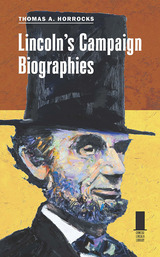 Lincoln's Campaign Biographies
Thomas A. Horrocks
Southern Illinois University Press, 2014 During the 1860 and 1864 presidential campaigns, Abraham Lincoln was the subject of over twenty campaign biographies. In this innovative study, Thomas A. Horrocks examines the role that these publications played in shaping an image of Lincoln that would resonate with voters and explores the vision of Lincoln that the biographies crafted, the changes in this vision over the course of four years, and the impact of these works on the outcome of the elections. Horrocks investigates Lincoln’s campaign biographies within the context of the critical relationship between print and politics in nineteenth-century America and compares the works about Lincoln with other presidential campaign biographies of the era. Horrocks shows that more than most politicians of his day, Lincoln deeply appreciated and understood the influence and the power of the printed word. The 1860 campaign biographies introduced to America “Honest Abe, the Rail Splitter,” a trustworthy, rugged candidate who appealed to rural Americans. When Lincoln ran for reelection in 1864, the second round of campaign biographies complemented this earlier portrait of Lincoln with a new, paternal figure, “Father Abraham,” more appropriate for Americans enduring a bloody civil war. Closing with a consideration of the influence of these publications on Lincoln’s election and reelection, Lincoln’s Campaign Biographies provides a new perspective for those seeking a better understanding of the sixteenth president and two of the most critical elections in American history.
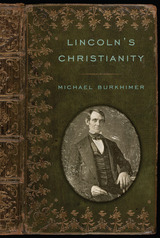 Lincoln's Christianity
Michael Burkhimer
Westholme Publishing, 2007 The Changing Role of Faith in the Life of the Sixteenth President of the United States After listening to Abraham Lincoln’s second inaugural address, many in the audience were stunned. Instead of a positive message about the coming Union victory, the president implicated the entire country in the faults and responsibility for slavery. Using Old Testament references, Lincoln explained that God was punishing all Americans for their role in the calamity with a bloody civil war.
These were surprising words from a man who belonged to no church, did not regularly attend services, and was known to have publicly and privately questioned some of Christianity’s core beliefs. But Lincoln’s life was one with supreme sadness—the death of his first fiancee, the subsequent loss of two of his sons—and these events, along with the chance encounter with a book in Mary Todd’s father’s library, The Christian’s Defense, are all part of the key to understanding Lincoln’s Christianity. Biblical quotations soon entered his speeches—a point noted by Stephen Douglas in their debates—but it is unclear whether Lincoln’s use of scripture was a signal that American politicians should openly embrace religion in their public lives, or a rhetorical tool to manipulate his audience, or a result of a personal religious transformation. After his death both secular and religious biographers claimed Lincoln as one of their own, touching off a controversy that remains today. In Lincoln’s Christianity, Michael Burkhimer examines the entire history of the president’s interaction with religion—accounts from those who knew him, his own letters and writings, the books he read—to reveal a man who did not believe in orthodox Christian precepts (and might have had a hard time getting elected today) yet, by his example, was a person and president who most truly embodied Christian teachings.
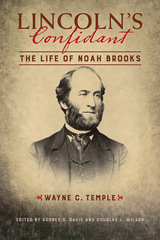 Lincoln's Confidant: The Life of Noah Brooks
Wayne C. Temple, Edited by Douglas L. Wilson and Rodney O. Davis: Introduction by Michael Burlingame
University of Illinois Press, 2019 From the legendary Lincoln scholar Wayne C. Temple comes the long-awaited full-length biography of Noah Brooks, the influential Illinois journalist who championed Abraham Lincoln in Illinois state politics and became his almost daily companion at the White House. Best remembered as one of the president's few true intimates, Brooks was also a nationally recognized man of letters, who mingled with the likes of Mark Twain and Bret Harte. Temple draws on archives and papers long thought lost to re-create Brooks's colorful life and relationship with Lincoln. Brooks's closeness to the president made him privy to Lincoln's thoughts on everything from literature to spirituality. Their frank conversations contributed to the wealth of journalism and personal observations that would make Brooks's writings a much-quoted source for historians and biographers of Lincoln. A carefully researched and well-documented scholarly resource, Lincoln's Confidant is the story of an extraordinary friendship by one of the luminaries of Lincoln scholarship.
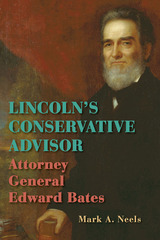 Lincoln’s Conservative Advisor: Attorney General Edward Bates
Mark A. Neels
Southern Illinois University Press, 2025 How a traditionalist became part of Lincoln's volatile team of rivals
Edward Bates, a founding father of Missouri and leader of the Missouri Whig Party, served as Abraham Lincoln’s attorney general during the American Civil War. The first full biography of Bates in nearly sixty years, Lincoln’s Conservative Advisor reveals a striking portrait of this complex figure in Lincoln’s cabinet.
Author Mark A. Neels begins with Bates’s youth in Virginia and follows him through his political and judicial career, his candidacy as a Republican presidential nominee in 1860, and his appointment to Abraham Lincoln’s cabinet as attorney general. Bates became an essential advisor to the president on key legal, military, and political matters from emancipation to civil liberties and equal rights, and his official opinion on Habeas Corpus would have a permanent effect on presidential authority and separation of powers. When Lincoln drafted the Emancipation Proclamation, Bates found himself at odds with the president and the radical anti-slavery members of the cabinet. But more than simply highlighting the conflict within Lincoln’s administration, Bates’s example lays bare the strong philosophical divisions within the Republican Party during the Civil War era. These divisions were present at the party’s inception, crystallized during the war, and ultimately sparked a political realignment during Reconstruction. Bates was at the center of this divide for most of its existence, and in some cases assisted in its promulgation.
Bates, a fierce opponent of radical Republicanism, embodies the conflict among Republicans over issues of slavery and citizenship. In both judicial and elective office, he was compelled by a sense of duty to defy the populism of President Andrew Jackson and Senator Thomas Hart Benton, and, later, the proslavery forces that threatened to tear the nation apart. Though he had owned slaves, Bates represented at least one enslaved woman’s suit for freedom, released from bondage the people he had enslaved, and aided Lincoln in his efforts to end slavery nationwide. Bates’s opinion on citizenship as attorney general helped pave the way for equal rights. His opinions were not always popular with either his colleagues or the greater populace, but Bates remained true to his conservative principles—a set of values shared by a large swath of Lincoln’s Republican Party—which positioned him as a leading opponent of radical Republicanism during the Reconstruction Era.
Lincoln's Constitution
Daniel A. Farber
University of Chicago Press, 2003 In Lincoln's Constitution Daniel Farber leads the reader to understand exactly how Abraham Lincoln faced the inevitable constitutional issues brought on by the Civil War. Examining what arguments Lincoln made in defense of his actions and how his words and deeds fit into the context of the times, Farber illuminates Lincoln's actions by placing them squarely within their historical moment. The answers here are crucial not only for a better understanding of the Civil War but also for shedding light on issues-state sovereignty, presidential power, and limitations on civil liberties in the name of national security-that continue to test the limits of constitutional law even today.
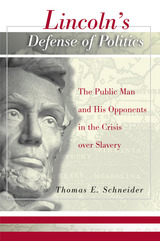 Lincoln's Defense of Politics: The Public Man and His Opponents in the Crisis Over Slavery
Thomas E. Schneider
University of Missouri Press, 2005
Abraham Lincoln is chiefly remembered for two historic achievements: he freed the slaves, and he saved the Union. That Lincoln did these things is not controversial. What is controversial is the connection between the moral and constitutional aspects of these achievements. Lincoln refused to see pro-Union and antislavery principles as exclusive, and thus he would not uphold one set of principles to the exclusion of the other or allow one to serve in the other’s place.
Lincoln’s opponents of the time denied these connections. They felt obliged to take sides and to choose between morality and the law. In Lincoln’s Defense of Politics, Thomas E. Schneider examines six key figures from among the two groups that were Lincoln’s opponents: the states’ rights constitutionalists—Alexander H. Stephens, John C. Calhoun, and George Fitzhugh—and the abolitionists—Henry David Thoreau, William Lloyd Garrison, and Frederick Douglass.
Lincoln differed from both groups in his political attitude toward the question of slavery. He made it clear that he regarded his own approach as more comprehensive than the more narrowly focused constitutional and moral ones favored by his opponents. Schneider uses the men from each of these groups to illustrate the broad significance of the slavery question and to shed light upon the importance of political considerations in public decision making.
Secession and war deprived Abraham Lincoln of the opportunity to demonstrate to the South that while he was opposed to any further extension of slavery, he bore no feelings of ill will toward the southern people. Lincoln did not expect southerners to concur with his party’s view of slavery as morally wrong, but he called on them as “national men” to consider whether sectional harmony was likely to be restored on any basis other than the one proposed by the Republicans. Slavery, he believed, was the only thing that could threaten the integrity of the nation.
Lincoln’s Defense of Politics is not primarily a work of history but a consideration of historical alternatives on their merits. It addresses itself to a question of perennial interest and significance: what is the nature and value of politics? Political theorists as well as students and scholars of American political thought will find this work of particular importance.
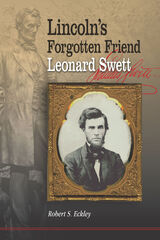 Lincoln's Forgotten Friend, Leonard Swett
Robert S. Eckley
Southern Illinois University Press, 2012 In 1849, while traveling as an attorney on the Eighth Judicial Circuit in Illinois, Abraham Lincoln befriended Leonard Swett (1825–89), a fellow attorney sixteen years his junior. Despite this age difference, the two men built an enduring friendship that continued until Lincoln’s assassination in 1865. Until now, no historian has explored Swett’s life or his remarkable relationship with the sixteenth president. In this welcome volume, Robert S. Eckley provides the first biography of Swett, crafting an intimate portrait of his experiences as a loyal member of Lincoln’s inner circle. Eckley chronicles Swett’s early life and the part he played in Lincoln’s political campaigns, including his role as an essential member of the team behind Lincoln’s two nominations and elections for the presidency. Swett counseled Lincoln during the formation of his cabinet and served as an unofficial advisor and sounding board during Lincoln’s time in office. Throughout his life, Swett wrote a great deal on Lincoln, and planned to write a biography about him, but Swett’s death preempted the project. His eloquent and interesting writings about Lincoln are described and reproduced in this volume, some for the first time. With Lincoln’s Forgotten Friend, Eckley removes Swett from the shadows of history and sheds new light on Lincoln’s personal relationships and their valuable contributions to his career.
Superior Achievement from the Illinois State Historical Society, 2013
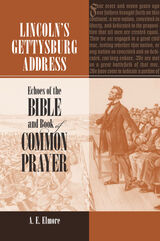 Lincoln's Gettysburg Address: Echoes of the Bible and Book of Common Prayer
A. E. Elmore
Southern Illinois University Press, 2009 While it has long been determined that Abraham Lincoln’s writings were influenced by the King James Bible, until now no full-length study has shown the precise ways in which the Gettysburg Address uses its specific language. Refuting the view that the address was crafted with traditional classical references, this revealing investigation provides a new way to think about the speech and the man who wrote it. A. E. Elmore offers chapter and verse evidence from the Bible as well as specific examples from the Episcopal Book of Common Prayer to illustrate how Lincoln borrowed from these sources to imbue his speech with meanings that would resonate with his listeners. He cites every significant word and phrase—conceived, brought forth, struggled, remaining, consecrate, dedicate, hallow, devotion, new birth, to name a few—borrowed by Lincoln from these two religious texts for use in his dedication of the Gettysburg National Cemetery. Lincoln’s Gettysburg Address focuses on a number of overlooked themes and ideas, such as the importance of literary allusion and the general public’s knowledge of the Bible in the age of Lincoln. It provides fresh answers to old questions and poses new questions: Was Lincoln a common thief who made use of words from previously published materials as well as from works by his contemporaries? Was he a genius whose literary and political skills were unmatched? No one who reads this highly engaging study will ever think about Lincoln or the Gettysburg Address the same way again.
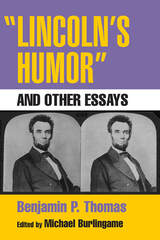 "Lincoln's Humor" and Other Essays
Benjamin P. Thomas. Edited by Michael Burlingame
University of Illinois Press, 2006 This volume gathers the best previously unpublished and uncollected writings on Abraham Lincoln and Lincoln scholarship by one of his great biographers, Benjamin P. Thomas. A skilled historian and a masterful storyteller himself, Thomas was widely regarded as the greatest Lincoln historian of his generation. With these essays, he combines historical depth with narrative grace in delineating Lincoln's qualities as a humorist, lawyer, and politician. From colorful tall tales to clever barbs aimed at political opponents, Lincoln clothed a shrewd wit in a homespun, backwoods vernacular. He used humor to defuse tension, illuminate a point, put others at ease--and sometimes for sheer fun. From an early reliance on broad humor and ridicule in speeches and on the stump, Lincoln's style shifted in 1854 to a more serious vein in which humor came primarily to elucidate an argument. "If I did not laugh occasionally I should die," he is said to have told his cabinet, "and you need this medicine as much as I do." Thomas brings his deep knowledge of Lincoln to essays on the great man's tumultuous career in Congress, his work as a lawyer, his experiences in the Courts, and his opinions of the South. A gracious survey of Lincoln's early biographers, particularly Ida Tarbell, stands alongside an appreciation of Harry Edward Pratt, a key figure in the early days of the Abraham Lincoln Association. Thomas also assesses Lincoln's use of language and the ongoing significance of the Gettysburg Address. This diverse collection is enhanced by an introduction by Michael Burlingame, himself a leading biographer of Lincoln. Burlingame provides a balanced portrait of Thomas and his circuitous path toward writing history.
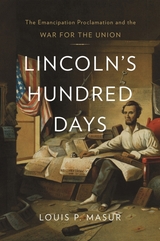 Lincoln’s Hundred Days: The Emancipation Proclamation and the War for the Union
Louis P. Masur
Harvard University Press, 2012 "The time has come now," Abraham Lincoln told his cabinet as he presented the preliminary draft of a "Proclamation of Emancipation." Lincoln's effort to end slavery has been controversial from its inception-when it was denounced by some as an unconstitutional usurpation and by others as an inadequate half-measure-up to the present, as historians have discounted its import and impact. At the sesquicentennial of the Emancipation Proclamation, Louis Masur seeks to restore the document's reputation by exploring its evolution.
Lincoln's Hundred Days is the first book to tell the full story of the critical period between September 22, 1862, when Lincoln issued his preliminary Proclamation, and January 1, 1863, when he signed the final, significantly altered, decree. In those tumultuous hundred days, as battlefield deaths mounted, debate raged. Masur commands vast primary sources to portray the daily struggles and enormous consequences of the president's efforts as Lincoln led a nation through war and toward emancipation. With his deadline looming, Lincoln hesitated and calculated, frustrating friends and foes alike, as he reckoned with the anxieties and expectations of millions. We hear these concerns, from poets, cabinet members and foreign officials, from enlisted men on the front and free blacks as well as slaves.
Masur presents a fresh portrait of Lincoln as a complex figure who worried about, listened to, debated, prayed for, and even joked with his country, and then followed his conviction in directing America toward a terrifying and thrilling unknown.
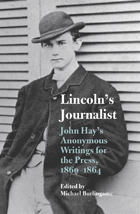 Lincoln's Journalist: John Hay's Anonymous Writings for the Press, 1860 - 1864
Edited by Michael Burlingame
Southern Illinois University Press, 2006 Michael Burlingame presents anonymous and pseudonymous newspaper articles written by Lincoln's assistant personal secretary, John Hay, between 1860 and 1864. In the White House, Hay became the ultimate insider, the man who had the president's ear. "Only an extremely small number of persons ever saw Abraham Lincoln both day and night in public as well as private settings from 1860 to 1864," notes Wayne C. Temple, chief deputy director, Illinois State Archives. "And only one of them had the literary flair of John Milton Hay." Burlingame takes great pains to establish authorship of the items reproduced here. He convincingly demonstrates that the essays and letters written for the Providence Journal, the Springfield Illinois State Journal, and the St. Louis Missouri Democrat under the pseudonym "Ecarte" are the work of Hay. And he finds much circumstantial and stylistic evidence that Hay wrote as "our special correspondent" for the Washington World and for the St. Louis Missouri Republican. Easily identifiable, Hay's style was "marked by long sentences, baroque syntactical architecture, immense vocabulary, verbal pyrotechnics, cocksure tone (combining acid contempt and extravagant praise), offbeat adverbs, and scornful adjectives."
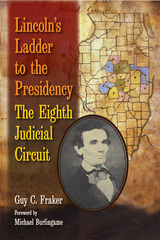 Lincoln's Ladder to the Presidency: The Eighth Judicial Circuit
Guy C. Fraker, with a foreword by Michael Burlingame
Southern Illinois University Press, 2012 Univeristy Press Books for Public and Secondary Schools 2013 edition
Superior Achievement by the Illinois State Historical Society, 2013
Throughout his twenty-three-year legal career, Abraham Lincoln spent nearly as much time on the road as an attorney for the Eighth Judicial Circuit as he did in his hometown of Springfield, Illinois. Yet most historians gloss over the time and instead have Lincoln emerge fully formed as a skillful politician in 1858. In this innovative volume, Guy C. Fraker provides the first-ever study of Lincoln’s professional and personal home away from home and demonstrates how the Eighth Judicial Circuit and its people propelled Lincoln to the presidency. Each spring and fall, Lincoln traveled to as many as fourteen county seats in the Eighth Judicial Circuit to appear in consecutive court sessions over a ten- to twelve-week period. Fraker describes the people and counties that Lincoln encountered, discusses key cases Lincoln handled, and introduces the important friends he made, friends who eventually formed the team that executed Lincoln’s nomination strategy at the Chicago Republican Convention in 1860 and won him the presidential nomination. As Fraker shows, the Eighth Judicial Circuit provided the perfect setting for the growth and ascension of Lincoln. A complete portrait of the sixteenth president depends on a full understanding of his experience on the circuit, and Lincoln’s Ladder to the Presidency provides that understanding as well as a fresh perspective on the much-studied figure, thus deepening our understanding of the roots of his political influence and acumen.
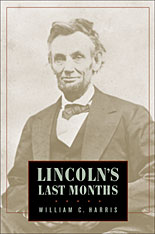 Lincoln's Last Months
William C. Harris
Harvard University Press, 2004 Lincoln Prize winner William C. Harris turns to the last months of Abraham Lincoln's life in an attempt to penetrate this central figure of the Civil War, and arguably America's greatest president. Beginning with the presidential campaign of 1864 and ending with his shocking assassination, Lincoln's ability to master the daunting affairs of state during the final nine months of his life proved critical to his apotheosis as savior and saint of the nation.
In the fall of 1864, an exhausted president pursued the seemingly intractable end of the Civil War. After four years at the helm, Lincoln was struggling to save his presidency in an election that he almost lost because of military stalemate and his commitment to restore the Union without slavery. Lincoln's victory in the election not only ensured the success of his agenda but led to his transformation from a cautious, often hesitant president into a distinguished statesman. He moved quickly to defuse destructive partisan divisions and to secure the adoption of the Thirteenth Amendment. And he skillfully advanced peace terms that did not involve the unconditional surrender of Confederate armies. Throughout this period of great trials, he managed to resist political pressure from Democrats and radical Republicans and from those seeking patronage and profit. By expanding the context of Lincoln's last months beyond the battlefield, Harris shows how the events of 1864-65 tested the president's life and leadership and how he ultimately emerged victorious, and became Father Abraham to a nation.
Lincoln's Legacy: Ethics and Politics
Edited by Phillip Shaw Paludan
University of Illinois Press, 2007 The four new essays in Lincoln's Legacy describe major ethical problems that the sixteenth president navigated what can be learned from how he did so. The distinguished and award-winning Lincoln scholars William Miller, Mark E. Neely Jr., Phillip Shaw Paludan, and Mark Summers describe Lincoln’s attitudes and actions during encounters with questions of politics, law, constitutionalism, patronage, and democracy. The remarkably focused essays include an assessment of Lincoln's virtues in the presidency, the first study on Lincoln and patronage in more than a decade, a challenge to the cliché of Lincoln the democrat, and a study of habeas corpus, Lincoln, and state courts. On the eve of the bicentennial celebration of Lincoln’s birth, Lincoln’s Legacy highlights his enduring importance in contemporary conversations about law, politics, and democracy.
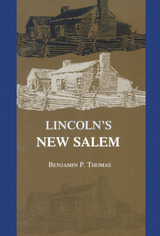 Lincoln's New Salem
Benjamin P. Thomas
Southern Illinois University Press, 1988 Thomas tells the story of the village where Abraham Lincoln lived from 1831 to 1837. His three-part examination of the village often referred to as Lincoln’s "Alma Mater" features the founding and early history of New Salem, Lincoln’s impact on the village and its effect on him, and the story of the Lincoln legend and the reconstruction of the town. Thomas argues convincingly that New Salem was the town where Lincoln acquired faith in himself, faith in people. At 22 the future president drifted into town seeking to become a blacksmith. Thomas introduces us to the people who created New Salem and who knew, influenced, and befriended Lincoln. Thomas highlights Lincoln’s arrival, his relationships with his neighbors, his important wrestling match with Jack Armstrong, his self-education, his quiet career as an Indian fighter, his experience as a postmaster largely indifferent to postal regulations, his financial woes as a businessman, his loyal friends who often came to his aid, and his election to the legislature. This colorful history closes with a discussion of the Lincoln legend. The truth of the stories is unimportant. What matters is that the growing Lincoln legend prompted the gradual realization that New Salem was not a dismal mire from which President Lincoln had had to extricate himself but was, in fact, an energizing force. This realization led to research and finally to the restoration of New Salem, which began in 1932.
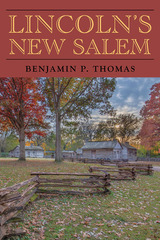 Lincoln's New Salem
Benjamin P. Thomas
Southern Illinois University Press, 1954 This authoritative classic tells the story of the Illinois village on the Sangamon River in which Abraham Lincoln lived from 1831 to 1837. Benjamin P. Thomas’s three-part examination of the town often referred to as Lincoln’s “alma mater” features the founding and early history of New Salem, Lincoln’s impact on the village and its effect on him, and the story of the Lincoln legend and the reconstruction of the town.
Lincoln’s New Salem highlights the young Lincoln’s arrival, his important wrestling match with Jack Armstrong, his self-education, his brief military career in the Black Hawk War, his experience as a postmaster largely indifferent to postal regulations, his financial woes with the general store, and his election to the state legislature. Making the point that New Salem was where Lincoln acquired faith in himself and in other people, Thomas introduces us to those who created New Salem and who knew, influenced, and befriended Lincoln, delving into his relationships with his neighbors and the loyal friends who often came to his aid.
This colorful history closes with a discussion of the Lincoln legend, which prompted the gradual realization that New Salem was not a dismal mire from which Abraham Lincoln had to extricate himself but was, in fact, an energizing force. This realization led to research and finally to the restoration of New Salem, which began in 1932. The preservation of the village remains vitally important.
First published in 1934 and revised by the author in 1954, this reissue includes a previously unpublished piece about New Salem and Illinois governor Henry Horner by Benjamin Thomas, a new introduction by Kenneth J. Winkle, and new photos by Robert Shaw, in addition to original drawings by Romaine Proctor and a 1971 foreword by Ralph G. Newman.
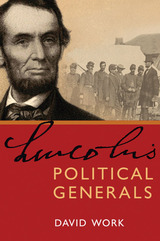 Lincoln's Political Generals
David Work
University of Illinois Press, 2012 At the beginning of the Civil War, President Abraham Lincoln sought to bind important political leaders to the Union by appointing them as generals. The task was formidable: he had to find enough qualified officers to command a military that would fight along a front that stretched halfway across the continent. West Point hadn't graduated enough officers, and many of its best chose to fight for the Confederacy. Lincoln needed loyal men accustomed to organization, administration, and command. He also needed soldiers, and political generals brought with them their constituents and patronage power. As the war proceeded, the value of the political generals became a matter of serious dispute. Could politicians make the shift from a political campaign to a military one? Could they be trusted to fight? Could they avoid destructive jealousies and the temptations of corruption? And with several of the generals being Irish or German immigrants, what effect would ethnic prejudices have on their success or failure? In this book, David Work examines Lincoln's policy of appointing political generals to build a national coalition to fight and win the Civil War. Work follows the careers of sixteen generals through the war to assess their contributions and to ascertain how Lincoln assessed them as commander-in-chief. Eight of the generals began the war as Republicans and eight as Democrats. Some commanded armies, some regiments. Among them were some of the most famous generals of the Union--such as Francis P. Blair Jr., John A. Dix, John A. Logan, James S. Wadsworth--and others whose importance has been obscured by more dramatic personalities. Work finds that Lincoln's policy was ultimately successful, as these generals provided effective political support and made important contributions in military administration and on the battlefield. Although several of them proved to be poor commanders, others were effective in exercising influence on military administration and recruitment, slavery policy, and national politics.
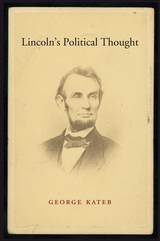 Lincoln's Political Thought
George Kateb
Harvard University Press, 2015 One of the most influential philosophers of liberalism turns his attention to the complexity of Lincoln’s political thought. At the center of Lincoln’s career is an intense passion for equality, a passion that runs so deep in the speeches, messages, and letters that it has the force of religious conviction for Lincoln. George Kateb examines these writings to reveal that this passion explains Lincoln’s reverence for both the Constitution and the Union.
The abolition of slavery was not originally a tenet of Lincoln’s political religion. He affirmed almost to the end of his life that the preservation of the Union was more important than ending slavery. This attitude was consistent with his judgment that at the founding, the agreement to incorporate slaveholding into the Constitution, and thus secure a Constitution, was more vital to the cause of equality than struggling to keep slavery out of the new nation. In Kateb’s reading, Lincoln destroys the Constitution twice, by suspending it as a wartime measure and then by enacting the Thirteenth Amendment to abolish slavery. The first instance was an effort to save the Constitution; the second was an effort to transform it, by making it answer the Declaration’s promises of equality.
The man who emerges in Kateb’s account proves himself adequate to the most terrible political situation in American history. Lincoln’s political life, however, illustrates the unsettling truth that in democratic politics—perhaps in all politics—it is nearly impossible to do the right thing for the right reasons, honestly stated.
Lincoln's Preparation for Greatness: THE ILLINOIS LEGISLATIVE YEARS
Paul Simon
University of Illinois Press, 1971
"Abraham Lincoln was a member of the Illinois Legislature from
1834 to 1842 -- one of the Long Nine, as the Sangamon County delegation
was known, all its members being more than six feet tall. It was during
these eight years that he came as close to scandal as he was ever to come
in his public or private life. Did he, or did he not, engage in shameless
logrolling to get the state capital moved to Springfield? This and other
aspects of Lincoln's apprenticeship in the legislator . . . are thoroughly
investigated."
-- Chicago Sun-Times
"The wealth of detail it contains makes it a worthwhile addition
to the study of Lincoln's legislative career."
-- Los Angeles Times
 Lincoln's Rail-Splitter: GOVERNOR RICHARD J. OGLESBY
Mark A. Plummer
University of Illinois Press, 2001 Richard James Oglesby is best known for introducing the rail-splitter image into Abraham Lincoln's successful presidential campaign of 1860, and in many ways his career ran parallel to Honest Abe's. This biography of the three-time governor of Illinois offers the first detailed view of a key figure in the great changes that swept Illinois and the country from the Jacksonian era through the Gilded Age.
Like Lincoln, Oglesby was born in Kentucky and spent most of his youth in central Illinois, apprenticing as a lawyer in Springfield and standing for election to the Illinois legislature, Congress, and U.S. Senate. Oglesby participated in the battles of Cerro Gordo and Vera Cruz during the Mexican-American War and made a small fortune in the gold rush of 1849. A superlative speaker, he ran unsuccessfully for Congress in a campaign that featured the Lincoln-Douglas debates of 1858, then was elected to the Illinois senate as Lincoln was being elected president.
When the Civil War came, Oglesby resigned his senate seat to lead a regiment of the Union Army. Critically wounded at the Battle of Corinth, he was promoted to major general before resigning his commission to run successfully for governor of Illinois. Oglesby was at Lincoln's deathbed and led the effort to build the sixteenth president's tomb in Springfield, delivering the major oration at its dedication. In the postwar years, Oglesby drew on his popularity, his association with the martyred Lincoln, and his extraordinary stump-speaking skills to rescue the Illinois Republican Party in a time of political crisis. In his third term as governor, Oglesby faced massive labor unrest in the aftermath of the Haymarket affair.
A mature and thoughtful biography, Lincoln's Rail-Splitter chronicles Oglesby's pivotal contribution to American political life while also providing a sensitive portrait of this able, energetic man.
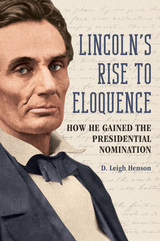 Lincoln's Rise to Eloquence: How He Gained the Presidential Nomination
D. Leigh Henson
University of Illinois Press, 2024 At turns eloquent and earthy, Abraham Lincoln’s rhetoric played a vital role in his success as a politician and statesman. D. Leigh Henson examines Lincoln’s pre-presidential development as a rhetorician, the purposes and methods behind his speeches and writings, and how the works contributed to his political rise. Lincoln’s close study of the rhetorical process drew on sources that ranged from classical writings to foundational American documents to the speeches of Daniel Webster. As Henson shows, Lincoln applied his learning to combine arguments on historical, legal, and moral grounds with appeals to emotion and his own carefully curated credibility. Henson also explores Lincoln’s use of the elements of structural design to craft coherent arguments that, whatever their varying purposes, used direct and plain language to reach diverse audiences--and laid the groundwork for his rise to the White House. Insightful and revealing, Lincoln’s Rise to Eloquence follows Lincoln from his early career through the years-long clashes with Stephen A. Douglas to trace the future president’s evolution as a communicator and politician.
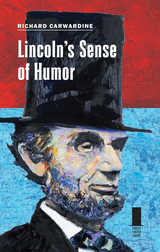 Lincoln's Sense of Humor
Richard Carwardine
Southern Illinois University Press, 2017 Winner, Abraham Lincoln Institute Book Prize, 2018
Winner, ISHS Annual Award for a Scholarly Publication, 2018
Abraham Lincoln was the first president to make storytelling, jokes, and laughter tools of the office, and his natural sense of humor has become legendary. Lincoln’s Sense of Humor registers the variety, complexity of purpose, and ethical dimension of Lincoln’s humor and pinpoints the political risks Lincoln ran in telling jokes while the nation was engaged in a bloody struggle for existence.
Complete with amusing anecdotes, this book shows how Lincoln’s uses of humor evolved as he matured and explores its versatility, range of expressions, and multiple sources: western tall tales, morality stories, bawdy jokes, linguistic tricks, absurdities, political satire, and sharp wit. While Lincoln excelled at self-mockery, nothing gave him greater pleasure than satirical work lampooning hypocrisy and ethical double standards. He particularly enjoyed David R. Locke’s satiric writings by Petroleum V. Nasby, a fictional bigoted secessionist preacher, and the book explores the nuances of Lincoln’s enthusiasm for what he called Locke’s genius, showing the moral springs of Lincoln’s humor.
Richard Carwardine methodically demonstrates that Lincoln’s funny stories were the means of securing political or personal advantage, sometimes by frontal assault on opponents but more often by depiction through parable, obfuscation through hilarity, refusal through wit, and diversion through cunning. Throughout his life Lincoln worked to develop the humorist’s craft and hone the art of storytelling. His jokes were valuable in advancing his careers as politician and lawyer and in navigating his course during a storm-tossed presidency. His merriness, however, coexisted with self-absorbed contemplation and melancholy. Humor was his lifeline; dark levity acted as a tonic, giving Lincoln strength to tackle the severe challenges he faced. At the same time, a reputation for unrestrained, uncontrollable humor gave welcome ammunition to his political foes. In fact, Lincoln’s jocularity elicited waves of criticism during his presidency. He was dismissed as a “smutty joker,” a “first rate second rate man,” and a “joke incarnated.”
Since his death, Lincoln’s anecdotes and jokes have become detached from the context that had given them their political and cultural bite, losing much of the ironic and satiric meaning that he had intended. With incisive analysis and laugh-inducing examples, Carwardine helps to recapture a strong component of Lincoln’s character and reanimates the good humor of our sixteenth president.
Lincoln's Supreme Court
David M. Silver
University of Illinois Press, 1956 Decades after its initial publication, Lincoln's Supreme Court remains the only book to focus exclusively on Abraham Lincoln's role in modifying the Supreme Court to secure the power he needed to save the Union.
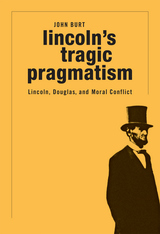 Lincoln's Tragic Pragmatism: Lincoln, Douglas, and Moral Conflict
John Burt
Harvard University Press, 2013 A New York Times Book Review Editors’ Choice
In 1858, challenger Abraham Lincoln debated incumbent Stephen Douglas seven times in the race for a U.S. Senate seat from Illinois. More was at stake than slavery in those debates. In Lincoln’s Tragic Pragmatism, John Burt contends that the very legitimacy of democratic governance was on the line. In a United States stubbornly divided over ethical issues, the overarching question posed by the Lincoln-Douglas debates has not lost its urgency: Can a liberal political system be used to mediate moral disputes? And if it cannot, is violence inevitable?
“John Burt has written a work that every serious student of Lincoln will have to read...Burt refracts Lincoln through the philosophy of Kant, Rawls and contemporary liberal political theory. His is very much a Lincoln for our time.”
—Steven B. Smith, New York Times Book Review
“I'm making space on my overstuffed shelves for Lincoln’s Tragic Pragmatism. This is a book I expect to be picking up and thumbing through for years to come.”
—Jim Cullen, History News Network
“Burt treats the [Lincoln-Douglas] debates as being far more significant than an election contest between two candidates. The debates represent profound statements of political philosophy and speak to the continuing challenges the U.S. faces in resolving divisive moral conflicts.”
—E. C. Sands, Choice
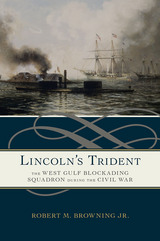 Lincoln's Trident: The West Gulf Blockading Squadron during the Civil War
Robert M. Browning Jr.
University of Alabama Press, 2014 In Lincoln’s Trident, Coast Guard historian Robert M. Browning Jr. continues his magisterial series about the Union’s naval blockade of the Confederacy during the American Civil War. Established by the Navy Department in 1862, the West Gulf Blockading Squadron operated from St. Andrews Bay (Panama City), Florida to the Rio Grande River. As with the Navy’s blockade squadrons operating in the Atlantic, the mission of the West Gulf Blockading Squadron was to cripple the South’s economy by halting imports and disrupting cotton exports, the South’s main source of hard currency. The blockade also limited transportation within the South and participated in combined operations with Union land forces.
The history of the squadron comprises myriad parts and players, deployed in a variety of missions across the thousand-mile-wide Western Theater. From disorganized beginnings, the squadron’s leaders and sailors had to overcome setbacks, unfulfilled expectations, and lost opportunities. Browning masterfully captures the many variables that influenced the strategic choices of Navy commanders as they both doggedly pursued unchanging long-term goals as well as improvised and reacted to short-term opportunities.
Notable among its leaders was David Glasgow Farragut, believed by many to be America’s greatest naval hero, who led the squadron through most of the war and the climactic Battle of Mobile Bay. Under his legendary leadership, the squadron not only sealed Confederate sea ports, but also made feints and thrusts up the Mississippi River as far north as Vicksburg, Mississippi.
Knowing the Navy’s role in isolating the Confederate economy and preventing the movement of troops and supplies within the South is crucial to understanding of the outcomes of the Civil War, as well as the importance of naval power in military conflicts. With thirty-five maps and illustrations, Lincoln’s Trident expounds upon an essential part of the Civil War as well as naval and American history.
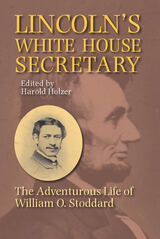 Lincoln's White House Secretary: The Adventurous Life of William O.Stoddard
Edited by Harold Holzer
Southern Illinois University Press, 2007 William Osborn Stoddard, Lincoln’s “third secretary” who worked alongside John G. Nicolay and John Hay in the White House from 1861 to 1865, completed his autobiography in 1907, one of more than one hundred books he wrote. An abridged version was published by his son in 1955 as “Lincoln’s Third Secretary: The Memoirs of William O. Stoddard.” In this new, edited version, Lincoln’s White House Secretary: The Adventurous Life of William O. Stoddard, Harold Holzer provides an introduction, afterword, and annotations and includes comments by Stoddard’s granddaughter, Eleanor Stoddard. The elegantly written volume gives readers a window into the politics, life, and culture of the mid-nineteenth century.
Stoddard’s bracing writing, eye for detail, and ear for conversation bring a novelistic excitement to a story of childhood observations, young friendships, hardscrabble frontier farming, early hints of the slavery crisis, the workings of the Lincoln administration, and the strange course of war and reunion in the southwest. More than a clerk, Stoddard was an adventurous explorer of American life, a farmer, editor, soldier, and politician.
Enhanced by seventeen illustrations, this narrative sympathetically draws the reader into the life and times of Lincoln’s third secretary, adding to our understanding of the events and the larger-than-life figures that shaped history.
 Linda Perdido: A Novel
Mac Wellman
University of Alabama Press, 2013 Linda Perdido, the story of the antisocial Linda Perdido told by her well-behaved sister Qua, is a memoir like no other.
Set in a vast and unknown region in the Midwest, Mac Wellman’s Linda Perdido chronicles the lives of two sisters: Linda and Qua Perdido. Linda is bad, acting out every antisocial impulse she has and then some; Qua is good but comes to hate her sister, though she chooses to write a memoir about her, thus Linda Perdido.
Their lives are complicated by many figures, among them the Traveler, a lonely man who follows the migration patterns of a strange bird, the Perdido Macaw; the Counter-Terrorist, who gets his facts wrong and cannot decipher the ominous chatter; a FedEx delivery man, Donn Morocco, who loses his mind after his truck is stolen by the rampaging Linda. These and others meet and complicate each other’s lives, often ruinously, culminating at what will become Ground Zero on the day before the attacks.
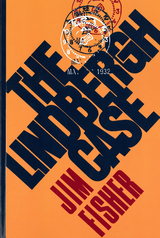 The Lindbergh Case: A Story of Two Lives
Fisher, Jim
Rutgers University Press, 1987 "If I had only one book to read on the Lindbergh case I should . . . choose Fisher's. It is balanced, impartial, and contains much material not to be found elsewhere."--Francis Russell, The New York Review of Books "Fisher . . . goes against the revisionist tide and argues strongly--and persuasively--for Hauptmann's guilt . . . a compelling book."--Patrick Reardon, Chicago Tribune "A good real-life crime yarn."--Kirkus Reviews "A riveting book."--Harry Sayen, The Times, Trenton "A real detective story."--Sylvia Sachs, The Pittsburgh Press "One cannot help getting caught up in the search for the child, then in the search for justice. These events resonate more than 50 years after they occurred."--John Katzenback, The New York Times Book Review "Fisher thoroughly covers the case, from the night the baby was taken from his home in Hopewell, NJ, on March 1, 1932, to Hauptmann's execution on April 3, 1936 . . . a convincing case."--Publishers Weekly "A grimly fascinating account of the kidnapping and murder of Charles A. Lindbergh, Jr., son of the world-famous aviator."--The Columbus Dispatch "A richly detailed, engrossing, and well-written history of the kidnapping saga. . . . may well become the definitive work on the subject."
Line Break: Poetry as Social Practice
James Scully
Northwestern University Press, 2005 Line Break is the major work on poetry as social practice and a must-read for anyone interested in contemporary criticism or poetry. For many years, James Scully, along with others, quietly radicalized American poetry—in theory and in practice, in how it is lived as well as in how it is written. In eight provocative essays, James Scully argues provocatively for artistic and cultural practice that actively opposes structures of power too often reinforced by intellectual activities.
 A Line Drawn in the Sand: Responses to the AIDS Treatment Crisis in Africa
Phyllis J. Kanki and Richard G. Marlink
Harvard University Press In the nearly three decades since the AIDS epidemic was first recognized, scientists have made tremendous strides in devising treatments for people living with HIV/AIDS. Yet in Africa, where more than 60 percent of HIV-infected people live, treatments remain out of reach for most.
A Line Drawn in the Sand captures the determination of several African nations in tackling the challenge of providing lifesaving antiretroviral therapies to their citizens: Botswana, which has some of the highest HIV infection rates worldwide; Nigeria, whose epidemic threatens to become one of the world’s largest; Senegal, often touted as one of the few countries with a model response to the HIV/AIDS epidemic; and Tanzania, whose extreme poverty threatens efforts to stem its epidemic.
By emphasizing the dramatic results that investments in AIDS treatments in Africa can bring, the book provides lessons to nations about scaling up their own treatment responses, hope to individuals and communities confronted with the often devastating impact of AIDS, and inspiration to the international HIV/AIDS community.
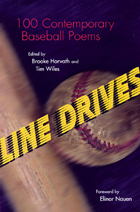 Line Drives: 100 Contemporary Baseball Poems
Edited by Brooke Horvath and Tim Wiles. Foreword by Elinor Nauen
Southern Illinois University Press, 2002 “We wait for baseball all winter long,” Bill Littlefield wrote in Boston Magazine a decade ago, “or rather, we remember it and anticipate it at the same time. We re-create what we have known and we imagine what we are going to do next. Maybe that’s what poets do, too.” Poetry and baseball are occasions for well-put passion and expressive pondering, and just as passionate attention transforms the prose of everyday life into poetry, it also transforms this game we write about, play, or watch. Editors Brooke Horvath and Tim Wiles unite their own passion for baseball and poetry in this collection, Line Drives: 100 Contemporary Baseball Poems, providing a forum for ninety-two poets. Line after line, like baseball itself game after game and season after season, these poems manage to make the old and the familiar new and surprising. The poems in these pages invite interrogation, and the reader—like the true baseball fan—must be willing to play the game, for these poems are fun, fresh, angry, nostalgic, meditative, and meant to be read aloud. They are keen on taking us deeply into baseball as sport and intent on offering countless metaphors for exploring history, religion, love, family, and self-identity. Each poem delivers images of pure beauty as the poets speak of murder and ghost runners and old ball gloves, of baseball as a tie that binds families—and indeed the nation—together, of the game as a stage upon which no-nonsense grit and skill are routinely displayed, and of the delight experienced in being one amid a mindlessly happy crowd. This book is true to the game’s long season and to the lives of those the game engages.
 Line of Fall
Miles Wilson
University of Iowa Press, 1989 With a full range of narrative techniques, the fourteen stories in this volume explore the arcs people trace as they make their way in the world. Miles Wilson's compelling narrative presents characters at crucial moments in their trajectories, when the nature and outcome of their lives can be illuminated. Though built out of the texture of ordinary life, these stories concentrate their focus where the luminous intersects the commonplace. Many of the stories are set in the American West, which often rises out of the background, virtually assuming the role of another character. In "Outsider," a fable of the artist and society is played out as a metaphysical western. "Wyoming" portrays a college professor, his career hanging by a thread, who meets an uncanny woman on a strange journey through a Wyoming blizzard. And in "Fire Season," a U.S. Forest Service firefighter undergoes an apocalyptic Santa Ana fire that takes him to the bewildering margins of the human and natural worlds.
 Line Of Sight: American Avant-Garde Film Since 1965
Paul Arthur
University of Minnesota Press, 2005 For three decades, Paul Arthur has been a leading observer and critic as well as a direct participant in America’s avant-garde cinema. In A Line of Sight, he provides a sweeping new account of the extravagant energies of American experimental cinema since 1965. Balancing close analysis of both major and lesser-known films with detailed examinations of their production, distribution, and exhibition, Arthur addresses the avant-garde’s cultural significance while offering a timely reconsideration of accepted critical categories and artistic options. Rather than treating American avant-garde cinema as a series of successive artistic breakthroughs, A Line of Sight emphasizes the importance of social and institutional networks, material exchanges, and historical disruptions and continuities. Throughout, Arthur pays close attention to themes and visual practices neglected or underrepresented in previous studies, scrutinizing portraiture as a vehicle for projecting dissident identities, highlighting the essay film and the contemporary city symphony, and assessing the contributions of regional and African American filmmaking to the avant-garde. He also explores thematic and formal questions that have been central to the avant-garde achievement: experimental film's relationship with mainstream narrative cinema and postwar American painting as well as the legacy of sixties’s counterculture; the uses and theoretical implications of found footage and the allegorizing of technology; and the schism between a poetic, expressive cinema and the antisubjective, rationalist bias of structural filmmaking. Amid the current resurgence of experimental filmmakers and the emergence of a new audience for their work, A Line of Sight reaffirms the extraordinary breadth and diversity of the avant-garde tradition in America.
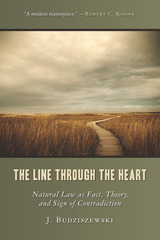 The Line Through the Heart: Natural Law as Fact, Theory, and Sign of Contradiction
J. Budziszewski
Intercollegiate Studies Institute, 2011
Budziszewski on natural law is simply the best. . . . A must read.”
—James V. Schall, S.J., author of Another Sort of Learning
“Truly fundamental . . . I shall enjoy reading [it] over and over again.”
—Russell Hittinger, author of The First Grace
Why do we demand happiness on terms that make happiness impossible?
In this brilliantly persuasive book, bestselling author J. Budziszewski examines the suicidal proclivity of our time, which is to deny the obvious. Our hearts are riddled with desires that oppose their deepest longings. Why? And what can we do about it?
Acclaimed philosopher J. Budziszewski addresses these questions in the brilliantly persuasive book The Line Through the Heart, finding the answers in the natural law. The journey of exploration takes us through politics, religion, ethics, law, philosophy, and more, with Budziszewski as expert guide.
While investigating the natural law and its implications, Budziszewski boldly confronts a wide range of contemporary issues, offering a newly integrated view of abortion, evolution, euthanasia, capital punishment, runaway courts, and the ersatz state religion built in the name of religious toleration.
Written in Budziszewski’s usual crystalline style, The Line Through the Heart shows that natural law is a matter of concern not merely to scholars but to everyone, for it touches how each of us lives, and how all of us live together. His profound examination of this subject helps us make sense of why habits that run against our nature have become second nature, and why our world seems to be going mad.
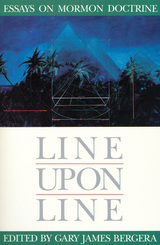 Line upon Line: Essays on Mormon Doctrine
Gary J. Bergera
Signature Books, 1989 Line Upon Line brings together for the first time in one book some of the most thoughtful and compelling essays on Mormon doctrine and theology that have appeared in recent years.
Among the contributors are Thomas G. Alexander, Peter C. Appleby, George Boyd, David John Buerger, Van Hale, Boyd Kirkland, Blake Ostler, Stephen L Richards, Kent E. Robson, Thaddeus E. Shoemaker, Vern Swanson, Dan Vogel, and Linda P. Wilcox.
For anyone who has assumed that Mormon doctrine appeared whole-cloth in a single revelation, Line Upon Line is an important primer. No issue, however central to Latter-day Saint theology, is exempt from gradual development over time. This includes the nature of God, the progression of the soul, free agency, the possibility of repentance and forgiveness through a divine sacrifice, the creation of the world, evolution of the species, and the nature and origin of evil.
In Line Upon Line, sixteen thoughtful, compelling essays offer reflective historical discussions of the development of Mormon doctrine from the statements of church leaders to the writings of LDS theologians to canonized scripture, rather than on the authors’ personal speculations. Noting the relative strengths and weaknesses of various theological or doctrinal teachings due to limited human understanding, the contributors suggest that differences of opinion can indicate the presence of genuine and sincere faith that God’s truth is nevertheless present in scriptural metaphor.
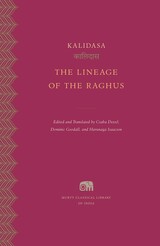 The Lineage of the Raghus
Kalidasa
Harvard University Press, 2024 A new English translation of Raghuvaṃśa by the celebrated Sanskrit poet Kalidasa, who inspired such modern writers as Goethe and Tagore.
For a millennium and a half, Kalidasa’s works—from The Cloud Messenger to The Recognition of Shakuntala—have delighted audiences in India and beyond. Although the renowned poet and dramatist inspired many literary works over the centuries, little is known about his life. He likely lived in central India in the late fourth or early fifth century.
Kalidasa’s The Lineage of the Raghus, or Raghuvaṃśa, belongs to the Sanskrit literary tradition of mahākāvya, or court poem. It recounts the lives of ancient kings in the sūryavaṃśa, the Solar Dynasty who ruled from the capital city of Ayodhya. The poem describes, among other episodes, the quest for offspring by Dilipa, a descendant of the primordial king Manu; the world conquest of his son Raghu, which offers a panorama of the Indian subcontinent; the exploits of the famous Rama, an incarnation of Vishnu; and the debaucheries of Agnivarna, which jeopardize the future of the lineage.
This volume presents a new edition of the Sanskrit text in the Devanagari script alongside a fresh English translation of this enduring epic.
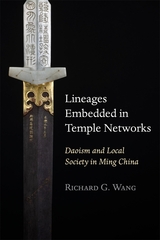 Lineages Embedded in Temple Networks: Daoism and Local Society in Ming China
Richard G. Wang
Harvard University Press, 2022 Lineages Embedded in Temple Networks explores the key role played by elite Daoists in social and cultural life in Ming China, notably by mediating between local networks—biological lineages, territorial communities, temples, and festivals—and the state. They did this through their organization in clerical lineages—their own empire-wide networks for channeling knowledge, patronage, and resources—and by controlling central temples that were nodes of local social structures.
In this book, the only comprehensive social history of local Daoism during the Ming largely based on literary sources and fieldwork, Richard G. Wang delineates the interface between local organizations (such as lineages and temple networks) and central state institutions. The first part provides the framework for viewing Daoism as a social institution in regard to both its religious lineages and its service to the state in the bureaucratic apparatus to implement state orthodoxy. The second part follows four cases to reveal the connections between clerical lineages and local networks. Wang illustrates how Daoism claimed a universal ideology and civilizing force that mediated between local organizations and central state institutions, which in turn brought meaning and legitimacy to both local society and the state.
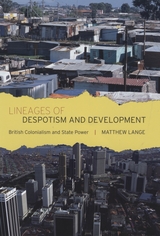 Lineages of Despotism and Development: British Colonialism and State Power
Matthew Lange
University of Chicago Press, 2009 Traditionally, social scientists have assumed that past imperialism hinders the future development prospects of colonized nations. Challenging this widespread belief, Matthew Lange argues in Lineages of Despotism and Development that countries once under direct British imperial control have developed more successfully than those that were ruled indirectly. Combining statistical analysis with in-depth case studies of former British colonies, this volume argues that direct rule promoted cogent and coherent states with high levels of bureaucratization and inclusiveness, which contributed to implementing development policy during late colonialism and independence. On the other hand, Lange finds that indirect British rule created patrimonial, weak states that preyed on their own populations. Firmly grounded in the tradition of comparative-historical analysis while offering fresh insight into the colonial roots of uneven development, Lineages of Despotism and Development will interest economists, sociologists, and political scientists alike.
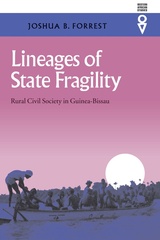 Lineages Of State Fragility: Rural Civil Society In Guinea-Bissau
Joshua B. Forrest
Ohio University Press, 2003 In Guinea-Bissau, as elsewhere in Africa, there is a disjuncture between the central state and rural civil society. It is this significant and overlooked aspect of Guinea-Bissau’s political evolution—the continuing ability of civil society to evade and thwart state power—that is at the heart of Joshua B. Forrest’s Lineages of State Fragility. Professor Forrest argues that despite European influences, the contemporary fragility of African states can be fully appreciated only by examining the indigenous social context in which these states evolved. Focusing on Guinea-Bissau, Forrest exposes the emergence of a strong and adaptable “rural civil society” that can be traced back to precolonial times. Lineages of State Fragility analyzes the social, political, and military experiences of this rural civil society to account for the origins of Guinea-Bissau’s soft state. For example, Forrest identifies interethnic social and military practices that became entrenched in rural social structures and continued to evolve through the colonial period, enabling Guinea-Bissauans to resist state predation. Lineages of State Fragility offers an unorthodox explanation of African politics by tracing the direct social links among the precolonial, colonial, and postcolonial periods and affirms the role of rural actors in determining present-day political outcomes. Based on remarkably extensive research conducted in archives in Guinea-Bissau, Senegal, and Portugal, Lineages of State Fragility represents both a new approach to the region’s past and present and an important synthesis of the political analysis that has come before.
 Lineages of the Global City: Occult Modernism and the Spiritualization of Democracy
Shiben Banerji
University of Texas Press, 2025 The forgotten history of the occult foundations of the early twentieth-century global city. War, revolution, genocide, rebellion, slump. The economic and political turmoil of the early twentieth century seemed destined to rip asunder the ties that bound colonizers and the colonized to one another. The upheaval represented an opportunity, and not just to nationalists who imagined new homelands or to socialists who dreamed of international brotherhood. For modernists in the orbit of various occultisms, the crisis of empire also represented an opportunity to reveal humanity’s fundamental unity and common fate. Lineages of the Global City recounts a continuous, if also contentious, transnational exchange among modernists and occultists across the Americas, Europe, South Asia, and Australia between 1905 and 1949. At stake were the feelings and affect of a new global subject who would perceive themselves as belonging to humanity as a unified whole, and the urban environment that would foster their subjectivity. The interventions in this debate, which drew in the period’s most renowned modernists, took the form of a succession of plans for cities, suburbs, and communes, as well as experiments in building, drawing, printmaking, filmmaking, and writing. Weaving together postcolonial, feminist, and Marxist insight on subject formation, Shiben Banerji advances a new way of understanding modernist urban space as the design of subjective effects.
Lineages of the Literary Left: Essays in Honor of Alan M. Wald
Howard Brick, Robbie Lieberman, and Paula Rabinowitz, Editors
Michigan Publishing, 2015 For nearly half a century, Alan M. Wald’s pathbreaking research has demonstrated that attention to the complex lived experiences of writers on the Left provides a new context for viewing major achievements as well as instructive minor ones in United States fiction, poetry, drama, and criticism. The essays in this volume in honor of Alan M. Wald investigate aspects of intellectual, literary, and cultural movements and figures associated with left-wing politics beginning in the early twentieth century and continuing into our own time. Intimately linked with social struggle, the thinkers and actors analyzed in these diverse essays can be collectively understood to form the intertwined lineages of the Literary Left.
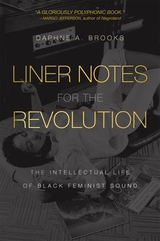 Liner Notes for the Revolution: The Intellectual Life of Black Feminist Sound
Daphne A. Brooks
Harvard University Press, 2021 Winner of the Ralph J. Gleason Music Book Award, Rock & Roll Hall of Fame
Winner of the American Book Award, Before Columbus Foundation
Winner of the PEN Oakland–Josephine Miles Award
Winner of the MAAH Stone Book Award
A Pitchfork Best Music Book of the Year
A Rolling Stone Best Music Book of the Year
“Brooks traces all kinds of lines, finding unexpected points of connection…inviting voices to talk to one another, seeing what different perspectives can offer, opening up new ways of looking and listening by tracing lineages and calling for more space.”
—New York Times
An award-winning Black feminist music critic takes us on an epic journey through radical sound from Bessie Smith to Beyoncé.
Daphne A. Brooks explores more than a century of music archives to examine the critics, collectors, and listeners who have determined perceptions of Black women on stage and in the recording studio. How is it possible, she asks, that iconic artists such as Aretha Franklin and Beyoncé exist simultaneously at the center and on the fringe of the culture industry?
Liner Notes for the Revolution offers a startling new perspective on these acclaimed figures—a perspective informed by the overlooked contributions of other Black women concerned with the work of their musical peers. Zora Neale Hurston appears as a sound archivist and a performer, Lorraine Hansberry as a queer Black feminist critic of modern culture, and Pauline Hopkins as America’s first Black female cultural commentator. Brooks tackles the complicated racial politics of blues music recording, song collecting, and rock and roll criticism. She makes lyrical forays into the blues pioneers Bessie Smith and Mamie Smith, as well as fans who became critics, like the record-label entrepreneur and writer Rosetta Reitz. In the twenty-first century, pop superstar Janelle Monae’s liner notes are recognized for their innovations, while celebrated singers Cécile McLorin Salvant, Rhiannon Giddens, and Valerie June take their place as cultural historians.
With an innovative perspective on the story of Black women in popular music—and who should rightly tell it—Liner Notes for the Revolution pioneers a long overdue recognition and celebration of Black women musicians as radical intellectuals.
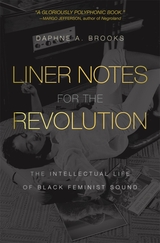 Liner Notes for the Revolution: The Intellectual Life of Black Feminist Sound
Daphne A. Brooks
Harvard University Press Winner of the Ralph J. Gleason Music Book Award, Rock & Roll Hall of Fame
Winner of the American Book Award, Before Columbus Foundation
Winner of the PEN Oakland–Josephine Miles Award
Winner of the MAAH Stone Book Award
A Pitchfork Best Music Book of the Year
A Rolling Stone Best Music Book of the Year
A Boston Globe Summer Read
“Brooks traces all kinds of lines…inviting voices to talk to one another, seeing what different perspectives can offer, opening up new ways of looking and listening.”
—New York Times
“A wide-ranging study of Black female artists, from elders like Bessie Smith and Ethel Waters to Beyoncé and Janelle Monáe…Connecting the sonic worlds of Black female mythmakers and truth-tellers.”
—Rolling Stone
“A gloriously polyphonic book.”
—Margo Jefferson, author of Negroland
How is it possible that iconic artists like Aretha Franklin and Beyoncé can be both at the center and on the fringe of the culture industry? Daphne Brooks explores more than a century of music archives to bring to life the critics, collectors, and listeners who have shaped our perceptions of Black women both on stage and in the recording studio.
Liner Notes for the Revolution offers a startling new perspective, informed by the overlooked contributions of other Black women artists. We discover Zora Neale Hurston as a sound archivist and performer, Lorraine Hansberry as a queer feminist critic of modern culture, and Pauline Hopkins as America’s first Black female cultural commentator. Brooks tackles the complicated racial politics of blues music recording, song collecting, and rock and roll criticism in this long overdue celebration of Black women musicians as radical intellectuals.
The Lines
Anthony Varallo
University of Iowa Press, 2019 Set in the summer of 1979, when America was running out of gas, The Lines tells the story of a family of four—the mother, the father, the girl, and the boy—in the first months of a marital separation. Through alternating perspectives, we follow the family as they explore new territory, new living arrangements, and new complications. The mother returns to school. The father moves into an apartment. The girl squares off with her mother, while the boy struggles to make sense of the world. The Lines explores the way we are all tied to one another, and how all experience offers the possibility of love and connection as much as loss and change.
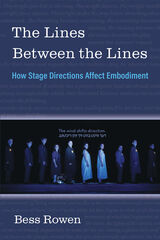 The Lines Between the Lines: How Stage Directions Affect Embodiment
Bess Rowen
University of Michigan Press, 2021 What is the purpose of a stage direction? These italicized lines written in between the lines of spoken dialogue tell us a great deal of information about a play's genre, mood, tone, visual setting, cast of characters, and more. Yet generations of actors have been taught to cross these words out as records of previous performances or signs of overly controlling playwrights, while scholars have either treated them as problems to be solved or as silent lines of dialogue. Stage directions can be all of these things, and yet there are examples from over one-hundred years of American playwriting that show that stage directions can also be so much more. The Lines Between the Lines focuses on how playwrights have written stage directions that engage readers, production team members, and scholars in a process of embodied creation in order to determine meaning. Author Bess Rowen calls the products of this method “affective stage directions” because they reach out from the page and affect the bodies of those who encounter them. Affective stage directions do not tell a reader or production team what a given moment looks like, but rather how a moment feels. In this way, these stage directions provide playgrounds for individual readers or production teams to make sense of a given moment in a play based on their own individual cultural experience, geographic location, and identity-markers. Affective stage directions enable us to check our assumptions about what kinds of bodies are represented on stage, allowing for a greater multitude of voices and kinds of embodied identity to make their own interpretations of a play while still following the text exactly. The tools provided in this book are as useful for the theater scholar as they are for the theater audience member, casting director, and actor. Each chapter covers a different function of stage directions (spoken, affective, choreographic, multivalent, impossible) and looks at it through a different practical lens (focusing on actors, directors, designers, dramaturgs, and readers). Every embodied person will have a slightly different understanding of affective stage directions, and it is precisely this diversity that makes these stage directions crucial to understanding theater in our time.
 The Line’s Eye: Poetic Experience, American Sight
Elisa New
Harvard University Press, 1998 Is American vision implicitly possessive, as a generation of critics contends? By viewing the American poetic tradition through the prism of pragmatism, Elisa New contests this claim. A new reading of how poetry "sees," her work is a passionate defense of the power of the poem, the ethics of perception, and the broader possibilities of American sight.
American poems see more fully, and less invasively, than accounts of American literature as an inscription of imperial national ideology would allow. Moreover, New argues, their ways of seeing draw on, and develop, a vigorous mode of national representation alternative to the appropriative sort found in the quintessential American genre of encounter, the romance. Grounding her readings of Dickinson, Frost, Moore, and Williams in foundational texts by Edwards, Jefferson, Audubon, and Thoreau, New shows how varieties of attentiveness and solicitude cultivated in the early literature are realized in later poetry. She then discloses how these ideas infuse the philosophical notions about pragmatic experience codified by Emerson, James, and Dewey. As these philosophers insisted, and as New's readings prove, art is where the experience of experience can be had: to read, as to write, a poem is to let the line guide one's way.
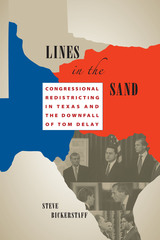 Lines in the Sand: Congressional Redistricting in Texas and the Downfall of Tom DeLay
By Steve Bickerstaff
University of Texas Press, 2007 The events of 2003 in Texas were important to the political history of this country. Congressman Tom DeLay led a Republican effort to gerrymander the state's thirty-two congressional districts to defeat all ten of the Anglo Democratic incumbents and to elect more Republicans; Democratic state lawmakers fled the state in an effort to defeat the plan. The Lone Star State uproar attracted attention worldwide. The Republicans won this showdown, gaining six additional seats from Texas and protecting the one endangered Republican incumbent. Some of the methods used by DeLay to achieve this result, however, led to his criminal indictment and ultimately to his downfall. With its eye-opening research, readable style, and insightful commentary, Lines in the Sand provides a front-line account of what happened in 2003, often through the personal stories of members of both parties and of the minority activist groups caught in a political vortex. Law professor Steve Bickerstaff provides much-needed historical perspective and also probes the aftermath of the 2003 redistricting, including the criminal prosecutions of DeLay and his associates and the events that led to DeLay's eventual resignation from the U.S. House of Representatives. As a result, Bickerstaff graphically shows a dark underside of American politics—the ruthless use of public institutional power for partisan gain.
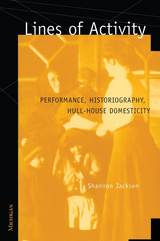 Lines of Activity: Performance, Historiography, Hull-House Domesticity
Shannon Jackson
University of Michigan Press, 2001 Lines of Activity investigates the cultural life of the Hull-House Settlement of Chicago, one of the most significant reform institutions of the Progressive Era, from its founding in 1889 through its growth into a major social service institution. The study focuses specifically on the role of performance--not only theatrical representation, but also athletics, children's games, story-telling, festivals, living museums, and the practices of everyday life--to demonstrate how such cultural rituals could propel social activism at Hull-House and paradoxically serve as vehicles for both cultural expression and cultural assimilation.
This groundbreaking book demonstrates how performance analysis can contribute to the historical study of American reform as well as to critical inquiry on the arts and social change. She develops connections between performativity and sex/gender difference by interpreting Hull-House as a sphere of queer kinship and alternative gender performance. Lines of Activity also engages a variety of debates on the nature of historical representation, and the role of "theory" in historical writing.
As the notion of "performance historiography" gains currency, Jackson's study exposes the gender politics of such scholarly trends. By selecting the Progressive Era and Hull-House as arenas of inquiry, Jackson foregrounds how past discourses of domesticity, pragmatism, transnationalism, and environmentalism already contain performance-centered notions of identity, space, and community. Through these and other arguments, Lines of Activity reveals the intimate connection between a history of Hull-House performance and the performance of Hull-House history.
Shannon Jackson is Assistant Professor of Rhetoric and of Dramatic Art and Dance, University of California, Berkeley.
 Lines of Connection: Drawing and Printmaking, 1400-1850
Edina Adam
J. Paul Getty Trust, The, 2025 The first volume to chart the rich and reciprocal relationship between drawing and printmaking from the fifteenth to nineteenth centuries.
While often viewed and studied separately, drawings and prints have always been closely intertwined. They facilitated and generated the production of one another, and in some instances, clear distinctions between the two dissolved. Many artists created drawings specifically intended for translation into print, and an even greater number used prints as a training tool, copying from them to hone drawing skills. This reciprocal relationship goes even deeper, however, as innovative artists made fascinating hybrid works that blurred the boundaries between the two media, pushing against modern definitions and hierarchies.
Lines of Connection charts these historical and geographical continuities for the first time by bringing together works on paper of superb quality, foregrounding issues of artistic process and collaboration, technical innovation, and creative ingenuity. Featuring over 170 prints and drawings by such artists as Albrecht Dürer, Parmigianino, Hendrick Goltzius, Maria Sibylla Merian, Rembrandt van Rijn, and William Blake, this catalogue is a rich narrative introduction to the compelling, yet understudied, relationship between drawing and printmaking.
This volume is published to accompany an exhibition on view at The Art Institute of Chicago from March 15 to June 1, 2025 and at the J. Paul Getty Museum at the Getty Center from July 1 to September 14, 2025.
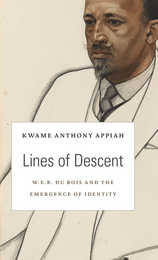 Lines of Descent: W. E. B. Du Bois and the Emergence of Identity
Kwame Anthony Appiah
Harvard University Press, 2014 W. E. B. Du Bois never felt so at home as when he was a student at the University of Berlin. But Du Bois was also American to his core, scarred but not crippled by the racial humiliations of his homeland. In Lines of Descent, Kwame Anthony Appiah traces the twin lineages of Du Bois’ American experience and German apprenticeship, showing how they shaped the great African-American scholar’s ideas of race and social identity.
At Harvard, Du Bois studied with such luminaries as William James and George Santayana, scholars whose contributions were largely intellectual. But arriving in Berlin in 1892, Du Bois came under the tutelage of academics who were also public men. The economist Adolf Wagner had been an advisor to Otto von Bismarck. Heinrich von Treitschke, the historian, served in the Reichstag, and the economist Gustav von Schmoller was a member of the Prussian state council. These scholars united the rigorous study of history with political activism and represented a model of real-world engagement that would strongly influence Du Bois in the years to come.
With its romantic notions of human brotherhood and self-realization, German culture held a potent allure for Du Bois. Germany, he said, was the first place white people had treated him as an equal. But the prevalence of anti-Semitism allowed Du Bois no illusions that the Kaiserreich was free of racism. His challenge, says Appiah, was to take the best of German intellectual life without its parochialism—to steal the fire without getting burned.
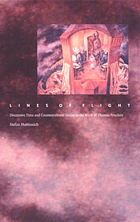 Lines of Flight: Discursive Time and Countercultural Desire in the Work of Thomas Pynchon
Stefan Mattessich
Duke University Press, 2002 For Thomas Pynchon, the characteristic features of late capitalism—the rise of the military-industrial complex, consumerism, bureaucratization and specialization in the workplace, standardization at all levels of social life, and the growing influence of the mass media—all point to a transformation in the way human beings experience time and duration. Focusing on Pynchon’s novels as representative artifacts of the postwar period, Stefan Mattessich analyzes this temporal transformation in relation not only to Pynchon’s work but also to its literary, cultural, and theoretical contexts.
Mattessich theorizes a new kind of time—subjective displacement—dramatized in the parody, satire, and farce deployed through Pynchon’s oeuvre. In particular, he is interested in showing how this sense of time relates to the counterculture of the 1960s and 1970s. Examining this movement as an instance of flight or escape and exposing the beliefs behind it, Mattessich argues that the counterculture’s rejection of the dominant culture ultimately became an act of self-cancellation, a rebellion in which the counterculture found itself defined by the very order it sought to escape. He points to parallels in Pynchon’s attempts to dramatize and enact a similar experience of time in the doubling-back, crisscrossing, and erasure of his writing. Mattessich lays out a theory of cultural production centered on the ethical necessity of grasping one’s own susceptibility to discursive forms of determination.
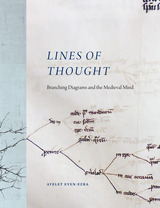 Lines of Thought: Branching Diagrams and the Medieval Mind
Ayelet Even-Ezra
University of Chicago Press, 2021 We think with objects—we conduct our lives surrounded by external devices that help us recall information, calculate, plan, design, make decisions, articulate ideas, and organize the chaos that fills our heads. Medieval scholars learned to think with their pages in a peculiar way: drawing hundreds of tree diagrams. Lines of Thought is the first book to investigate this prevalent but poorly studied notational habit, analyzing the practice from linguistic and cognitive perspectives and studying its application across theology, philosophy, law, and medicine.
These diagrams not only allow a glimpse into the thinking practices of the past but also constitute a chapter in the history of how people learned to rely on external devices—from stone to parchment to slide rules to smartphones—for recording, storing, and processing information. Beautifully illustrated throughout with previously unstudied and unedited diagrams, Lines of Thought is a historical overview of an important cognitive habit, providing a new window into the world of medieval scholars and their patterns of thinking.
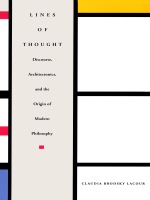 Lines of Thought: Discourse, Architectonics, and the Origin of Modern Philosophy
Claudia Brodsky Lacour
Duke University Press, 1996 It is considerably easier to say that modern philosophy began with Descartes than it is to define the modernity and philosophy to which Descartes gave rise. In Lines of Thought, Claudia Brodsky Lacour describes the double origin of modern philosophy in Descartes’s Discours de la méthode and Géométrie, works whose interrelation, she argues, reveals the specific nature of the modern in his thought. Her study examines the roles of discourse and writing in Cartesian method and intuition, and the significance of graphic architectonic form in the genealogy of modern philosophy.
While Cartesianism has long served as a synonym for rationalism, the contents of Descartes’s method and cogito have remained infamously resistant to rational analysis. Similarly, although modern phenomenological analyses descend from Descartes’s notion of intuition, the “things” Cartesian intuitions represent bear no resemblance to phenomena. By returning to what Descartes calls the construction of his “foundation” in the Discours, Brodsky Lacour identifies the conceptual problems at the root of Descartes’s literary and aesthetic theory as well as epistemology. If, for Descartes, linear extension and “I” are the only “things” we can know exist, the Cartesian subject of thought, she shows, derives first from the intersection of discourse and drawing, representation and matter. The crux of that intersection, Brodsky Lacour concludes, is and must be the cogito, Descartes’s theoretical extension of thinking into material being. Describable in accordance with the Géométrie as a freely constructed line of thought, the cogito, she argues, extends historically to link philosophy with theories of discursive representation and graphic delineation after Descartes. In conclusion, Brodsky Lacour analyzes such a link in the writings of Claude Perrault, the architectural theorist whose reflections on beauty helped shape the seventeenth-century dispute between “the ancients and the moderns.”
Part of a growing body of literary and interdisciplinary considerations of philosophical texts, Lines of Thought will appeal to theorists and historians of literature, architecture, art, and philosophy, and those concerned with the origin and identity of the modern.
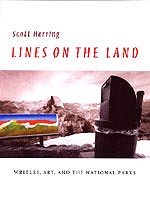 Lines on the Land: Writers, Art, and the National Parks
Scott Herring
University of Virginia Press, 2004 The nineteenth-century photographer William Henry Jackson once complained of the skepticism with which early descriptions of Yellowstone were met: the place was too wondrous to be believed. The public demanded proof, and a host of artists and writers obliged. These early explorers possessed a vigorous devotion to the young nation's wilderness--the naturalist John Muir famously toured the land from Wisconsin to Florida on foot--and through their work established aesthetic categories that exist to this day. In Lines on the Land, Scott Herring contends that these writers and artists were canon makers, recognizing the national parks as naturally occurring works of art and conferring upon them a cultural prestige: the parks were the splendid focal points of the American landscape.
These early, canonizing works are homages to a vast, untouched wilderness. This praise would gradually give way, however, to a distinctly American anger--what Herring calls "outraged idealism." Later generations were faced with a changing culture that had imperfectly absorbed, and even misrepresented, the national-park aesthetic. The postwar park was overrun by cars and tourists who could not possibly match the pioneering naturalists' profound commitment to and appreciation for their surroundings. The collective tone of the parks' chroniclers, as a result, evolved from celebration of awesome beauty to indignation over the perceived corruption of the parks, both as an ideal and as actual physical settings.
Herring traces this shift through the work of a wide spectrum of creative minds, from early figures such as Muir and Thomas Moran to later observers of the parks such as Ansel Adams, Sylvia Plath, Edward Abbey, and Rick Bass. The text is punctuated by autobiographical "interchapters," in which Herring relates the book's chief themes to his own experiences in Yellowstone National Park.
--------------------------------------------------------------------------------
Scott Herring, a former employee at Yellowstone National Park, is a Lecturer in English at the University of California, Davis.
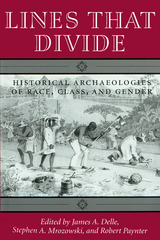 Lines That Divide: Historical Archaeologies of Race, Class, and Gender
James A. Delle
University of Tennessee Press, 2003 "A truly creative, rigorous, and novel interdisciplinary collection that rethinks some of historical archaeology’s most fundamental questions."—Paul Mullins, Indiana University–Purdue University
The division of human society by race, class, and gender has been addressed by scholars in many of the social sciences. Now historical archaeologists are demonstrating how material culture can be used to examine the processes that have erected boundaries between people.
Drawing on case studies from around the world, the essays in this volume highlight diverse moments in the rise of capitalist civilization both in Western Europe and its colonies. In the first section, the contributors address the dynamics of the racial system that emerged from European colonialism. They show how archaeological remains shed light on the institution of slavery in the American Southeast, on the treatment of Native Americans by Mormon settlers, and on the color line in colonial southern Africa. The next group of articles considers how gender was negotiated in nineteenth-century New York City, in colonial Ecuador, and on Jamaican coffee plantations. A final section focuses on the issue of class division by examining the built environment of eighteenth-century Catalonia and material remains and housing from early industrial Massachusetts.
These essays constitute an archaeology of capitalism and clearly demonstrate the importance of history in shaping cultural consciousness. Arguing that material culture is itself an active agent in the negotiation of social difference, they reveal the ways in which historical archaeologists can contribute to both the definition and dismantling of the lines that divide.
The Editors: James A. Delle is an assistant professor of anthropology at Franklin and Marshall College and the author of An Archaeology of Social Space: Analyzing Coffee Plantations in Jamaica's Blue Mountains.
Stephen A. Mrozowski is an associate professor of anthropology at the University of Massachusetts–Boston, director of the Andrew Fiske Memorial Center for Archaeological Research, and co-author of Living on the Boott: Historical Archaeology of the Boott Cotton Mills, Lowell, Massachusetts.
Robert Paynter is a professor of anthropology at the University of Massachusetts–Amherst, author of Models of Spatial Inequality, and co-editor of The Archaeology of Inequality.
The Contributors: Marjorie R. Abel, Mark Bograd, James A. Delle, Terrence W. Epperson, William B. Fawcett, Ross W. Jamieson, David L. Larsen, Walter Robert Lewelling, Patricia Hart Mangan, Stephen A. Mrozowski, Michael S. Nassaney, Thomas C. Patterson, Robert Paynter, Warren Perry, Paul A. Shackel, Theresa A. Singleton, Diana diZerega Wall.
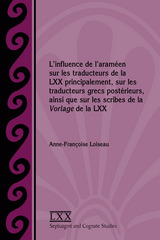 L'influence de l'arameen sur les traducteurs de la LXX principalement sur les traducteurs grecs poste
Anne-Françoise Loiseau
SBL Press, 2016 Further your understanding of the methods and peculiarities of the ancient Greek translators and revisers of the Hebrew Bible Loiseau presents examples of Greek translations of verses from the Hebrew Bible that clearly illustrate the influence of Aramaic or Late Hebrew on the semantics of the Septuagint translators. The author postulates that the Greek translators based their translations on Hebrew-Aramaic equivalents maintained as lists or even on proto-targumim such as those found at Qumran, both predecessors of the later Aramaic targumic translations. Loiseau's examples provide convincing explanations for different coincidences occurring between the Greek translations and the interpretative traditions found in the targumim and help elucidate a number of puzzling translations where two Aramaic words that are very similar graphically or phonetically were erroneously interchanged. Features - Unique insight into ancient Jewish exegesis
- English summary
- The first extensive illustration of the influence of the Aramaic or Late Hebrew on the Septuagint
Lingering Inland: A Literary Tour of the Midwest
Edited by Andy Oler Foreword by José Olivarez
University of Illinois Press, 2025 How do the stories we tell about Midwestern places influence or reflect our experiences? How is the literature of a place or a region relevant to the people who live there? In this expansive anthology, Andy Oler collects 72 original short essays by a diverse array of contemporary writers. Each explores locales in Midwestern literature relevant to the life and work of literary figures and canonical authors such as Toni Morrison and Willa Cather. Lingering in these places in both body and mind, the contributors contemplate the resonances and desires nurtured by their chosen location. Together, the essays take readers on an odyssey that maps our inner longing to connect across vast landscapes. A singular collection of creative nonfiction, Lingering Inland plumbs the personal and collective essence that binds Midwesterners together through words and places.
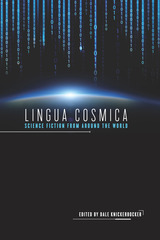 Lingua Cosmica: Science Fiction from around the World
Edited by Dale Knickerbocker
University of Illinois Press, 2018 Anthologies, awards, journals, and works in translation have sprung up to reflect science fiction's increasingly international scope. Yet scholars and students alike face a problem. Where does one begin to explore global SF in the absence of an established canon? Lingua Cosmica opens the door to some of the creators in the vanguard of international science fiction. Eleven experts offer innovative English-language scholarship on figures ranging from Cuban pioneer Daína Chaviano to Nigerian filmmaker Olatunde Osunsanmi to the Hugo Award-winning Chinese writer Liu Cixin. These essays invite readers to ponder the themes, formal elements, and unique cultural characteristics within the works of these irreplaceable—if too-little-known—artists. Dale Knickerbocker includes fantasists and genre-benders pushing SF along new evolutionary paths even as they draw on the traditions of their own literary cultures. Includes essays on Daína Chaviano (Cuba), Jacek Dukaj (Poland), Jean-Claude Dunyac (France), Andreas Eschbach (Germany), Angélica Gorodischer (Argentina), Sakyo Komatsu (Japan), Liu Cixin (China), Laurent McAllister (Yves Meynard and Jean-Louis Trudel, Francophone Canada), Olatunde Osunsanmi (Nigeria), Johanna Sinisalo (Finland), and Arkady and Boris Strugatsky (Russia). Contributors: Alexis Brooks de Vita, Pawel Frelik, Yvonne Howell, Yolanda Molina-Gavilán, Vibeke Rützou Petersen, Amy J. Ransom, Hanna-Riikka Roine, Hanna Samola, Mingwei Song, Tatsumi Takayuki, Juan Carlos Toledano Redondo, and Natacha Vas-Deyres.
Linguistic and Cultural Foreign Policies of European States: 18th-20th Centuries
Edited by Karène Sanchez-Summerer and Willem Frijhoff
Amsterdam University Press, 2017 The policies relating to language pursued by European monarchies and states have been widely studied, but far less attention has been given to their linguistic and cultural policies in territories outside their own borders. This volume takes an interdisciplinary approach to filling that gap, distinguishing and analysing several different types of linguistic and foreign cultural policies. Such policies, the contributors show, tended not to be proclaimed officially, but they nonetheless had lasting effects on both language and culture in Europe and beyond.
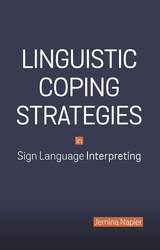 Linguistic Coping Strategies in Sign Language Interpreting
Jemina Napier
Gallaudet University Press, 2016 This ground-breaking work, originally published 15 years ago, continues to serve as the primary reference on the theories of omission potential and translational contact in sign language interpreting. In the book, noted scholar Jemina Napier explores the linguistic coping strategies of interpreters by drawing on her own study of the interpretation of a university lecture from English into Australian Sign Language (Auslan). A new preface by the author provides perspective on the importance of the work and how it fits within the scholarship of interpretation studies.
The concept of strategic omissions is explored here as a tool that is consciously used by interpreters as a coping strategy. Instead of being a mistake, omitting part of the source language can actually be part of an active decision-making process that allows the interpreter to convey the correct meaning when faced with challenges. For the first time, Napier found that omission potential existed within every interpretation and, furthermore, she proposed a new taxonomy of five different conscious and unconscious omission types. Her findings also indicate that Auslan/English interpreters use both a free and literal interpretation approach, but that those who use a free approach occasionally switch to a literal approach as a linguistic coping strategy to provide access to English terminology. Both coping strategies help negotiate the demands of interpretation, whether it be lack of subject-matter expertise, dealing with dense material, or the context of the situation.
Napier also analyzes the interpreters’ reflections on their decision-making processes as well as the university students’ perceptions and preferences of their interpreters’ linguistic choices and styles. Linguistic Coping Strategies in Sign Language Interpreting is a foundational text in interpretation studies that can be applied to interpreting in different contexts and to interpreter training.
Linguistic Databases
Edited by John Nerbonne
CSLI, 1998 Linguistics Databases explains the increasing use of databases in linguistics. Specifically, the works presented in this collection report on database activities in phonetics, phonology, lexicography and syntax, comparative grammar, second-language acquisition, linguistic fieldwork, and language pathology. The volume presents the specialized problems of multi-media (especially audio) and multilingual texts, including those in exotic writing systems. Various implemented solutions are discussed, and the opportunities to use existing, minimally structured text repositories are presented.
The Linguistic Dimension of Kant's Thought: Historical and Critical Essays
Edited by Frank Schalow and Richard Velkley
Northwestern University Press, 2014 Among modern philosophers, Immanuel Kant (1724–1804) has few rivals for his influence over the development of contemporary philosophy as a whole. While the issue of language has become a key fulcrum of continental philosophy since the twentieth century, Kant has been overlooked as a thinker whose breadth of insight has helped to spearhead this advance. The Linguistic Dimension of Kant’s Thought remedies this historical gap by gathering new essays by distinguished Kant scholars. The chapters examine the many ways that Kant’s philosophy addresses the nature of language. Although language as a formal structure of thought and expression has always been part of the philosophical tradition, the “linguistic dimension” of these essays speaks to language more broadly as a practice including communication, exchange, and dialogue.
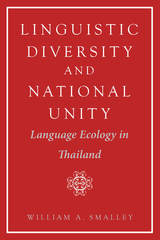 Linguistic Diversity and National Unity: Language Ecology in Thailand
William A. Smalley
University of Chicago Press, 1994 Unlike other multi-ethnic nations, such as Myanmar and India, where official language policy has sparked bloody clashes, Thailand has maintained relative stability despite its eighty languages. In this study of the relations among politics, geography, and language, William A. Smalley shows how Thailand has maintained national unity through an elaborate social and linguistic hierarchy.
Smalley contends that because the people of Thailand perceive their social hierarchy as the normal order, Standard Thai, spoken by members of the higher levels of society, prevails as the uncontested national language. By examining the hierarchy of Thailand's diverse languages and dialects in light of Thai history, education, culture, and religion, Smalley shows how Thailand has been able to keep its many ethnic groups at peace.
Linguistic Diversity and National Unity explores the intricate relationship between language and power and the ways in which social and linguistic rank can be used to perpetuate order.
Linguistic Diversity in Space and Time
Johanna Nichols
University of Chicago Press, 1992 In this ground-breaking book, Johanna Nichols proposes means of describing, comparing, and interpreting linguistic diversity, both genetic and structural, providing the foundations for a theory of diversity based upon population science. This book will interest linguists, archaeologists, and population specialists.
"An awe-inspiring book, unequalled in scope, originality, and the range of language data considered."—Anna Siewierska, Linguistics
"Fascinating. . . . A brilliant pioneering study."—Journal of Indo-European Studies
"A superbly reasoned book."—John A. C. Greppin, Times Literary Supplement
Linguistic Form and Its Computation
Edited by Christian Rohrer, Antje Rossdeutscher, and Hans Kamp
CSLI, 2001 This volume presents results of the Collaborative Research Center "Linguistic Foundations for Computational Linguistics" at the Universities of Stuttgart and Tubingen, whose goal has been to foster interaction between theoretical and computational linguistics. The papers here address topics including syntax, syntax-semantics interface, syntax-pragmatics interface, discourse, methods for lexicon induction, and the challenges of ambiguity.
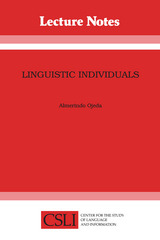 Linguistic Individuals
Almerindo E. Ojeda
CSLI, 1993 The goal of semantics is the insightful identification of the set of meanings that human language can express- the contruction of what has been called the metaphysics of natural language. A formal attempt to contruct such a metaphysics has generally involved identifying a set of individuals referred to as the universe of discourse. Until recently, however, semanticists have had little to say about the structure of this set.
Ojeda argues that the structure of the set of linguistic individuals is a mereology, that is, the domain of discourse is made up of kinds and the instantiations of kinds. His argument forms the four main slections of this work. The first examines the semantics of countability (countable stems, number inflection, adjectives of measure, and determiners); the second explores the semantics of uncountability (the individuation of reference, and non-Boolean mass predicates); the third takes up the semantics of nominality (the mereological homogenetiy of mouns and the constraints on nouns in classifier languages); and the last investigates the semantics of the conceptional neauter, a pronominal category discussed by Otto Jesperson.
Ojeda's investigations contribute to the characterization of linguistiv individuals and proide for a new basis for the semantics of individuation.
Almerindo E. Ojeda is a professor of linguistics at the University of California at Davis.
Center for the Study of Language and Information- Lecture Notes, Number 7
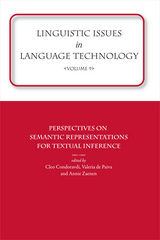 Linguistic Issues in Language Technology Vol 9: Perspectives on Semantic Representations for Textual Inference
Edited by Cleo Condoravdi, Valeria de Paiva, and Annie Zaenen
CSLI, 2014 Linguistic Issues in Language Technology (LiLT) is an open-access journal that focuses on the relationships between linguistic insights and language technology. In conjunction with machine learning and statistical techniques, deeper and more sophisticated models of language and speech are needed to make significant progress in both existing and newly emerging areas of computational language analysis. The vast quantity of electronically accessible natural language data (text and speech, annotated and unannotated, formal and informal) provides unprecedented opportunities for data-intensive analysis of linguistic phenomena, which can in turn enrich computational methods. Taking an eclectic view on methodology, LiLT provides a forum for this work. In this volume, contributors offer new perspectives on semantic representations for textual inference.
Linguistic Science and the Teaching of English
Henry Lee Smith Jr.
Harvard University Press In this work the author discusses recent advances in linguistic science and the applicability of linguistics to the teaching of reading, the structure of English, as well as the relation of the spoken language to literature in the secondary schools and to the teaching of foreign languages throughout the educational system. The importance of the “structure” of the language as essential preparation for all who teach any aspect of the language arts—from reading in the elementary grades to literature and foreign languages in the secondary schools and colleges—is developed thoroughly. An extremely significant point is the application of linguistics to teaching. Henry Lee Smith shows that if a child is not systematically taught the relationship between sound symbol and written symbol when he is ready and eager for it his reading can easily become a serious problem.
The Linguistic Turn: Essays in Philosophical Method
Edited by Richard M. Rorty
University of Chicago Press, 1992 The Linguistic Turn provides a rich and representative introduction to the entire historical and doctrinal range of the linguistic philosophy movement. In two retrospective essays titled "Ten Years After" and "Twenty-Five Years After," Rorty shows how his book was shaped by the time in which it was written and traces the directions philosophical study has taken since.
"All too rarely an anthology is put together that reflects imagination, command, and comprehensiveness. Rorty's collection is just such a book."—Review of Metaphysics
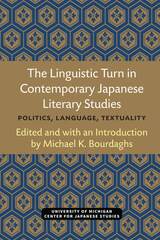 The Linguistic Turn in Contemporary Japanese Literary Studies: Politics, Language, Textuality
Edited and with an Introduction by Michael K. Bourdaghs
University of Michigan Press, 2010 The 1970s and 1980s saw a revolution in Japanese literary criticism. A new generation of scholars and critics, many of them veterans of 1960s political activism, arose in revolt against the largely positivistic methodologies that had hitherto dominated postwar literary studies. Creatively refashioning approaches taken from the field of linguistics, the new scholarship challenged orthodox interpretations, often introducing new methodologies in the process: structuralism, semiotics, and phenomenological linguistics, among others. The radical changes introduced then continue to reverberate today, shaping the way Japanese literature is studied both at home and abroad. The Linguistic Turn in Contemporary Japanese Literary Studies is the first critical study of this revolution to appear in English. It includes translations of landmark essays published in the 1970s and 1980s by such influential figures as Noguchi Takehiko, Kamei Hideo, Mitani Kuniaki, and Hirata Yumi. It also collects nine new essays that reflect critically on the emergence of linguistics-based literary criticism and theory in Japan, exploring both the novel possibilities such theory created and the shortcomings that could not be overcome. Scholars from a variety of disciplines and fields probe the political and intellectual implications of this transformation and explore the exciting new pathways it opened up for the study of modern Japanese literature.
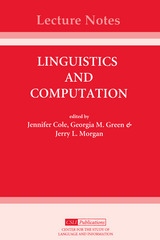 Linguistics and Computation
Edited by Jennifer S. Cole, Georgia M. Green, and Jerry L. Morgan
CSLI, 1995 This volume is a collection covering the diverse areas of psycholinguistics, syntax, computational linguistics and phonology. Abney's paper on Chunks provides an interesting new approach to phrase structure, motivated by psycholinguist data, something that is rarely done. Berwick and Fong provide a history of computational implementations of (Chomskyan) Transformational Grammar. Cole's phonology paper, arguing from Chamorro and English stress that cyclicity is not needed in phonology, is also preceded by a one-and-a-half-page introduction on why this is relevant to computation. Coleman's contribution summarises work on computational phonology and describes the York Talk speech synthesis system. Hirschberg and Sproat's paper describes a system they have written to assign pitch accent to unrestricted text in an RT&T text-to-speech system. This is very much applied natural language processing, but their system represents a more thorough-going attempt at doing this well than has been previously attempted, and this appears to be the first write-up of this work. Johnson and Moss introduce Stratified Feature Grammar, a formal model of language, inspired by Relational Grammar but formalised by using and extending tools developed in the unification grammar community. Finally, Nakazawa extends further Tomita's work so that computer science LR parsing methods can be applied to natural language grammars, here feature-based grammars.
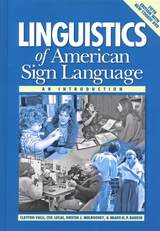 Linguistics of American Sign Language, 5th Ed.: An Introduction
Clayton Valli
Gallaudet University Press, 2011 Completely reorganized to reflect the growing intricacy of the study of ASL linguistics, the 5th edition presents 26 units in seven parts. Part One: Introduction presents a revision of Defining Language and an entirely new unit, Defining Linguistics. Part Two: Phonology has been completely updated with new terminology and examples. The third part, Morphology, features units on building new signs, deriving nouns from verbs, compounds, fingerspelling, and numeral incorporation. Part Four: Syntax includes units on basic sentence types, lexical categories, word order, time and aspect, verbs, and the function of space. The fifth part, Semantics, offers updates on the meanings of individual signs and sentences. Part Six: Language in Use showcases an entirely new section on Black ASL in the unit on Variation and Historical Change. The units on bilingualism and language and ASL discourse have been thoroughly revised and updated, and the Language as Art unit has been enhanced with a new section on ASL in film. Two new readings update Part Seven, and all text illustrations have been replaced by video stills from the expanded video content. Also, signs described only with written explanations in past editions now have both photographic samples in the text and full demonstrations in the video.
You can find the supplemental video content on the Gallaudet University Press YouTube channel.
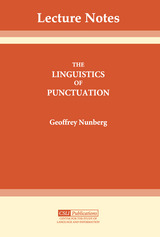 The Linguistics of Punctuation
Geoffrey Nunberg
CSLI, 1990 Geoffrey Nunberg challenges a widespread assumption that the linguistic structure of written languages is qualitatively identical to that of spoken language: It should no longer be necessary to defend the view that written language is truly language, but it is surprising to learn of written-language category indicators that are realized by punctuation marks and other figural devices.' He shows that traditional approaches to these devices tend to describe the features of written language exclusively by analogy to those of spoken language, with the result that punctuation has been regarded as an unsystematic and deficient means for presenting spoken-language intonation. Analysed in its own terms, however, punctuation manifests a coherent linguistic subsystem of 'text-grammar' that coexists in writing with the system of 'lexical grammar' that has been the traditional object of linguistic inquiry. A detailed analysis of the category structure of English text-sentences reveals a highly systematic set of syntactic and presentational rules that can be described in terms independent of the rules of lexical grammar and are largely matters of the tacit knowledge that writers acquire without formal instruction. That these rules obey constraints that are structurally analogous to those of lexical grammar leads Nunberg to label the text-grammar an 'application' of the principles of natural language organization to a new domain. Geoffrey Nunberg is a researcher at Xerox Palo Alto Research Center.
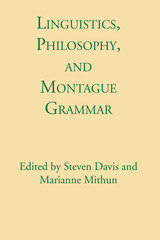 Linguistics, Philosophy, and Montague Grammar
Edited by Steven Davis and Marianne Mithun
University of Texas Press, 1979 This volume presents significant developments in the field of Montague Grammar and outlines its past and future contributions to philosophy and linguistics. The contents are as follows: Introduction by Steven Davis and Marianne Mithun Emmon Bach, "Montague Grammar and Classical Transformational Grammar" Barbara H. Partee, "Constraining Transformational Montague Grammar: A Framework and a Fragment" James D. McCawley, "Helpful Hints to the Ordinary Working Montague Grammarian" Terence Parsons, "Type Theory and Ordinary Language" David R. Dowty, "Dative 'Movement' and Thomason's Extensions of Montague Grammar" Muffy E. A. Siegel, "Measure Adjectives in Montague Grammar" Michael Bennett, "Mass Nouns and Mass Terms in Montague Grammar" Jeroen Groenendijk and Martin Stokhof, "Infinitives and Context in Montague Grammar" James Waldo, "A PTQ Semantics for Sortal Incorrectness"
LingVis: Visual Analytics for Linguistics
Edited by Miriam Butt, Annette Hautli-Janisz, and Verena Lyding
CSLI, 2018 This volume collects landmark research in a burgeoning field of visual analytics for linguistics, called LingVis. Combining linguistic data and linguistically oriented research questions with techniques and methodologies developed in the computer science fields of visual analytics and information visualization, LingVis is motivated by the growing need within linguistic research for dealing with large amounts of complex, multidimensional data sets. An innovative exploration into the future of LingVis in the digital age, this foundational book both provides a representation of the current state of the field and communicates its new possibilities for addressing complex linguistic questions across the larger linguistic community.
 Linkages of Financial Groups in the European Union: Financial Conglomeration Developments in the Old and New Member States
Ingrid Ulst
Central European University Press, 2005 Financial services industry has shown trends of increased consolidation across different types of financial institutions. This book focuses on the conglomeration of banking and insurance activities among financial institutions of the 15 old members of the European Union, and addresses the development and impact of conglomeration linkages between these fifteen and the ten new member states. Most of the large groups combining banking and insurance activities groups among the former member states of the European Union are often linked to the largest such institutions in the new member states, having created the linkages mainly through Merger & Acquisition Activities; with greater accent on the banking sector and lesser connections on insurance side. Financial conglomeration linkages between the EU-15 and the new member states highlight investment attractiveness of the new members, with the appeal of new markets that allow the presence of more participants. Both institution-specific and country-specific factors play role in conglomeration across the new member states.
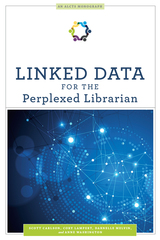 Linked Data for the Perplexed Librarian
Scott Carlson
American Library Association, 2020 Linked data has become a punchline in certain circles of the GLAM (galleries, libraries, archives, and museums) community, derided as a much-hyped project that will ultimately never come to fruition. But the fact is, linked data is already happening now, evident in projects from Big Tech and the Wikimedia Foundation as well as the web pages of library service platforms. The goal of exposing cultural institutions’ records to the web is as important as ever—but for the non-technically minded, linked data can feel like a confusing morass of abstraction, jargon, and acronyms. Get conversant in linked data with this basic introduction from the Association of Library Collections and Technical Services (ALCTS). The book’s expert contributors - summarize the origins of linked data, from early computers and the creation of the World Wide Web through RDF;
- walk readers through the practical, everyday side of creating, identifying, and representing semantically rich linked data using as an example the funk classic Mothership Connection album from the band Parliament;
- explain the concept of ontologies;
- explore such linked data projects as Open Graph, DBpedia, BIBFRAME, and Schema.org’s Bib Extension;
- offer suggested solo and group entry-level projects for linked data-curious librarians who wish to dive deeper; and
- provide a handy glossary and links to additional resources.
This valuable primer on linked data will enable readers at any level of experience to get quickly up to speed on this important subject.
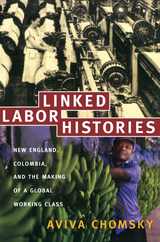 Linked Labor Histories: New England, Colombia, and the Making of a Global Working Class
Aviva Chomsky
Duke University Press, 2008 Exploring globalization from a labor history perspective, Aviva Chomsky provides historically grounded analyses of migration, labor-management collaboration, and the mobility of capital. She illuminates the dynamics of these movements through case studies set mostly in New England and Colombia. Taken together, the case studies offer an intricate portrait of two regions, their industries and workers, and the myriad links between them over the long twentieth century, as well as a new way to conceptualize globalization as a long-term process. Chomsky examines labor and management at two early-twentieth-century Massachusetts factories: one that transformed the global textile industry by exporting looms around the world, and another that was the site of a model program of labor-management collaboration in the 1920s. She follows the path of the textile industry from New England, first to the U.S. South, and then to Puerto Rico, Japan, Mexico, Central America, the Caribbean, and Colombia. She considers how towns in Rhode Island and Massachusetts began to import Colombian workers as they struggled to keep their remaining textile factories going. Most of the workers eventually landed in service jobs: cleaning houses, caring for elders, washing dishes. Focusing on Colombia between the 1960s and the present, Chomsky looks at the Urabá banana export region, where violence against organized labor has been particularly acute, and, through a discussion of the AFL-CIO’s activities in Colombia, she explores the thorny question of U.S. union involvement in foreign policy. In the 1980s, two U.S. coal mining companies began to shift their operations to Colombia, where they opened two of the largest open-pit coal mines in the world. Chomsky assesses how different groups, especially labor unions in both countries, were affected. Linked Labor Histories suggests that economic integration among regions often exacerbates regional inequalities rather than ameliorating them.
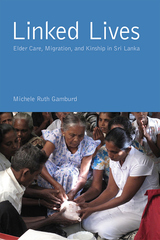 Linked Lives: Elder Care, Migration, and Kinship in Sri Lanka
Michele Ruth Gamburd
Rutgers University Press, 2021 When youth shake off their rural roots and middle-aged people migrate for economic opportunities, what happens to the grandparents left at home? Linked Lives provides readers with intimate glimpses into homes in a Sri Lankan Buddhist village, where elders wisely use their moral authority and their control over valuable property to assure that they receive both physical and spiritual care when they need it. The care work that grandparents do for grandchildren allows labor migration and contributes to the overall well-being of the extended family. The book considers the efforts migrant workers make to build and buy houses and the ways those rooms and walls constrain social activities. It outlines the strategies elders employ to age in place, and the alternatives they face in local old folks’ homes. Based on ethnographic work done over a decade, Michele Gamburd shows how elders face the challenges of a rapidly globalizing world.
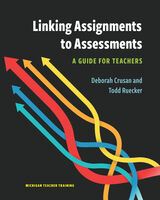 Linking Assignments to Assessments: A Guide for Teachers
Deborah Crusan and Todd Ruecker
University of Michigan Press, 2022 Linking Assignments to Assessments is designed for teachers in training in TESOL programs, future preK–12 teachers, and practicing instructors who need to integrate assessment into classrooms. Educators seeking fair and accessible assessment practices for English learners will find helpful information on language acquisition and differentiated instruction.
The book shares foundational information on the importance of assessment literacy and on how language acquisition, student backgrounds, and language standards need to be considered. Linking Assignments to Assessments offers step-by-step instructions on creating effective assessments for listening and reading, speaking and writing, grammar and vocabulary. Teachers are provided context for understanding standardized assessments and strategies to advocate for and prepare English learners in high-stakes assessment contexts. Each chapter includes activities, discussion questions, and strategies for developing an assessment philosophy to help educators link their theory and practice.
Linking by Types in the Hierarchical Lexicon
Anthony R. Davis
CSLI, 2001 Actions are described by verbs whose subjects, objects, and other complements refer to various participants in those actions. What linguistic principles determine which participants are referred to by each component of a verb?
Many previous approaches to this problem have employed a set of thematic roles, such as agent and patient, to classify varieties of participants. The alternative developed here fits within the framework of Head-Driven Phrase Structure Grammar while utilizing typed feature structures, certain basic features of verb meaning, a hierarchical classification of verb meanings, and constraints from more general to more specific word classes. Relying on no special mechanisms or components of grammar, this book is unique in its ability to account for the observed range of verb types in human languages with a simple yet widely applicable set of principles.
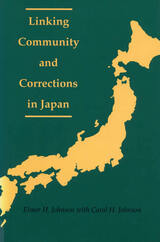 Linking Community and Corrections in Japan
Elmer H. Johnson with Carol H. Jonnson
Southern Illinois University Press, 2000
Completing Elmer H. Johnson’s impressive three-volume examination of corrections in Japan, Linking Community and Corrections in Japan (written with the assistance of Carol H. Johnson) focuses on the Rehabilitation Bureau’s responsibilities regarding probation, parole, and aftercare as well as the Correction Bureau’s role in Japan’s version of community-oriented corrections. Johnson first outlines the tasks of the Rehabilitation Bureau, then turns to historical and contemporary views of community and corrections. In discussions of the probation and parole system for both adults and juveniles, he describes in detail the Japanese version of supervision and the return of prisoners to the community. One strength of this study is Johnson’s impartiality. As an investigator, he functions as a "friend of the court," an adviser who is free to conduct an objective pursuit of the fundamental strengths and shortcomings of the Japanese prison system. He also follows the Foucauldian dictum: "With the prisons there would be no sense of limiting oneself to discourses about prisons; just as important are the discourses which arise within the prison, the decisions and regulations which are among its constituent elements, its means of functioning, along with its strategies."
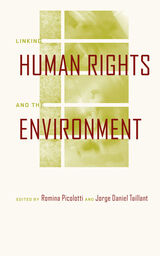 Linking Human Rights and the Environment
Edited by Romina Picolotti and Jorge Daniel Taillant
University of Arizona Press, 2003 All over the world, people are experiencing the effects of ecosystem decline, from water shortages to fish kills to landslides on deforested slopes. The victims of environmental degradation tend to belong to more vulnerable sectors of society—racial and ethnic minorities and the poor—who regularly carry a disproportionate burden of such abuse. Increasingly, many basic human rights are being placed at risk, as the right to health affected by contamination of resources, or the right to property and culture compromised by commercial intrusion into indigenous lands. Despite the evident relationship between environmental degradation and human suffering, human rights violations and environmental degradation have been treated by most organizations and governments as unrelated issues. Just as human rights advocates have tended to place only civil and political rights onto their agendas, environmentalists have tended to focus primarily on natural resource preservation without addressing human impacts of environmental abuse. As a result, victims of environmental degradation are unprotected by the laws and mechanisms established to address human rights abuses. This book brings together contributions from human rights and environmental experts who have devoted much of their work to unifying these two spheres, particularly in the legal arena. It presents a variety of issues and approaches that address human rights and environmental links, demonstrating the growing interrelationship between human rights law and environmental advocacy. Its coverage includes reviews of existing international laws and treaties that establish the rights to a healthy environment, an overview of mechanisms that allow both individuals and groups to seek remedy for abuses, and specific cases that document efforts to seek redress for victims of environmental degradation through existing human rights protection mechanisms. Through examples ranging from water rights to women's rights, this collection offers practical ways in which environmental protection can be approached through human rights instruments. The volume reproduces a legal brief (amicus curiae) filed before an international human rights tribunal making the human rights and environment linkage argument, and includes the subsequent precedent-setting decision handed down by the Inter-American Court on Human Rights recognizing this linkage. Linking Human Rights and Environment is a valuable sourcebook that explores the uncharted territory that lies between environmental and human rights legislation. More than a theoretical treatise, it argues that human rights activism presents a significant opportunity to address the human consequences of environmental degradation and can serve as a catalyst for inspiring ideas and action in the real world.
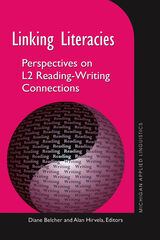 Linking Literacies: Perspectives on L2 Reading-Writing Connections
Diane Belcher and Alan Hirvela, Editors
University of Michigan Press, 2001 Linking Literacies provides the most up to date theoretical overview of the connection between reading and writing in second language acquisition. Belcher and Hirvela have brought together the definitive collection of developments in reading-writing relations research and pedagogy. Papers are organized into these parts:
Ground Practice: Theory, Research, and History
In the Classroom: Teaching Reading as Writing and Writing as Reading
(E)Merging Literacies and the Challenge of Textual Ownership
Technology-Assisted Reading and Writing.
In addition to examining the ways in which L1 influences have affected the development of L2 reading-writing theory and pedagogy, Linking Literacies looks at how L2 reading-writing scholarship has created an identity separate of an L1 framework. Linking Literacies examines a broad range of questions and concerns within the structure of L2 reading-writing connections and L2 academic literacy through discussions of theory, research, and
Links Between Air Quality and Economic Growth: Implications for Pittsburgh
Shanthi Nataraj
RAND Corporation, 2013 This report assesses the evidence that exists for the ways in which local air quality could influence local economic growth through health and workforce issues, quality-of-life issues, or air-quality regulations and business operations. It then extrapolates some of the existing results to the Pittsburgh region.
 Linnaeus: Nature and Nation
Lisbet Koerner
Harvard University Press, 2001 Drawing on letters, poems, notebooks, and secret diaries, Lisbet Koerner tells the moving story of one of the most famous naturalists who ever lived, the Swedish-born botanist and systematizer, Carl Linnaeus. The first scholarly biography of this great Enlightenment scientist in almost one hundred years, Linnaeus also recounts for the first time Linnaeus' grand and bizarre economic projects: to "teach" tea, saffron, and rice to grow on the Arctic tundra and to domesticate buffaloes, guinea pigs, and elks as Swedish farm animals.
Linnaeus hoped to reproduce the economy of empire and colony within the borders of his family home by growing cash crops in Northern Europe. Koerner shows us the often surprising ways he embarked on this project. Her narrative goes against the grain of Linnaean scholarship old and new by analyzing not how modern Linnaeus was, but how he understood science in his time. At the same time, his attempts to organize a state economy according to principles of science prefigured an idea that has become one of the defining features of modernity. Meticulously researched, and based on archival data, Linnaeus will be of compelling interest to historians of the Enlightenment, historians of economics, and historians of science. But this engaging, often funny, and sometimes tragic portrait of a great man will be valued by general readers as well.
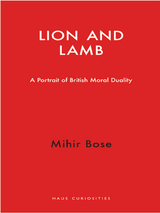 Lion and Lamb: A Portrait of British Moral Duality
Mihir Bose
Haus Publishing, 2018 The great British dilemma is this: Britain is a country forever wrestling with two moral sides—whether to be viewed as a lion that roars and conquers, or a gentle lamb that gambols happily. In the days of the empire, one face meant the Magna Carta, Habeas Corpus, the Mother of Parliaments, and the country that harbored people forced to flee their homelands. But there also was an imperial face, where colonial subjects were made very aware that the British knew how to ensure obedience, even if that required the use of brutal force. Brexit has once again highlighted these dualities.
In Britain’s Eternal Dilemma, Mihir Bose shows how those who voted to leave the E.U. want Britain to roar like a lion. In contrast, the Remainers saw Brexit as a self-inflicted wound, believing the only option is to live symbiotically with the rest of Europe for a common future. Writing from the unique perspective of an immigrant, Bose personifies this ongoing debate: He has experienced racism in his near half century in Britain, but he has also been provided unimaginable opportunities to become a writer, opportunities he would never have had in his native India. This timely book demonstrates that Britain is still wresting with its two-sided identity while also showing that Brexit is still the number one priority on the European political agenda.
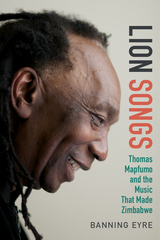 Lion Songs: Thomas Mapfumo and the Music That Made Zimbabwe
Banning Eyre
Duke University Press, 2015 Like Fela Kuti and Bob Marley, singer, composer, and bandleader Thomas Mapfumo and his music came to represent his native country's anticolonial struggle and cultural identity. Mapfumo was born in 1945 in what was then the British colony of Rhodesia (now Zimbabwe). The trajectory of his career—from early performances of rock 'n' roll tunes to later creating a new genre based on traditional Zimbabwean music, including the sacred mbira, and African and Western pop—is a metaphor for Zimbabwe's evolution from colony to independent nation. Lion Songs is an authoritative biography of Mapfumo that narrates the life and career of this creative, complex, and iconic figure. Banning Eyre ties the arc of Mapfumo's career to the history of Zimbabwe. The genre Mapfumo created in the 1970s called chimurenga, or "struggle" music, challenged the Rhodesian government—which banned his music and jailed him—and became important to Zimbabwe achieving independence in 1980. In the 1980s and 1990s Mapfumo's international profile grew along with his opposition to Robert Mugabe's dictatorship. Mugabe had been a hero of the revolution, but Mapfumo’s criticism of his regime led authorities and loyalists to turn on the singer with threats and intimidation. Beginning in 2000, Mapfumo and key band and family members left Zimbabwe. Many of them, including Mapfumo, now reside in Eugene, Oregon. A labor of love, Lion Songs is the product of a twenty-five-year friendship and professional relationship between Eyre and Mapfumo that demonstrates Mapfumo's musical and political importance to his nation, its freedom struggle, and its culture.
Lionel Trilling and the Fate of Cultural Criticism
Mark Krupnick
Northwestern University Press, 1986 Lionel Trilling was one of the twentieth century's most widely read and influential American literary critics. Mark Krupnick traces Trilling’s career from the 1920s through the 1970s, following the shifting intellectual and ideological currents in his thought. Krupnick places Trilling’s criticism and fiction in the context of his New York intellectual group, illuminating the connection between Trilling’s preoccupation with self-definition and his struggle to achieve a cultural overview in a period marked by contradictions, polarizations, and reversals. He provides not only the best single assessment of Trilling but also an incisive history of American literary criticism through the mid-twentieth century.
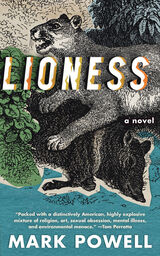 Lioness: A Novel
Mark Powell
West Virginia University Press, 2022 “Emotionally wrenching. . . . Haunting (and haunted) in the best possible way.” —Kirkus Reviews (starred review)
“Darkly compelling.” —Tom Perrotta In the fall of 2018, a bomb goes off at a water-bottling plant in the mountains of southwest Virginia, an incident the FBI declares an act of ecoterrorism. Arrested at the scene is Chris Bright, a mountain hermit with a long history of activism. Unaccounted for—and presumed dead—is Mara Wood, an installation artist who in the last two years has lost her son and left her husband. But Mara’s estranged husband David cannot quite believe she is dead, and as he goes about reconstructing the story of what happened, he begins to imagine an alternate narrative—one in which their son doesn’t die and his wife doesn’t leave him, one in which his wife doesn’t carry on a secret relationship with Chris Bright, a man bent on fighting back against the environmental despoliation of his Appalachian home. Lioness is a page-turning, heart-wrenching examination of extremism: What pushes people to act violently, and is that violence ever justified?
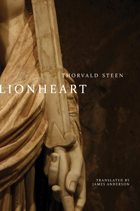 Lionheart
Thorvald Steen
Seagull Books, 2012 Richard I (1157–99) was king of England from 1189 until his death, but he is best known as a soldier, not a monarch. He earned his moniker Richard the Lionheart as a knight and military leader, and his revolt against his father Henry II and his conquest of Cyprus as part of the Crusades helped to solidify his historical legend. In Lionheart, Norwegian author Thorvald Steen, celebrated for his historical novels, brings his characteristic accuracy and artistic vision to the life of Richard I. Lionheart is the story of a man living in the shadow of his own myth, also a fanatic general who wants to conquer the world’s greatest sanctum and a king that is suddenly vulnerable. At the age of fifteen he leads an army against his father. Fourteen years later he is the Pope’s obvious choice to lead the third Crusade. But the Richard of Steen’s novel is less sure of himself and his role—is it true that he is God’s chosen one, like his mother says? Built on extensive research, Steen paints a dark and conflicted, yet credible and convincing, portrait of a man who has engrossed historians, poets, novelists and readers for centuries. "Thorvald Steen’s new novel Lionheart is a fascinating read. . . . Steen manages to give flesh and blood to a historical icon, and creates a story with energy, dressed in sober yet sublime language."—Dagsavisen, on the Norwegian edition
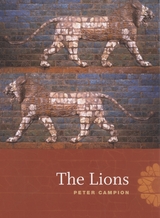 The Lions
Peter Campion
University of Chicago Press, 2009 Big Avalanche Ravine Just the warning light on a blue crane. Just mountains. Just the mist that skimmed them both and bled to silver rain lashing the condominiums. But there it sank on me. This urge to carve a life from the long expanse. To hold some ground against the surge of sheer material. It was a tense and persistent and metallic shiver. And it stayed, that tremor, small and stark as the noise of the hidden river fluming its edge against the dark. In his second collection of poems, Peter Campion writes about the struggle of making a life in America, about the urge “to carve a space” for love and family from out of the vast sweep of modern life. Coursing between the political and personal with astonishing ease, Campion writes at one moment of his disturbing connection to the public political structure, symbolized by Robert McNamara (who makes a startling appearance in the title poem), then in the next, of a haunting reverie beneath a magnolia tree, representing his impulse to escape the culture altogether. He moves through various forms just as effortlessly, as confident in rhymed quatrains as in slender, tensed free verse. In The Lions, Campion achieves a fusion of narrative structure and lyric intensity that proves him to be one of the very best poets of his generation. Praise for Other People “Campion is a poet who knows that what a poet sees is nothing without a mixture of formal prowess and emotional insight.”—David Biespiel, The Oregonian
Lions
Hans Blumenberg
Seagull Books, 2020 For distinguished philosopher Hans Blumenberg, lions were a life-long obsession. Lions, translated by Kári Driscoll, collects thirty-two of Blumenberg’s philosophical vignettes to reveal that the figure of the lion unites two of his other great preoccupations: metaphors and anecdotes as non-philosophical forms of knowledge.
Each of these short texts, sparkling with erudition and humor, is devoted to a peculiar leonine presence—or, in many cases, absence—in literature, art, philosophy, religion, and politics. From Ecclesiastes to the New Testament Apocrypha, Dürer to Henri Rousseau, Aesop and La Fontaine to Rilke and Thomas Mann, the extraordinary breadth of Blumenberg’s knowledge and intellectual curiosity is on full display. Lions has much to offer readers, both those already familiar with Blumenberg’s oeuvre and newcomers looking for an introduction to the thought of one of Germany’s most important postwar philosophers.
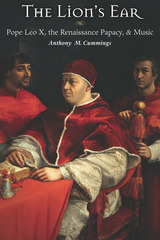 The Lion's Ear: Pope Leo X, the Renaissance Papacy, and Music
Anthony M. Cummings
University of Michigan Press, 2022 For centuries, the Renaissance papacy has been celebrated for its generous patronage of the arts. Pope Leo X, son of the legendary Lorenzo "the Magnificent" de'Medici, is widely understood to be one of the greatest patrons of music in European history, and one of the emblematic figures of the Italian Renaissance. The Lion's Ear is the first full-length scholarly treatment of the musical patronage of a Renaissance pope and provides an evocative picture of the musical life of the pre-Reformation papacy. The various uses of music in early modern Rome---music for public festivals, such as carnival; for the liturgical ceremonies of the Sistine Chapel; to accompany daily dining and festive banqueting; for the celebration of saints' feast days; and for theatrical performances---are vividly described and analyzed and give a detailed understanding of the place of music in the life of one of its most important early modern benefactors. Anthony M. Cummings takes an interdisciplinary approach to his subject matter, bringing together the history of music, art, philosophy, and ecclesiastical history to locate the music in its broadest and deepest contexts. Through materials such as diplomatic correspondence, the book aims to reconstruct the atmosphere of the musical life in Leo X's court, presenting the subject matter in a way that will appeal to scholars and students of musicology and early modern history. Art historians, ecclesiastical historians, and specialists from many other disciplines have long produced scholarly findings useful for understanding the pre-Reformation papacy, its alliance with the Italian Renaissance, and the extraordinary artistic legacy of that alliance. Anthony M. Cummings complements that scholarship with his thorough and imaginative account of music's relationship with that vibrant and fascinating culture, the first by a specialist in the musical life of early modern Europe.
 The Lion's Historian: Africa's Animal Past
Sandra Swart
Ohio University Press, 2025 “Until the lion has a historian of his own, the tale of the hunt will always glorify the hunter.” Sandra Swart takes up the challenge of that African proverb and, with this book, becomes the lion’s historian. As a species, humans are not alone; but our history has been written as though we were. Swart insists on a multispecies retelling of our more-than-human past as she reconstructs a shifting series of significant interspecies relationships, from quirky, idiosyncratic connections to others that triggered major changes. Embracing a radical interdisciplinarity informed by a background in history and environmental studies, Swart combines the natural sciences with the social sciences, oral history, indigenous knowledge, and archival research. She blends current thinking about animal sentience, agency, cognition, and emotion to offer a new way to understand animals’ role in our shared history. The animals in this book—baboons, cows, elephants, hippos, horses, jackals, lions, Nazi cattle, okapi, police dogs, quagga, sheep, and white ants—exemplify different facets of our shared past. With this animal-centric lens, decades of research are brought together in a collection that takes animals seriously. It is a book with claws and fangs, tearing through conventional narratives to ask, Are we prepared to move beyond the convention that “history” is the story of only our own species? The entanglements between humans and other animals have shaped our past, but they suggest something more. The possibility of our shared future pivots on a reckoning with our shared pasts. Swart shows what human-animal history can do, not only to understand our place in the world better but to make our world—however slightly—a better place.
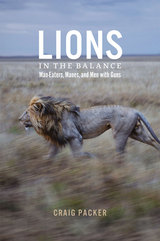 Lions in the Balance: Man-Eaters, Manes, and Men with Guns
Craig Packer
University of Chicago Press, 2015 If you are a morani (warrior), you have your spear at the ready—you could be the hero, but you will have to wait until the morning light before you can go out and prove yourself. If it is a lion, you want to be the first to spear it—and if the lion turns on you, make sure it mauls you on your chest or stomach, on your face, shins, or throat. Any place where you can show your scars with pride, show the incontrovertible evidence of courage. A scar on your back would be a permanent reminder of cowardice, an ineradicable trace of shame.
Monsters take many forms: from man-eating lions to the people who hunt them, from armed robbers to that midnight knock at the door of a cheap hotel room in Dar es Salaam. And celebrated biologist Craig Packer has faced them all. Head on.
With Lions in the Balance, Packer takes us back into the complex, tooth-and-claw world of the African lion, offering revealing insights into both the lives of one of the most iconic and dangerous animals on earth and the very real risks of protecting them. A sequel to his prize-winning Into Africa—which gave many readers their first experience of fieldwork in Africa, of cooperative lions on dusty savannas, and political kidnappings on the shores of Lake Tanganyika—this new diary-based chronicle of cutting-edge research and heartbreaking corruption will both alarm and entertain. Packer’s story offers a look into the future of the lion, one in which the politics of conservation will require survival strategies far more creative and powerful than those practiced anywhere in the world today.
Packer is sure to infuriate millionaires, politicians, aid agencies, and conservationists alike as he minces no words about the problems he encounters. But with a narrative stretching from far flung parts of Africa to the corridors of power in Washington, DC, and marked by Packer’s signature humor and incredible candor, Lions in the Balance is a tale of courage against impossible odds, a masterly blend of science, adventure, and storytelling, and an urgent call to action that will captivate a new generation of readers.
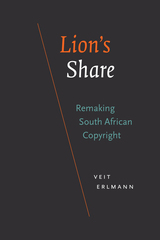 Lion's Share: Remaking South African Copyright
Veit Erlmann
Duke University Press, 2022 In the aftermath of apartheid, South Africa undertook an ambitious revision of its intellectual property system. In Lion’s Share Veit Erlmann traces the role of copyright law in this process and its impact on the South African music industry. Although the South African government tied the reform to its postapartheid agenda of redistributive justice and a turn to a postindustrial knowledge economy, Erlmann shows how the persistence of structural racism and Euro-modernist conceptions of copyright threaten the viability of the reform project. In case studies ranging from antipiracy police raids and the crafting of legislation to protect indigenous expressive practices to the landmark lawsuit against Disney for its appropriation of Solomon Linda’s song "Mbube" for its hit “The Lion Sleeps Tonight” from The Lion King, Erlmann follows the intricacies of musical copyright through the criminal justice system, parliamentary committees, and the offices of a music licensing and royalty organization. Throughout, he demonstrates how copyright law is inextricably entwined with race, popular music, postcolonial governance, indigenous rights, and the struggle to create a more equitable society.
 Lipstick Traces: A Secret History of the Twentieth Century
Greil Marcus
Harvard University Press, 1989 Greil Marcus, author of Mystery Train, widely acclaimed as the best book ever written about America as seen through its music, began work on this new book out of a fascination with the Sex Pistols: that scandalous antimusical group, invented in London in 1975 and dead within two years, which sparked the emergence of the culture called punk. "I am an antichrist!" shouted singer Johnny Rotten--where in the world of pop music did that come from? Looking for an answer, with a high sense of the drama of the journey, Marcus takes us down the dark paths of counterhistory, a route of blasphemy, adventure, and surprise.
This is no mere search for cultural antecedents. Instead, what Marcus so brilliantly shows is that various kinds of angry, absolute demands--demands on society, art, and all the governing structures of everyday life--seem to be coded in phrases, images, and actions passed on invisibly, but inevitably, by people quite unaware of each other. Marcus lets us hear strange yet familiar voices: of such heretics as the Brethren of the Free Spirit in medieval Europe and the Ranters in seventeenth-century England; the dadaists in Zurich in 1916 and Berlin in 1918, wearing death masks, chanting glossolalia; one Michel Mourre, who in 1950 took over Easter Mass at Notre-Dame to proclaim the death of God; the Lettrist International and the Situationist International, small groups of Paris--based artists and writers surrounding Guy Debord, who produced blank-screen films, prophetic graffiti, and perhaps the most provocative social criticism of the 1950s and '60s; the rioting students and workers of May '68, scrawling cryptic slogans on city walls and bringing France to a halt; the Sex Pistols in London, recording the savage "Anarchy in the U.K." and "God Save the Queen."
Although the Sex Pistols shape the beginning and the end of the story, Lipstick Traces is not a book about music; it is about a common voice, discovered and transmitted in many forms. Working from scores of previously unexamined and untranslated essays, manifestos, and filmscripts, from old photographs, dada sound poetry, punk songs, collages, and classic texts from Marx to Henri Lefebvre, Marcus takes us deep behind the acknowledged events of our era, into a hidden tradition of moments that would seem imaginary except for the fact that they are real: a tradition of shared utopias, solitary refusals, impossible demands, and unexplained disappearances. Written with grace and force, humor and an insistent sense of tragedy and danger, Lipstick Traces tells a story as disruptive and compelling as the century itself.
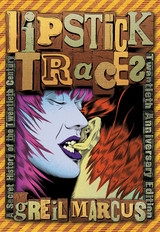 Lipstick Traces: A Secret History of the Twentieth Century, Twentieth Anniversary Edition
Greil Marcus
Harvard University Press, 2009 Greil Marcus, author of Mystery Train, widely acclaimed as the best book ever written about America as seen through its music, began work on this new book out of a fascination with the Sex Pistols: that scandalous antimusical group, invented in London in 1975 and dead within two years, which sparked the emergence of the culture called punk. “I am an antichrist!” shouted singer Johnny Rotten—where in the world of pop music did that come from? Looking for an answer, with a high sense of the drama of the journey, Marcus takes us down the dark paths of counterhistory, a route of blasphemy, adventure, and surprise.
This is no mere search for cultural antecedents. Instead, what Marcus so brilliantly shows is that various kinds of angry, absolute demands—demands on society, art, and all the governing structures of everyday life—seem to be coded in phrases, images, and actions passed on invisibly, but inevitably, by people quite unaware of each other. Marcus lets us hear strange yet familiar voices: of such heretics as the Brethren of the Free Spirit in medieval Europe and the Ranters in seventeenth-century England; the dadaists in Zurich in 1916 and Berlin in 1918, wearing death masks, chanting glossolalia; one Michel Mourre, who in 1950 took over Easter Mass at Notre-Dame to proclaim the death of God; the Lettrist International and the Situationist International, small groups of Paris—based artists and writers surrounding Guy Debord, who produced blank-screen films, prophetic graffiti, and perhaps the most provocative social criticism of the 1950s and ’60s; the rioting students and workers of May ’68, scrawling cryptic slogans on city walls and bringing France to a halt; the Sex Pistols in London, recording the savage “Anarchy in the U.K.” and “God Save the Queen.”
Although the Sex Pistols shape the beginning and the end of the story, Lipstick Traces is not a book about music; it is about a common voice, discovered and transmitted in many forms. Working from scores of previously unexamined and untranslated essays, manifestos, and filmscripts, from old photographs, dada sound poetry, punk songs, collages, and classic texts from Marx to Henri Lefebvre, Marcus takes us deep behind the acknowledged events of our era, into a hidden tradition of moments that would seem imaginary except for the fact that they are real: a tradition of shared utopias, solitary refusals, impossible demands, and unexplained disappearances. Written with grace and force, humor and an insistent sense of tragedy and danger, Lipstick Traces tells a story as disruptive and compelling as the century itself.
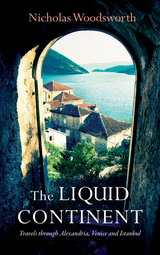 The Liquid Continent: Travels through Alexandria, Venice and Istanbul
Nicholas Woodsworth
Haus Publishing, 2016 This omnibus edition brings together Nicholas Woodsworth’s critically acclaimed Mediterranean trilogy into a single volume for the first time, allowing readers to fully appreciate the scope of Woodsworth’s search for a distinctively Mediterranean “cosmopolitanism.” Combining travel narrative, history, and reflection on contemporary lives and cultures, Woodsworth finds an intimacy, a garrulous warmth, and an extraordinary sociability as he travels from Alexandria through Venice and finally installs himself in a former Benedictine monastery in Istanbul overlooking the Golden Horn. Responding to this experience, he argues that the sea should not be seen as an empty space surrounded by Europe, Asia, and Africa, but rather as a single entity, a place from whose coastlines people look inwards over the water to each other—for it has its own cities, its own life, its own way of being.
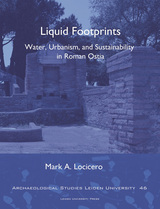 Liquid Footprints: Water Urbanism, and Sustainability in Roman Ostia
Mark Locicero
Leiden University Press, 2019 Liquid Footprints examines the archaeological evidence from three city blocks in Ostia, focusing on elements of the water systems identified by past excavations and within unpublished archival material. Inspired by the diversity of research approaches currently used to assess the sustainability of water in contemporary cities, this study developed the Roman Water Footprint, which diachronically assesses changes to all parts of a hydraulic system (supply, usage, drainage). At the same time, the Roman Water Footprint calculates socio-cultural expressions of water usage, and uses paleo-environmental data to highlight the dynamic natural presence of water. The use of the Roman Water Footprint offers a new look at the wider context of ancient water systems and how they changed over time. This study opens a dialogue between first and twenty first century successes and failures in our urban relationship with water.
Liquid Paper: New and Selected Poems
Peter Meinke
University of Pittsburgh Press, 1991 Peter Meinke was a master of traditional poetic forms long before the current interest in “the new formalism.” His work is, in turn, witty, comic, sane, deeply moving, and always readable. Liquid Paper collects the best of his previously published poems from the late 1960s on with a generous selection of new work.
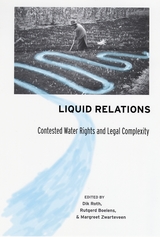 Liquid Relations: Contested Water Rights and Legal Complexity
Roth, Dik
Rutgers University Press, 2005 Water management plays an increasingly critical role in national and international policy agendas. Growing scarcity, overuse, and pollution, combined with burgeoning demand, have made socio-political and economic conflicts almost unavoidable. Proposals to address water shortages are usually based on two key assumptions: (1) water is a commodity that can be bought and sold and (2) “states,” or other centralized entities, should control access to water.
Liquid Relations criticizes these assumptions from a socio-legal perspective. Eleven case studies examine laws, distribution, and irrigation in regions around the world, including the United States, Nepal, Indonesia, Chile, Ecuador, India, and South Africa. In each case, problems are shown to be both ecological and human-made. The essays also consider the ways that gender, ethnicity, and class differences influence water rights and control.
In the concluding chapter, the editors draw on the essays’ findings to offer an alternative approach to water rights and water governance issues. By showing how issues like water scarcity and competition are embedded in specific resource use and management histories, this volume highlights the need for analyses and solutions that are context-specific rather than universal.
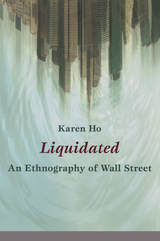 Liquidated: An Ethnography of Wall Street
Karen Ho
Duke University Press, 2009 Financial collapses—whether of the junk bond market, the Internet bubble, or the highly leveraged housing market—are often explained as the inevitable result of market cycles: What goes up must come down. In Liquidated, Karen Ho punctures the aura of the abstract, all-powerful market to show how financial markets, and particularly booms and busts, are constructed. Through an in-depth investigation into the everyday experiences and ideologies of Wall Street investment bankers, Ho describes how a financially dominant but highly unstable market system is understood, justified, and produced through the restructuring of corporations and the larger economy. Ho, who worked at an investment bank herself, argues that bankers’ approaches to financial markets and corporate America are inseparable from the structures and strategies of their workplaces. Her ethnographic analysis of those workplaces is filled with the voices of stressed first-year associates, overworked and alienated analysts, undergraduates eager to be hired, and seasoned managing directors. Recruited from elite universities as “the best and the brightest,” investment bankers are socialized into a world of high risk and high reward. They are paid handsomely, with the understanding that they may be let go at any time. Their workplace culture and networks of privilege create the perception that job insecurity builds character, and employee liquidity results in smart, efficient business. Based on this culture of liquidity and compensation practices tied to profligate deal-making, Wall Street investment bankers reshape corporate America in their own image. Their mission is the creation of shareholder value, but Ho demonstrates that their practices and assumptions often produce crises instead. By connecting the values and actions of investment bankers to the construction of markets and the restructuring of U.S. corporations, Liquidated reveals the particular culture of Wall Street often obscured by triumphalist readings of capitalist globalization.
|
|
